
The Best Things to Do in Managua

There was a time when travellers skipped Nicaragua’s hectic capital and headed straight from the airport to the colonial city of Granada to start their trip, enveloped in the warm pastel delights of its colourful cobblestoned streets. But things are changing. Managua is getting a tourist-friendly makeover that has breathed bright new life into the once forlorn downtown area and spruced up the lakeshore promenade with shiny new attractions. This is Managua’s moment and here are the best things to see and do in the city.
Chosen as the capital of Nicaragua in 1852 as a compromise to end the squabbling between the rival cities of Granada and Leon, Managua is a late bloomer that was tragically stopped in its tracks by a devastating earthquake in 1972, effectively leaving a hole where the city’s heart should be. Now, ambitious infrastructure projects, modern malls, and promenade parks along the lake shore are bringing Managua back to life and giving Nicaragua’s growing number of tourists a reason to stay and explore.
Stand with Sandino on Loma de Tiscapa

The best place to get your bearings in Managua is at the highest point in the city, the hill of Tiscapa, which is actually the lip of an extinct volcano. This was where the cruel dictator Anastasio Somoza Garcia had his elegant Moorish palace and his sadistic torture rooms. In a form of exorcism, a giant silhouette of national hero General Augusto Calderón Sandino has been erected and now dominates the skyline on the spot where the dictator’s palace once stood. The panoramic views take in the Tiscapa lagoon, the surprisingly leafy city, and the wide expanse of Lago Xolotlán (Lake Managua). Check out the tiny tank given to Somoza by Italian dictator Benito Mussolini, and don’t miss the underground room dedicated to Sandino’s life, his fight to free his homeland from US intervention, and his mysterious death at the hands of Somoza.

With its cracked walls, wonky bell towers and a gutted interior, the neo-Baroque Santiago Cathedral is one of the few buildings that survived the deadly 1972 quake that flattened downtown Managua. It is now closed to the public for safety reasons but remains an iconic symbol of the city and is a much-Instagrammed landmark. As part of the regeneration of the area around the Plaza de la Revolucion the cathedral is now lit up at night by surreal swathes of electric neon in perfect harmony with the curvy metal trees in acid colours that lead down to the lake. Opposite the cathedral is the austere white tomb of Sandinista hero Carlos Fonseca, and a suitably romantic marble monument to the poet Rubén Darío, the father of Latin American modernism.

Become a Culture Tripper!
Sign up to our newsletter to save up to 500$ on our unique trips..
See privacy policy .
Immerse yourself in Nicaraguan culture

Opposite the old cathedral is the Palacio Nacional de la Cultura, where the country’s cultural treasures are housed. This was once the National Congress, and upstairs is a plaque honouring the daring Sandinistas who on 22 August 1978 burst into the building and took the congressmen hostage, eventually securing the release of Sandinista prisoners and a tidy amount in cash. Downstairs there is an eclectic display of pre-Columbian statues and ceramics, wooden dance masks from around the country, and exhibits of contemporary artists. In the late afternoon, head to the back of the building, where illuminated water fountains gush on and off in time to the music while local kids dance around in the multi-coloured spray.
Promenade along the Paseo Xolotlán
The most popular spot in Managua for families, this lakeside promenade is just a short walk from the Plaza de la Revolución and is a symbol of the dramatic regeneration that has taken place in the city in recent years. It features a stationary 737 plane that you can board for photos, a miniature model of pre-earthquake Managua, larger models of Nicaragua’s 35 most iconic churches, a new water park for kids, and kiosks selling snacks. With a relaxed, friendly vibe and a kitschy colour scheme, there is no better place for people watching.
Take in the lake at Puerto Salvador Allende

At the western end of the three kilometre malecón (lakeside promenade) is a buzzing area of restaurants and food kiosks. Busy at lunch times and early evenings, it gets packed at weekends, when there is always at least one bar with live music. Those with a need for speed can try out the brand new go-kart track, the biggest in Central America. There are also double-decker boats that do short trips on Lago Xolotlán. After a busy day’s sightseeing, this is the place to sit under the palms, enjoy an ice-cold Toña, Nicaragua’s favourite beer, and watch the sun set over the lake.
Go souvenir shopping at a local market

Nicaraguans still do most of their shopping at the local market, and Managua is no exception. The huge Mercado Oriental is piled high with everything you could imagine a market might stock, but negotiating its labyrinth of covered stalls might be too much for a first-timer. Mercado Roberto Huembes is better-tailored to tourists, combining a food and clothes market with a section selling handicrafts, baskets, and leather goods from all over the country. Haggling over the price is expected, and a cheeky smile will get you a better bargain than a poker face. The fresh food section offers an Aladdin’s Cave of exotic fruits to savour, like nancites , jocotes , and coyolitos .
Eat like a local
For a night out, follow the Managuans in their Sunday best for a stroll around Galerias de Santo Domingo, a swanky shopping mall with an area of sports bars and restaurants out back. With a combination of US chains like Papa Johns and local eateries serving seafood, steaks and sushi, there’s plenty of choice here. If you want a taste of traditional Nicaraguan food head to the Cocina de Doña Haydée, which offers a wide range of regional dishes such as Indio Viejo and vigorón . Most Managuans indulge their passion for barbecued beef, pork, and chicken at roadside grills called fritangas . The best place to get the fritanga experience at a sit-down restaurant is at the ever-popular Asados de Doña Tania.
Trek to a waterfall to peek at parakeets
In Ticuantepe, just 25 minutes from downtown Managua, the Chocoyero-El Brujo Natural Reserve is a haven for Pacific parakeets and a paradise for birdwatchers. The seven kilometre dirt road from the highway to the park entrance passes through partially-forested farmland where fields of pineapples are bordered by shade coffee, and tentacled cacti give birth to bright purple pitahaya (dragon fruit). On the short trek to the El Brujo waterfall you can usually hear – and sometimes see – howler monkeys. But it’s the dusk arrival of hundreds of pairs of chattering parakeets to their nests in the cliffs that makes the experience so magical.
Drive up to the crater of an active volcano

Parque Nacional Volcán Masaya is Nicaragua’s top tourist attraction and the only place in the world you can drive to the rim of an active volcano, smell the sulphor whispering up from its entrails, and stare down into a bubbling lake of lava. Spanish priests dubbed the crater La Boca del Infierno (the Mouth of Hell), after learning that the local Nindiri people would cast young maidens alive into the bubbling magma to appease an easily-angered volcano god. Come in the evening for a night tour to see the vast crater glowing red.
For more inspiration, check out the list of places you need to visit in all of Nicaragua .

KEEN TO EXPLORE THE WORLD?
Connect with like-minded people on our premium trips curated by local insiders and with care for the world
Since you are here, we would like to share our vision for the future of travel - and the direction Culture Trip is moving in.
Culture Trip launched in 2011 with a simple yet passionate mission: to inspire people to go beyond their boundaries and experience what makes a place, its people and its culture special and meaningful — and this is still in our DNA today. We are proud that, for more than a decade, millions like you have trusted our award-winning recommendations by people who deeply understand what makes certain places and communities so special.
Increasingly we believe the world needs more meaningful, real-life connections between curious travellers keen to explore the world in a more responsible way. That is why we have intensively curated a collection of premium small-group trips as an invitation to meet and connect with new, like-minded people for once-in-a-lifetime experiences in three categories: Culture Trips, Rail Trips and Private Trips. Our Trips are suitable for both solo travelers, couples and friends who want to explore the world together.
Culture Trips are deeply immersive 5 to 16 days itineraries, that combine authentic local experiences, exciting activities and 4-5* accommodation to look forward to at the end of each day. Our Rail Trips are our most planet-friendly itineraries that invite you to take the scenic route, relax whilst getting under the skin of a destination. Our Private Trips are fully tailored itineraries, curated by our Travel Experts specifically for you, your friends or your family.
We know that many of you worry about the environmental impact of travel and are looking for ways of expanding horizons in ways that do minimal harm - and may even bring benefits. We are committed to go as far as possible in curating our trips with care for the planet. That is why all of our trips are flightless in destination, fully carbon offset - and we have ambitious plans to be net zero in the very near future.

Places to Stay
The best boutique resorts in nicaragua.

The Best Hotels in Nicaragua for Every Traveler

The Best Hotels in Granada, Nicaragua

Where to Stay in Granada, Nicaragua

The Best Bed and Breakfasts in Nicaragua

See & Do
How to go volcano boarding in nicaragua.

Bars & Cafes
The best wine bars in nicaragua.

The Best Markets to Visit in Nicaragua

Managua: Why This Hidden Gem Deserves to be Explored

Guides & Tips
11 nicaraguan words and phrases you need to know, the most beautiful historical towns and cities in nicaragua.

The Story Behind How Nicaragua Got its Name
- Post ID: 1548661
- Sponsored? No
- View Payload

- Ultimate Guide Managua 21 Best things to do
- North America
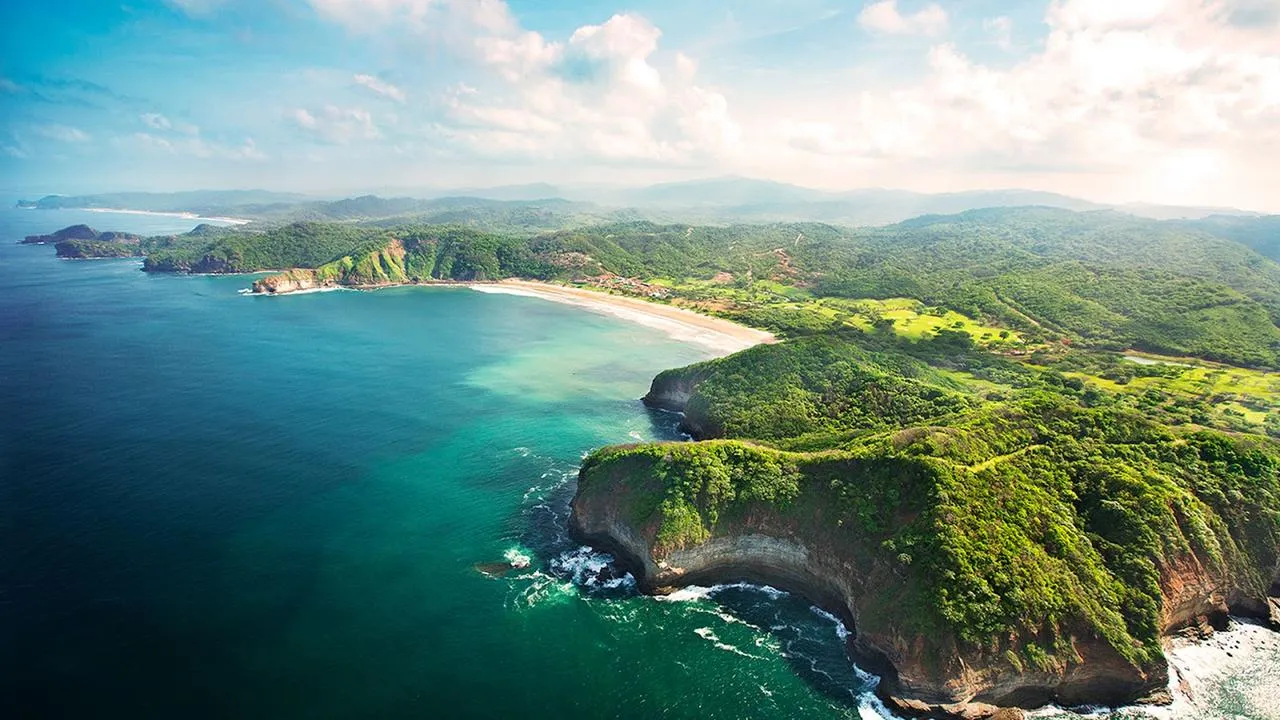
Welcome to the vibrant capital city of Nicaragua – Managua! Get ready to explore this bustling metropolis with my ultimate guide to the best things to do. Discover the rich history and culture at the National Palace of Culture and the Antigua Cathedral. Experience the local life at the lively markets of Mercado Oriental and Mercado Huembes. For a nature escape, head to Tiscapa Lagoon Natural Reserve for stunning views. Don’t miss the chance to try authentic Nicaraguan cuisine at local eateries. Need relaxation? Visit the tranquil Xiloá Lagoon for a day of leisure. From exploring historical sites to indulging in local flavors, Managua has it all. Get ready to make unforgettable memories in this captivating city! Keywords: What to see in Managua, What to visit in Managua
Plaza Inter
Montelimar beach, managua hill, parque las piedrecitas, plaza la fe, loma de tiscapa, old cathedral of managua, parque las palmas, ruben dario national theater, national museum of nicaragua, mall galerias santo domingo, teatro nacional ruben dario, tiscapa lagoon natural reserve, lake managua, plaza espana, puerto salvador allende, managua cathedral, metropolitan cathedral of managua, masaya volcano, huellas de acahualinca, dennis martinez national stadium, flights, tours, and hotels in managua, video guide, plaza inter visitor information.
Working hours: Typically open from 9:00 AM to 7:00 PM; hours may vary for certain shops and restaurants within the plaza.
Need time: Allocate at least 2-3 hours to fully explore the site, enjoy a meal, and soak in the atmosphere.
Cost to visit: Free admission to Plaza Inter.
Address: Plaza Inter, Carretera a Masaya, Managua, Nicaragua
Local vendors offer a variety of handicrafts and souvenirs, so it’s a great place to pick up gifts for friends and family back home.
About Plaza Inter
Plaza Inter, located in the heart of Managua, is a vibrant and lively hub for shopping, dining, and experiencing Nicaraguan culture. The plaza is known for its array of shops offering everything from traditional crafts to modern fashion. Visitors can also savor the flavors of Nicaragua at the numerous cafes and restaurants located within the plaza. The open-air layout and colorful architecture make Plaza Inter an inviting space to wander and immerse oneself in the local atmosphere. With its central location, it’s a convenient stop for travelers looking to experience the bustling energy of Managua. Whether you’re seeking unique souvenirs, delicious local cuisine, or simply wish to take in the sights and sounds of the city, Plaza Inter offers an enjoyable and authentic Nicaraguan experience.
Montelimar Beach Visitor Information
Working hours: Typically open from sunrise to sunset, but it is advisable to visit during daylight hours for safety reasons.
Need time: Allocate at least a half-day to fully enjoy the beach and its surroundings.
Cost to visit: Free
Address: Montelimar Beach, Managua, Nicaragua
The beach is especially stunning during sunrise and sunset, so plan your visit accordingly.
About Montelimar Beach
Montelimar Beach, nestled on the Pacific coast of Nicaragua, offers a picturesque escape for travelers seeking sun, sand, and relaxation. The beach is characterized by its pristine golden sands, gentle waves, and swaying palm trees, creating a serene and tranquil atmosphere. Visitors can indulge in various water activities such as swimming, snorkeling, and beach volleyball. It’s also an ideal spot for sunbathing and enjoying a leisurely beachfront picnic. The nearby Montelimar Beach Resort provides opportunities for delectable dining and luxurious accommodation options for those seeking an extended stay. With its natural beauty and peaceful ambiance, Montelimar Beach is a must-visit for anyone exploring Nicaragua’s coastal paradise.
Managua Hill Visitor Information
Working hours: Typically open from sunrise to sunset, providing visitors with ample time to explore and take in the stunning views of the city.
Need time: Allocate at least 2-3 hours to fully appreciate the beauty of Managua Hill and its surroundings. It’s the perfect spot for a leisurely stroll or a picnic while enjoying the panoramic vistas.
Address: Managua Hill, Managua, Nicaragua
For an optimal experience, consider visiting during the early morning or late afternoon to enjoy the captivating sunrise or sunset views.
About Managua Hill
Managua Hill, also known as Tiscapa Hill, is a prominent natural attraction in Managua offering a tranquil escape from the city’s hustle and bustle. The hill is home to the iconic silhouette of Sandino, a national hero, and provides a captivating panoramic view of the sprawling city, Lake Managua, and distant volcanic peaks. Visitors can explore the area’s lush greenery, walk the trails, and delve into the rich history of the hill. Additionally, the site offers cultural events and recreational activities, making it a delightful outing for travelers seeking a blend of nature and history.
Parque Las Piedrecitas Visitor Information
Working hours: Typically open during daylight hours, from around 8:00 AM to 6:00 PM.
Need time: Allocate at least 1-2 hours to leisurely explore the park and enjoy its serene ambiance.
Cost to visit: Free entry for visitors to Parque Las Piedrecitas.
Address: Parque Las Piedrecitas, Managua, Nicaragua.
For a tranquil break from city life, consider bringing a picnic to enjoy at the park.
About Parque Las Piedrecitas
Parque Las Piedrecitas, nestled in the heart of Managua, offers a peaceful escape from the bustle of the city. This charming park is adorned with lush greenery, meandering pathways, and a picturesque pond, making it an ideal location for a leisurely stroll or a relaxing afternoon. Visitors can unwind in the tranquil ambiance, take in the natural beauty, and appreciate the diverse flora and fauna within the park. The park’s serene atmosphere and scenic surroundings make it a perfect spot for nature enthusiasts, families, and anyone seeking a tranquil retreat.
Plaza La Fe Visitor Information
Working hours: Typically 9:00 AM – 5:00 PM; some areas may have varied hours.
Need time: Allocate at least 1-2 hours to fully explore the site.
Cost to visit: Free.
Address: Plaza La Fe, Managua, Nicaragua.
Take a stroll through the plaza during the evening for a festive atmosphere with local food and live music.
About Plaza La Fe
Plaza La Fe, located in the heart of Managua, is a vibrant urban space perfect for a leisurely afternoon. Visitors can wander through the landscaped gardens, admire the stunning architecture, and immerse themselves in the local culture. The plaza often hosts various events, so it’s worth checking the local event calendar for any special attractions during your visit. With its central location, it’s a great starting point for exploring the city and interacting with locals. Don’t miss the opportunity to snap some photos of the iconic Cathedral of Managua, which serves as a backdrop to the plaza’s lively atmosphere.
Loma de Tiscapa Visitor Information
Working hours: Typically 8:00 AM – 5:00 PM; some areas may have varied hours.
Need time: Allocate at least 2-3 hours to fully explore the site.
Address: Loma de Tiscapa, Managua, Nicaragua
Enjoy stunning panoramic views of Managua from the viewpoint at Loma de Tiscapa.
About Loma de Tiscapa
Loma de Tiscapa, located in the heart of Managua, is a historical and cultural site that offers visitors a unique opportunity to delve into the city’s past while enjoying breathtaking views of the surrounding landscape. The site was once the site of the former Presidential Palace, which was destroyed in the 1972 earthquake that devastated the city. Today, visitors can explore the remnants of the palace, which now serve as a museum and cultural center, showcasing the history and culture of Nicaragua.
One of the highlights of a visit to Loma de Tiscapa is the opportunity to take a scenic cable car ride that provides visitors with uninterrupted views of the city and Lake Managua. The site is also home to lush green spaces and walking trails, providing a serene escape from the bustling city below.
For those interested in delving further into the history of Loma de Tiscapa, guided tours are available, offering insightful commentary and a deeper understanding of the significance of this historic site.
Whether you’re a history enthusiast, nature lover, or simply seeking a unique vantage point to appreciate the beauty of Managua, Loma de Tiscapa is a must-visit destination that provides a memorable and enriching experience.
Old Cathedral of Managua Visitor Information
Working hours: Typically 8:00 AM – 5:00 PM; closed on Sundays.
Need time: Allocate at least 1-2 hours to fully explore the site and appreciate its history and architecture.
Cost to visit: Free entry for visitors.
Address: Old Cathedral of Managua, Calle Rubén Darío, Managua, Nicaragua
Consider visiting in the morning to avoid crowds and take advantage of better photo opportunities.
About Old Cathedral of Managua
The Old Cathedral of Managua, also known as the Catedral de Santiago, is an iconic structure located in the heart of the city. Despite being damaged by earthquakes and abandoned for many years, the cathedral remains a significant historical and architectural landmark. Visitors can explore the cathedral’s intricate facade, admiring its blend of Neoclassical and Baroque styles. Inside, the atmosphere is serene, with weathered walls and sunlight streaming through the windows, creating a sense of quiet reflection. The cathedral’s courtyard offers a peaceful retreat, perfect for taking a moment to absorb the surroundings and appreciate the resilience of this cultural gem in the midst of urban development. Whether you’re interested in history, architecture, or simply seeking a place for contemplation, a visit to the Old Cathedral of Managua is a must during your stay in the city.
Parque Las Palmas Visitor Information
Working hours: Typically open from 8:00 AM – 6:00 PM; some areas may have varied hours.
Address: Parque Las Palmas, Managua, Nicaragua
An ideal spot for a morning stroll or a relaxing afternoon with plenty of shaded areas for a break.
About Parque Las Palmas
Parque Las Palmas, located in the heart of Managua, is a charming urban park with lush greenery, walking paths, and beautiful palm trees. It’s a popular destination among locals and tourists alike, providing a peaceful escape from the city’s hustle and bustle. The park offers a serene setting for picnics, leisurely walks, and opportunities for photography. Visitors can also enjoy the nearby cafes and restaurants, making it a convenient spot for a quick bite or a refreshing drink. With its central location, Parque Las Palmas is an excellent place to unwind and soak in the local atmosphere.
Please be mindful of your belongings and avoid visiting after dark to ensure a safe and enjoyable experience.
Ruben Dario National Theater Visitor Information
Working hours: Typically, the Ruben Dario National Theater is open from 10:00 AM to 6:00 PM. However, some areas may have varied hours, so it’s recommended to check in advance.
Need time: Allocate at least 2-3 hours to fully immerse yourself in the rich history and cultural significance of the Ruben Dario National Theater.
Address: Ruben Dario National Theater, Avenida Bolívar, Managua, Nicaragua
The theater’s proximity to other attractions like the Plaza de la Revolución and local cafes makes it convenient for a full day of exploration.
About Ruben Dario National Theater
The Ruben Dario National Theater, named after Nicaragua’s most famous poet, is a cultural gem located in the heart of Managua. The stunning architecture and regular cultural events make it a must-visit for travelers interested in the arts and history of Nicaragua. The theater hosts various performances, including ballet, music, and theater, providing a unique opportunity to immerse oneself in Nicaraguan culture. Whether exploring the ornate interior or enjoying a live performance, a visit to the Ruben Dario National Theater promises an enriching and memorable experience. Don’t miss the chance to take in the beauty of this architectural marvel and to witness the vibrant cultural scene it offers.
National Museum of Nicaragua Visitor Information
Working hours: Typically 9:00 AM – 5:00 PM, Tuesday to Sunday; closed on Mondays.
Need time: Allocate at least 2-3 hours to fully explore the exhibits and learn about Nicaragua’s history and culture.
Cost to visit: Admission is free for all visitors.
Address: Ave. César Sandino, Managua, Nicaragua
The museum is located within easy reach of other attractions in Managua, making it convenient to include in your itinerary.
About National Museum of Nicaragua
The National Museum of Nicaragua in Managua offers a fascinating insight into the country’s history, from pre-Colombian times to the present day. The museum’s collection includes archaeological artifacts, colonial art, and exhibits on modern Nicaraguan culture. Visitors can explore the various galleries to learn about indigenous tribes, the Spanish conquest, and Nicaragua’s struggle for independence. The museum also provides an in-depth look at the Sandinista Revolution and its impact on the nation. The building itself is a work of art, with a striking modern design that stands out in the city. Whether you are a history enthusiast or simply curious about Nicaragua’s past, a visit to the National Museum is a must during your time in Managua.
Mall Galerias Santo Domingo Visitor Information
Working hours: Typically 10:00 AM – 8:00 PM, Monday to Sunday; some stores may have varied hours.
Need time: Allocate at least 2-3 hours to fully explore the mall, including shopping and dining.
Cost to visit: Free entry to Mall Galerias Santo Domingo.
Address: Galerias Santo Domingo, Carretera a Masaya, Managua, Nicaragua.
Mall Galerias Santo Domingo offers a variety of shops, restaurants, and entertainment options, making it a perfect place to spend a leisurely day.
About Mall Galerias Santo Domingo
Mall Galerias Santo Domingo is a modern shopping center located in the heart of Managua. It boasts a wide range of stores, from popular international brands to local boutiques, catering to all shopping needs. In addition to shopping, the mall features a diverse selection of restaurants, where visitors can indulge in both local and international cuisines. The entertainment options at the mall are also abundant, with a cinema and a children’s play area, making it a great destination for families. The centralized location and modern facilities make Mall Galerias Santo Domingo a must-visit for both tourists and locals seeking a contemporary shopping and leisure experience.
Teatro Nacional Ruben Dario Visitor Information
Working hours: Typically open from 9:00 AM to 5:00 PM, Monday to Friday. Some performances may have extended hours.
Need time: Allocate at least 1-2 hours to fully explore the theater and appreciate its architecture and history.
Cost to visit: Free entry to explore the public areas and enjoy the exterior of the theater. Ticket prices for performances vary; check the official website for details.
Address: Teatro Nacional Ruben Dario, Avenida Naciones Unidas, Managua, Nicaragua
Feel free to take a guided tour to fully understand the significance of this historical venue.
About Teatro Nacional Ruben Dario
The Teatro Nacional Ruben Dario, named after Nicaragua’s most celebrated poet, is an architectural gem located in the heart of Managua. This iconic theater showcases a grand façade adorned with intricate details, and its interior boasts elegant designs and luxurious furnishings. Whether attending a performance or simply exploring the public areas, visitors can immerse themselves in the rich cultural heritage of Nicaragua. The theater also hosts art exhibitions and cultural events, providing a vibrant hub for the arts in the city. Don’t miss the opportunity to capture stunning photos of the building’s impressive exterior and learn about its historical significance from knowledgeable guides. A visit to the Teatro Nacional Ruben Dario is a must for any traveler seeking to understand Nicaragua’s cultural soul.
Tiscapa Lagoon Natural Reserve Visitor Information
Working hours: Typically 8:00 AM – 6:00 PM; closed on Mondays.
Need time: Allocate at least 2-3 hours to fully explore the site and enjoy the stunning views.
Address: Tiscapa Lagoon Natural Reserve, Managua, Nicaragua
Don’t miss the opportunity to hike to the peak of the lagoon for a breathtaking panoramic view of Managua.
About Tiscapa Lagoon Natural Reserve
Tiscapa Lagoon Natural Reserve is a must-visit destination in Managua. This natural haven offers a picturesque environment for nature lovers and adventure seekers. The reserve provides various activities like hiking, bird watching, and zip-lining. Visitors can also explore the historical sites within the lagoon, including the ruins of El Fortin, a former military fortress. Tiscapa Lagoon Natural Reserve provides a perfect blend of nature and history, making it an ideal spot for a day of exploration and relaxation. With its convenient location in the heart of Managua, this reserve allows travelers to immerse themselves in Nicaragua’s natural beauty without straying far from the city.
Lake Managua Visitor Information
Working hours: Currently, there are no specific operating hours for Lake Managua. It can be visited during daylight hours for sightseeing and leisure activities.
Need time: It’s recommended to allocate a minimum of 2-3 hours to explore the natural beauty and surroundings of Lake Managua.
Address: Lake Managua, Managua, Nicaragua
The area around Lake Managua offers stunning views and picturesque spots for photography and relaxation.
About Lake Managua
Lake Managua, also known as Lake Xolotlán, is a tranquil expanse of water located adjacent to the capital city of Nicaragua, Managua. The lake not only offers breathtaking views of the surrounding landscape but also provides opportunities for recreational activities such as boating, fishing, and bird watching. The scenic beauty and the peaceful atmosphere make it an ideal spot for nature lovers and those seeking a break from the bustling city life.
Plaza Espana Visitor Information
Need time: Allocate at least 1-2 hours to fully explore the site and take in its surroundings.
Address: Plaza de la República, Managua, Nicaragua
Plaza Espana offers a wonderful mix of historical and cultural significance, making it a must-see for any visitor to Managua.
About Plaza Espana
Plaza Espana is a beautiful historic square located in the heart of Managua. This iconic site features stunning colonial architecture and is a great place to learn about Nicaragua’s history. One of the main attractions is the charming statue of Don Diego de Holguin, which serves as the centerpiece of the plaza. Visitors can also enjoy the nearby restaurants and cafes, making it a perfect spot for relaxation and people-watching. Whether you’re a history enthusiast, architecture lover, or simply looking for a peaceful place to unwind, Plaza Espana is a great choice for a cultural experience in Managua.
Puerto Salvador Allende Visitor Information
Working hours: Typically 10:00 AM – 8:00 PM; some restaurants and shops may have varied hours.
Need time: Allocate at least 2-3 hours to fully explore the site, enjoy a meal, and take in the views.
Cost to visit: Free entry, but individual attractions, restaurants, and shops may have their own charges.
Address: Puerto Salvador Allende, Managua, Nicaragua
Be sure to bring your camera to capture the stunning sunset views over Lake Managua.
About Puerto Salvador Allende
Nestled on the shores of Lake Managua, Puerto Salvador Allende offers a vibrant and lively atmosphere for visitors to enjoy. This waterfront promenade is lined with an array of restaurants serving delicious local cuisine and international dishes, as well as shops offering artisanal crafts and souvenirs. There are also activities such as boat tours, live music, and a lively nightlife scene. The stunning views of the lake and the surrounding mountains make it a perfect spot to relax and unwind. Whether you are seeking a romantic evening or a fun-filled day out with friends, Puerto Salvador Allende has something to offer for every traveler.
Managua Cathedral Visitor Information
Working hours: Typically 8:00 AM – 5:00 PM; closed on Sundays. Please note that hours may vary on holidays and for special events.
Need time: Allocate at least 1-2 hours to explore the cathedral and its surroundings.
Address: Managua Cathedral, West side of Plaza de la Revolución, Managua, Nicaragua
The best time to visit is in the early morning to avoid crowds and the heat.
About Managua Cathedral
The Managua Cathedral, also known as the Metropolitan Cathedral of the Immaculate Conception, is a striking and historically significant site in the heart of the city. Built between 1928 and 1993, it has endured earthquakes and civil unrest, standing as a symbol of resilience and faith for Nicaraguans. The cathedral’s architecture is a blend of neoclassical and baroque styles, and its interior features beautiful paintings and religious artifacts. Visitors can also enjoy the peaceful atmosphere of the Plaza de la Revolución, where the cathedral is located. While exploring the area, don’t miss the opportunity to appreciate the nearby monuments and the vibrant street life.
Metropolitan Cathedral of Managua Visitor Information
Working hours: Typically open from 8:00 AM – 5:00 PM; closed during religious services and events.
Need time: Allocate at least 1-2 hours to explore the architectural and historical wonders of the cathedral.
Cost to visit: Free admission to Metropolitan Cathedral of Managua.
Address: Metropolitan Cathedral of Managua, Calle del Comercio, Managua, Nicaragua
The cathedral often hosts cultural events, so checking the schedule can provide a unique experience during your visit.
About Metropolitan Cathedral of Managua
The Metropolitan Cathedral of Managua, also known as the New Cathedral, stands as a prominent religious and architectural symbol in the heart of the capital. The cathedral’s distinctive mix of modern and traditional architecture, including its remarkable concrete structure and beautifully crafted stained glass windows, attracts visitors from across the globe. Reflecting the turbulent history of Nicaragua, the cathedral has endured natural disasters and has been an integral part of the country’s spiritual and cultural life. The serene atmosphere inside the cathedral offers a peaceful escape from the bustle of the city, making it a place for reflection and admiration of the religious art and design. Exploring the Metropolitan Cathedral of Managua provides a deeper understanding of Nicaragua’s history and its enduring faith.
Masaya Volcano Visitor Information
Cost to visit: Entrance fee is USD 5 per person, additional fees apply for vehicle entry.
Address: Masaya Volcano, Parque Nacional Volcan Masaya, Managua, Nicaragua.
Good to know: It’s recommended to visit early in the morning to avoid crowds and witness stunning views of the active volcano.
About Masaya Volcano
Masaya Volcano, located just outside of Masaya, is one of the most accessible and active volcanoes in Nicaragua. Visitors can drive up to the rim of the crater and observe the active lava lake below. The site also features a visitors’ center with informative exhibits about the volcano’s geology and history. For the adventurous, there are hiking trails to explore the surrounding area and experience the raw power of the volcano up close. However, due to the volcanic activity, it’s important to heed the park rangers’ warnings and follow safety guidelines. The breathtaking views and unique experience make Masaya Volcano a must-visit destination for nature and adventure enthusiasts in Nicaragua.
Huellas de Acahualinca Visitor Information
Working hours: Generally open from 9:00 AM to 4:00 PM. Closed on Mondays.
Need time: Plan to spend around 2 hours exploring the area and museum.
Cost to visit: Admission is free.
Address: Huellas de Acahualinca, Managua, Nicaragua
The site is best visited during the morning to avoid the midday heat.
About Huellas de Acahualinca
Huellas de Acahualinca, located in Managua, Nicaragua, is home to ancient footprints dating back more than 6,000 years. The site offers a glimpse into the lives of the area’s earliest inhabitants and provides a fascinating look into the region’s prehistoric past. Visitors can explore the footprints preserved in volcanic ash, as well as a small on-site museum showcasing artifacts and information about the area’s history. It’s a must-visit for history enthusiasts and those interested in anthropology. Don’t forget to bring a hat, sunscreen, and plenty of water, as the site can get quite hot, and there is limited shade.
Dennis Martinez National Stadium Visitor Information
Working hours: Typically open for events and games. It’s advisable to check the schedule for specific timings during your visit.
Need time: Allocate at least 2-3 hours to fully experience the vibrant atmosphere and catch a game if possible.
Cost to visit: Free entry for visitors to Dennis Martinez National Stadium.
Address: Dennis Martinez National Stadium, Managua, Nicaragua
Feel the pulse of local sports culture and immerse yourself in the exciting energy of a live game while visiting the stadium.
About Dennis Martinez National Stadium
Dennis Martinez National Stadium, named after the legendary Nicaraguan baseball pitcher, is not just a sports venue but also a significant cultural hub. Located in the heart of Managua, it offers visitors a chance to witness the passion of the locals for baseball. The stadium hosts various events, including national and international baseball games, concerts, and other entertainment activities. Its modern facilities make it a popular spot for both sports enthusiasts and tourists. The vibrant atmosphere and the opportunity to connect with the local community make a visit to the Dennis Martinez National Stadium an enriching experience for travelers looking to delve into Nicaragua’s sports culture.
Tours in Managua
On our website you can compare prices at 120 of the most popular travel agencies
Hotels in Managua
On our website you can find and book hotels with a discount of up to 60% off
Flights in Managua
On our website you can compare prices on 728 airlines to find the most suitable tickets
Where is Managua located in Nicaragua?
Managua is the capital and largest city of Nicaragua, located in the western part of the country, adjacent to Lake Managua.
What are the best things to do in Managua?
Some of the best activities in Managua include exploring the historic district, visiting the National Palace of Culture, shopping at the Mercado Roberto Huembes, and enjoying the natural beauty of Tiscapa Lagoon Natural Reserve.
Is Managua safe for tourists?
Managua has its fair share of safety concerns, including petty crime and occasional political unrest. It’s important for travelers to stay vigilant, avoid certain areas at night, and be cautious with belongings.
What is the best time to visit Managua?
The best time to visit Managua is during the dry season, which runs from December to April. This ensures pleasant weather and minimal rainfall.
What is the local cuisine in Managua?
Managua offers a variety of traditional Nicaraguan dishes, including gallo pinto (rice and beans), vigorón (pork and yuca salad), and quesillo (local cheese snack). There are also international dining options available.
How is the transportation system in Managua?
Managua has a mix of public buses, taxis, and car rental options for getting around. However, it’s important to note that traffic can be congested and public transportation may be crowded.
Are there any nearby day trips from Managua?
Yes, there are several nearby destinations that make for great day trips from Managua, such as Granada, Masaya Volcano, and Laguna de Apoyo. These locations offer a change of scenery and unique experiences.
What are some cultural etiquettes to keep in mind in Managua?
When visiting Managua, it’s important to show respect for local customs and traditions. This includes greeting people with a handshake, being mindful of personal space, and expressing gratitude for hospitality.
More articles on this topic
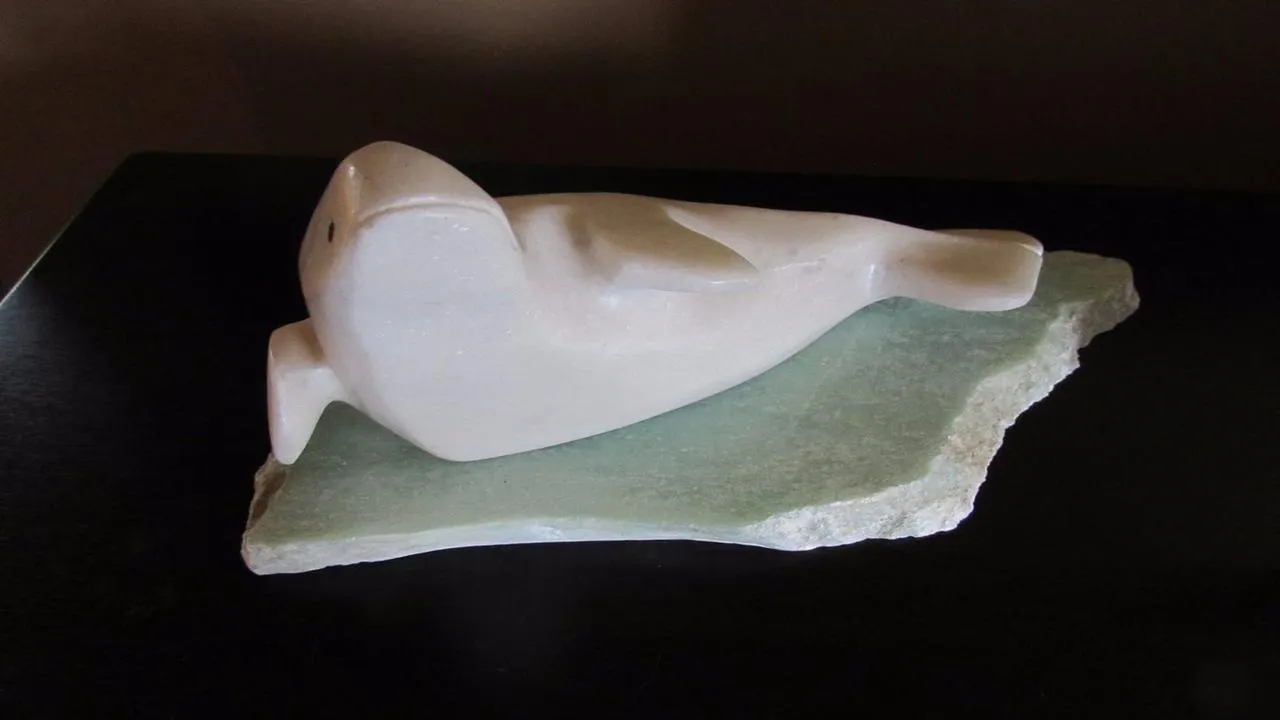
What to do in Winnipeg in February 2024
Why you should visit Winnipeg in February Winnipeg in February offers a unique and diverse array of activities, making it a wonderful destination for travelers seeking both indoor and outdoor...
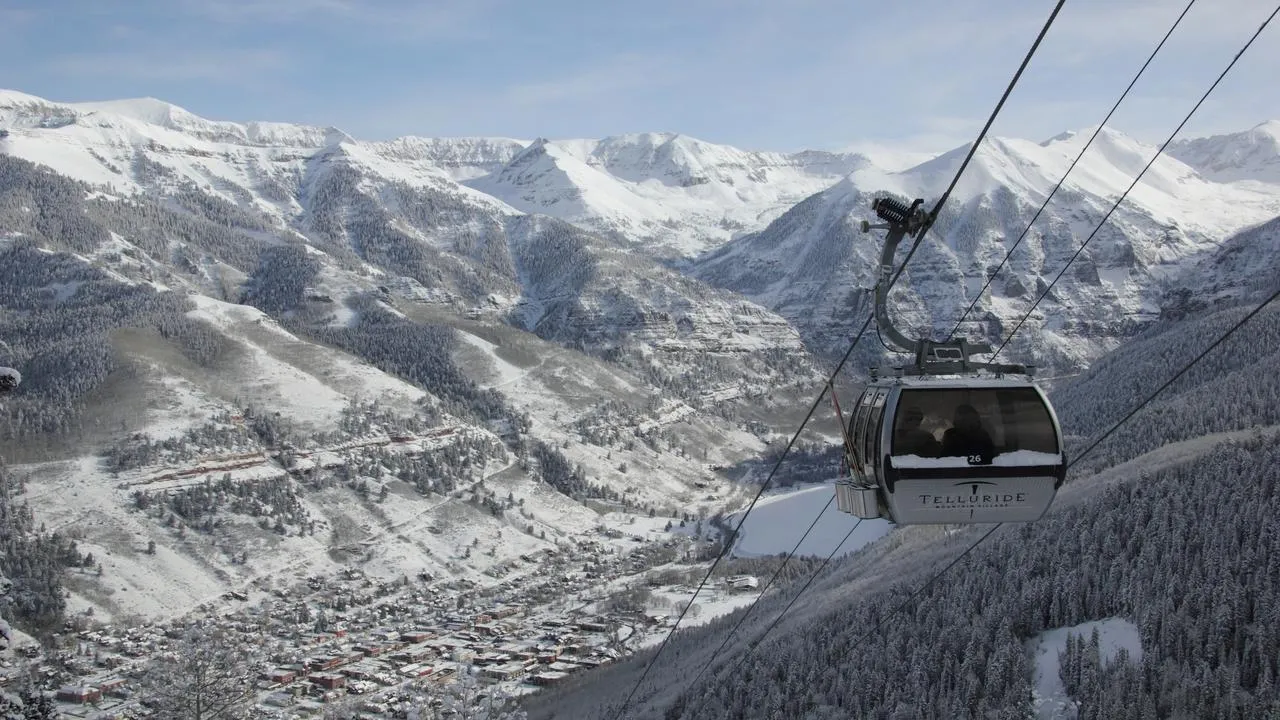
What to do in Telluride in November 2024
Why you should visit Telluride in November November is a special time to visit Telluride as it marks the transition from fall to winter, offering a unique blend of activities...

What to do in Telluride in June 2024
Why you should visit Telluride in June June is a fantastic time to visit Telluride, with the snowmelt creating vibrant green landscapes and the pleasant weather allowing for a variety...
I Challenge you to Discover the World

14 Best Places to See in Managua, Nicaragua
The capital of Nicaragua , Managua, is one of the most important cities in the country with a great historical and cultural legacy.
The city is located between lakes, volcanoes and natural parks where you can do hiking trails and many other activities in the middle of nature. In general, Managua is the starting point for a tour of the country (at least if you arrive with an international flight).
The city is relatively small and to get to know it you will only need one day, but if you want to visit the national parks, some volcanoes and surroundings, I recommend adding a few more days.
In this post I talk about the best places to see in Managua , where to stay and what to see in the surroundings.

WHAT TO SEE IN MANAGUA, NICARAGUA
1. the plaza de la revolución (plaza 22 de agosto), one of the most beautiful places to see in managua.
The Plaza of August 22 was a key place at a historical level. Important events took place there during the revolution, such as the seizure of the National Palace. Currently, it is the perfect place to start a route visiting the city. It is the meeting point for the locals where there are bars, cafes and restaurants.
It is a lively place with stalls and street musicians that create a unique atmosphere and a relaxed atmosphere.
2. The Cathedral of Santiago de Managua
The Cathedral of Santiago is one of the main symbols of the city of Managua Nicaragua. It is a building of colonial architecture and neoclassical style. It was built between 1928 and 1938, and without a doubt, it is one of the essential places to visit in Managua.

3. Port of Salvador Allende
The Port of Salvador Allende is a place full of bars and restaurants. When it begins to get dark, the port comes alive and is a perfect place to go and have something to eat, have a drink... Boat trips on the lake also leave continuously from the port. This area is ideal for disconnecting from the city and being in contact with nature.
4. The Managua Malecon
The Malecón is a beautiful walk along the lake. It is perfect for walking, enjoying the surroundings, and there are even designated areas where you can take a bath.

5. The National Museum of Managua Nicaragua, a key place to visit in Managua
Next to the Plaza de la Revolución you will find the National Museum of Nicaragua. In it, you will find an exhibition where you can learn about the history and culture of the country. In addition to pre-Columbian ceramics, sculptures, and prehistoric utensils, the building houses a large collection of Latin American paintings. It is a recommended visit to do in Managua.
The entrance to the museum costs €2 and the opening hours are Monday to Friday from 8:00 a.m. to 6:00 p.m. and Saturdays from 8:00 a.m. to 12:00 p.m.
6. The Huellas de Acahualinca Archaeological Museum
This is another of the recommended museums to visit in Managua. In it you will find an exhibition with evidence of human existence during prehistory in Managua Nicaragua. At the end of the 19th century, some fossil footprints were found by chance, around which the museum was built. It is a very interesting visit where you will learn how humans lived thousands of years ago.
The entrance price is €4 and the visiting hours are from Monday to Saturday from 9:00 a.m. to 4:00 p.m.
7. The Metropolitan Cathedral of Managua
Much less beautiful than the previous one, this Cathedral was just built in 1993. It is linear, with an eclectic, Arabic and romantic architectural style. It reminded me of a very modern hospital or museum.
8. The local market of Managua
I am fascinated by local markets and I never miss any. In the local Managua market you will find stalls selling fresh products, cooked meals at very low prices and there are even some stalls with local products and textiles, such as scarves and embroidered garments, perfect items to give someone as a souvenir.
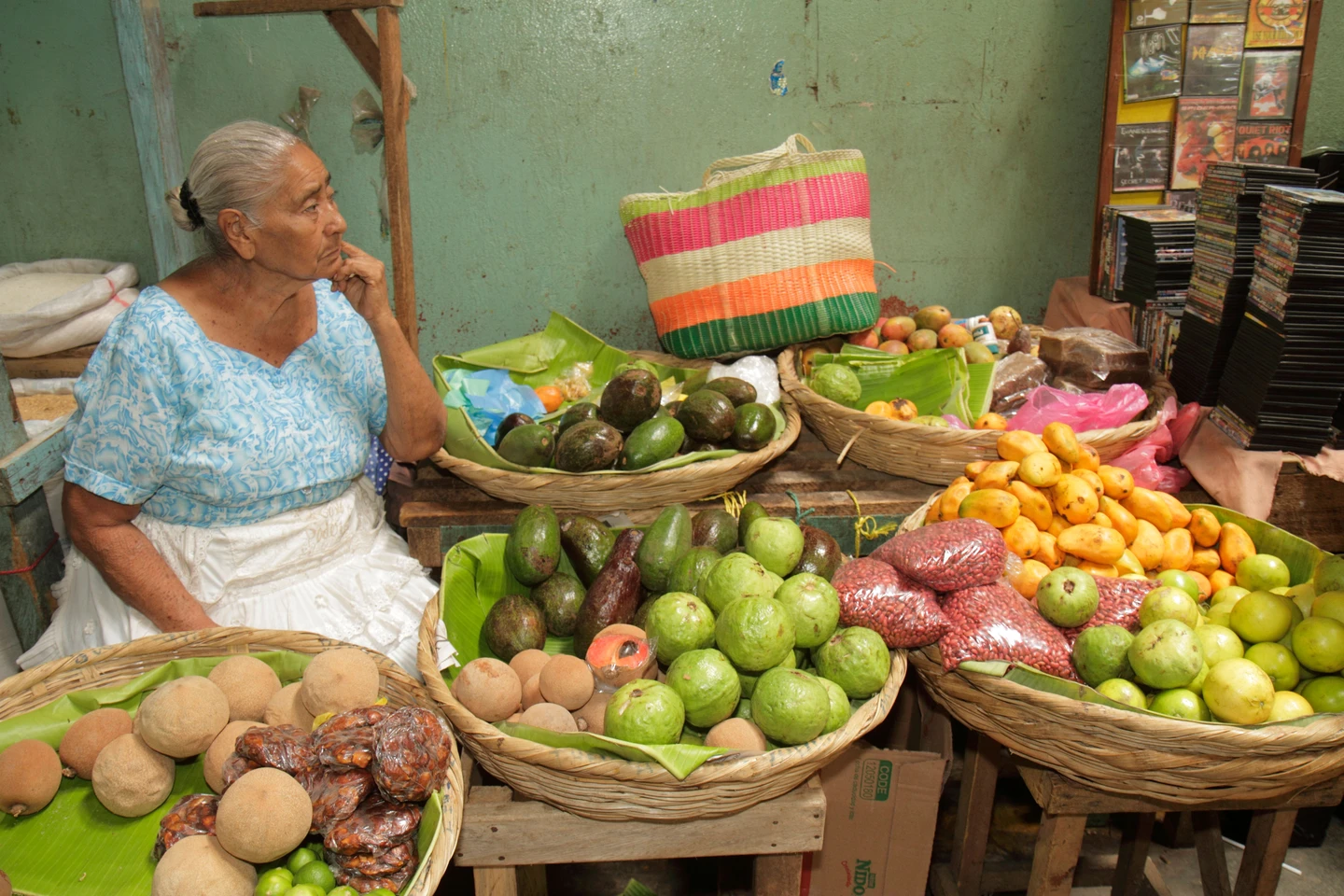
9. The Chocoyero National Park
This park gets its name from the large number of parrots called chocoyos that live in it. It is a park full of waterfalls and dense forests. In this natural park you can go trekking or even camping. There are many routes that will take you to see waterfalls in the jungle. It is advisable to do the routes with a local guide so as not to get lost.
From the center of Managua Nicaragua you can go by bus for 90 córdobas. The buses leave the Mercado Huembres every weekday from 7:00 a.m. to 5:00 p.m. and on weekends between 7:00 a.m. and 4:00 p.m.
10. Masaya, the volcano of Managua Nicaragua
Just 22km from Managua is the Masaya volcano, one of the 7 still active volcanoes in the country. And one of the most essential places to see in Nicaragua.
Its crater is located 635 meters high and inside there is a constant lava lake that emits gases such as sulfur dioxide. The park where the volcano is located has an area of 54 square km where you can see two volcanoes, five craters and a volcanological museum. At the foot of the Masaya volcano there is a lagoon that receives the same name and creates a curious contrast with the mountain. You can get there by car, there is even a road that takes you to one of the craters.
A great way to visit the volcano and also the surroundings is to take an excursion with pick up at the hotel, transportation and guide:
Excursion to the Masaya Volcano and Apoyo Lagoon
Excursion to the Masaya volcano
If you want to know more about the Masaya Volcano, its eruptions, the treks you can do to reach the crater and much more, I will tell you in the post:
How to visit the Masaya Volcano, Nicaragua
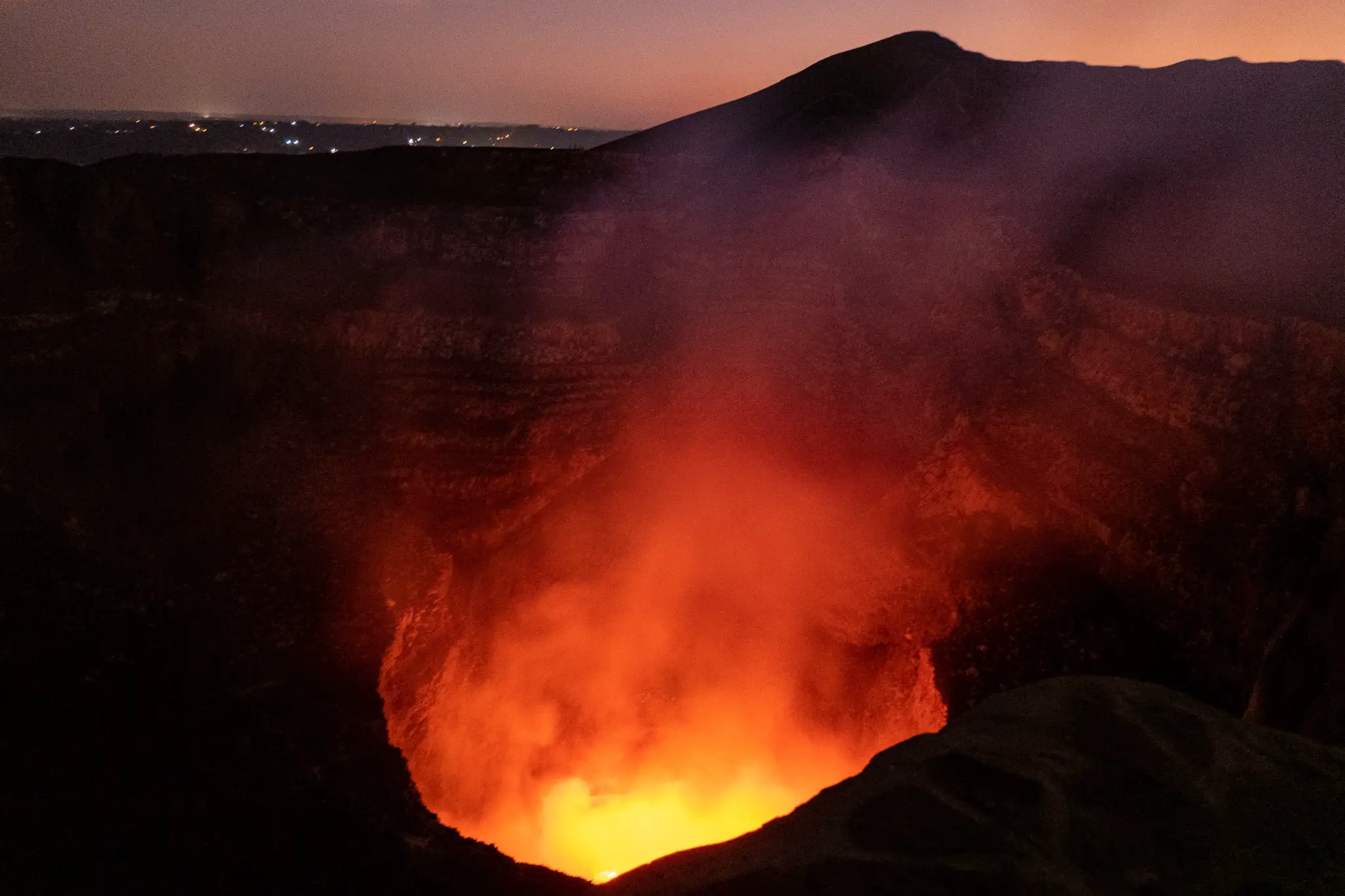
11. The Montibelli Private Nature Reserve
This natural reserve is well known for the great variety of birds that live in it. In fact, it is the perfect place for bird watching. Throughout its 162 hectares of extension you will find different hiking routes that run along the steep slopes full of trees.
The park has different areas with very different heights that reach up to 720 meters, so you can appreciate different types of landscape depending on the altitude. While the upper areas are covered by tropical forests, the lower areas still have some cultivated fields dedicated to lemons, bananas, pineapples, mangoes, avocados and pitahayas.
12. Excursion to the Island of Ometepe
Ometepe is the largest volcanic island in the world located in a freshwater lake. In it is the Charco Verde Natural Reserve, pools of water and thermal baths of volcanic waters.
Ometepe Island Day Trip from Managua
You can also decide to stay one night on the island. You can take the ferry from Managua. You have all the information on how to visit Ometepe Island for free and what to see on Ometepe in this post.

13. Excursion to the Somoto Canyon from Managua
This beautiful canyon is one of the most beautiful places to see in Nicaragua. The Coco River passes through the canyon, creating natural pools where bathing is allowed. There are many trails where you can go trekking, slide down the river with a float or even have a picnic of local food on the shore.
Excursion to the Somoto Canyon
14. Visit one of the cities near Managua
León and Granada are two essential cities to visit on any trip to Nicaragua. They are close to Managua and you can make a 1-day visit and return to the capital or take advantage and start a route through the colonial cities of Nicaragua.
Posts about cities in Nicaragua that may interest you:
10 essential things to see and d o in Granada Nicaragua
10 essential things to see and do in León, Nicaragua
What to see in Potosi, Nicaragua
WHERE TO STAY IN MANAGUA, NICARAGUA
Managua is a large city, although its historic center is the main interest of the city. In the center, most of the accommodation is bed & breakfast, boutique hotels or pensions, although there are all categories. If you want a modern hotel that belongs to a hotel chain, you should go a little further to the outskirts of the city.
Some great accommodation options in Managua, Nicaragua:
Hotel Baltsol 3*
Hotel Casa Colonial Boutique 3*
La Bicicleta Hostal
DoubleTree by Hilton Managua 5*
Crowne Plaza Managua, an IHG Hotel 5*
PLAN YOUR TRIP STEP BY STEP
Cheap flights around the world
hotels and apartments
Tours and activities
Best card to travel Free and without paying interest
Your SIM card at the best price
5% discount on your travel insurance
Apply for visas quickly and safely
I hope you enjoy your trip to Nicaragua a lot and that this article has been useful to you. You can continue reading many more related articles on the blog.
If you liked this article, subscribe to the blog so you don't miss out on upcoming destinations, curiosities, travel tips and inspiration for your trips.
A hug and see you soon!
Recent Posts
How to visit the Masaya Volcano National Park
The most beautiful beaches in Nicaragua
15 Best places to see in Nicaragua
Commentaires
Managua Nicaragua Destination Guide (2024): What You Need to Know
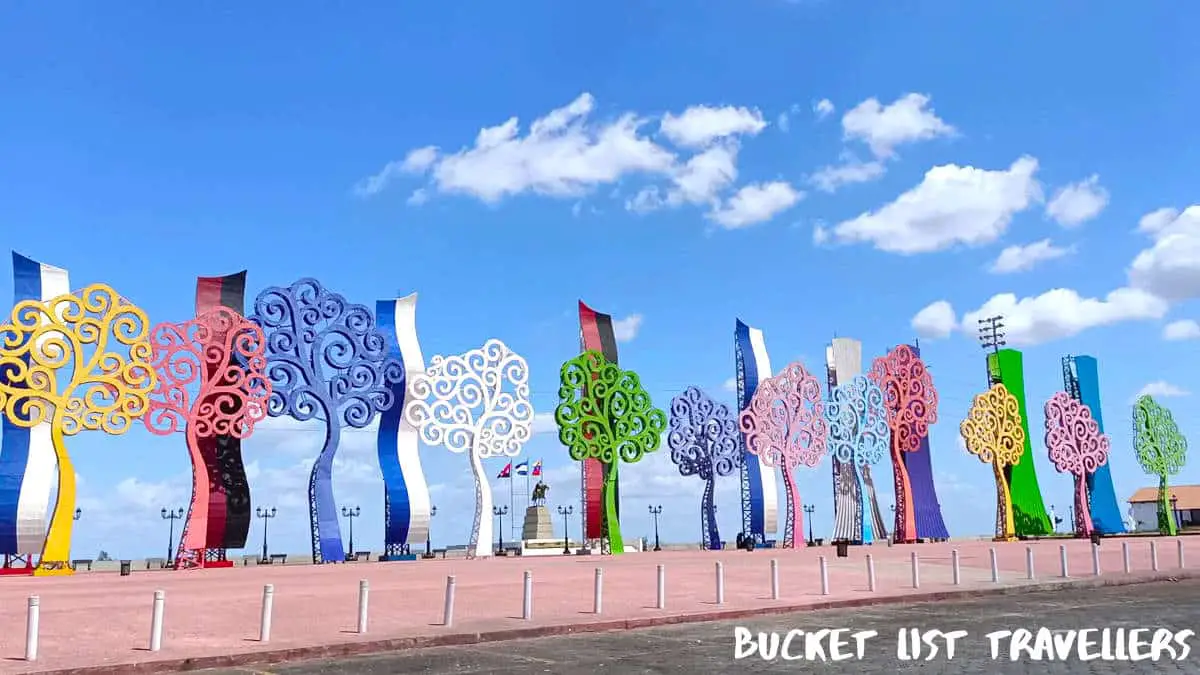
Nicaragua ’s capital is an often overlooked destination, but it has a lot to offer. It is a sprawling city which is chaotic at times but also has areas that are quite leafy and peaceful. First timers can enjoy waterfront dining at Puerto Salvador Allende or the beautiful vista at Loma de Tiscapa. Those living in Nicaragua come to Managua for the international dining scene, modern shopping centres as well as all of the conveniences that the largest city in Nicaragua has to offer. Find out more in this Managua Nicaragua destination guide.
What is Managua Nicaragua famous for?
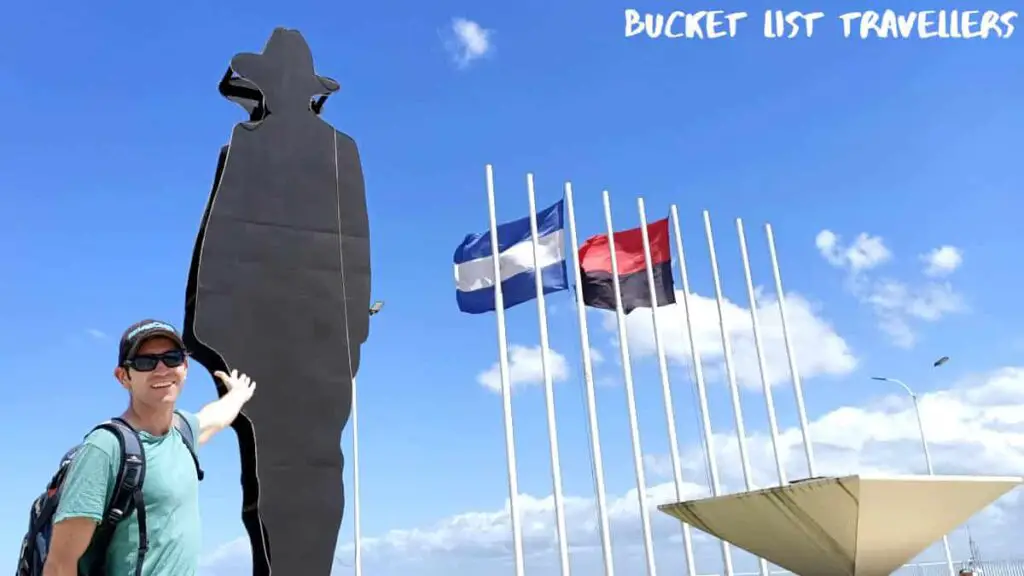
Managua is mainly known for being the capital of Nicaragua as well as Nicaragua’s biggest city. Home to Nicaragua’s international airport as well as major bus terminals, it is an important launchpad for getting into and around the country. Additionally, Managua is one of Central America ’s most important economic hubs, being home to modern shopping centres, government buildings, universities and other services. It is also a major cultural centre, with plenty of dining and shopping options as well as theatres, museums, stadiums and other landmarks.
Managua has faced a number of challenges over the years, with floods, earthquakes and fires destroying the city several times throughout its history. None was more devastating than the 1972 earthquake which destroyed 90% of the city. As Managua is located on fault lines, it is likely that a severe earthquake will hit the city approximately every 50 years. However Managua has rebuilt and is now home to over 1 million people. A distinctive feature of the city are the Trees of Life – an art installation consisting of over 100 colourful tree sculptures that line the city streets and light up at night. The city also hosts a number of festivals throughout the year.
Why you should visit Managua Nicaragua
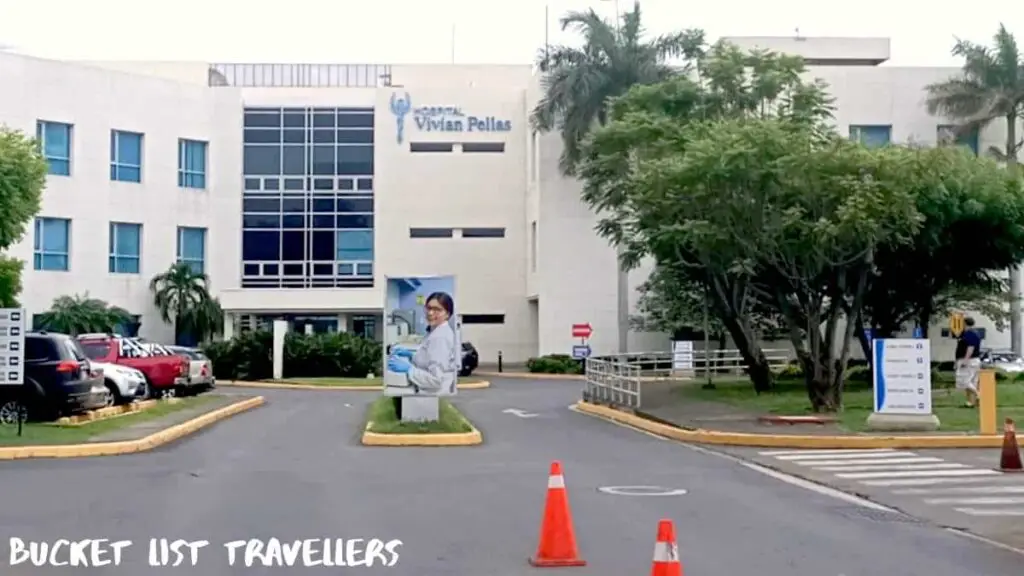
Managua is the capital of Nicaragua and also Nicaragua’s biggest city. Founded in 1819, Managua became Nicaragua’s capital in 1852. As an economic and cultural hub, there are plenty of activities in Managua to keep you entertained, including the best shopping and dining options in Nicaragua as well as sports stadiums, museums and theatres. Additionally Nicaragua’s international airport is located in Managua. The city is a major transport hub, and its location in between the major cities of León and Granada means that you will no doubt pass by Managua at some point during your Nicaragua trip.
Managua Nicaragua Destination Guide: Know before you go
Basic info about managua nicaragua.
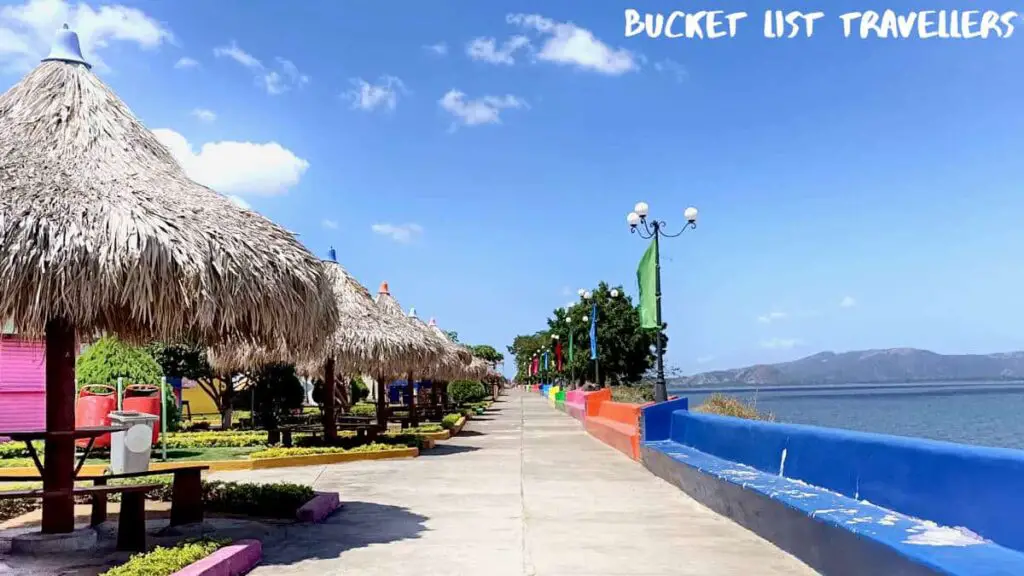
- Official name – Leal Villa de Santiago de Managua (Loyal village of Santiago of Managua. However it is most commonly known simply as Managua.
- Date founded – 1819
- Date elevated to the capital of Nicaragua – 1852
- Language – Spanish; Many tour operators and hotel staff speak English in popular tourist areas, but if you prefer travelling and shopping local you will need a basic understanding of Spanish.
- Currency – Nicaraguan córdoba (NIO). Many hotels and restaurants also accept United States dollars (USD). ATMs dispense both cordobas and US dollars. For more details on money in Nicaragua, see this post .
- Population – 1,052,000 (2019)
- Area – 267 km 2 (103 sq mi)
- Department (Departmento) – Managua. Managua is the capital of this department.
- Emergency number – 118
- Police number – 101 (tourist police), 118 (police)
Utilities in Managua Nicaragua
- Electricity – Nicaragua uses Types A and B power plugs, which is the same plug type as the United states. It operates on a 120v supply voltage at 60Hz. Power outages in Nicaragua are not uncommon but generally don’t last for too long.
- Water – the tap water in Managua Nicaragua is safe to drink. However many expats and tourists prefer to drink filtered water. Some accommodation in Managua provides filtered water for guests to use (however the one we stayed at did not).
- Toilets – sit-down flushing toilets are the most common type of toilet in Nicaragua. Don’t flush your toilet paper – use the bins provided. Public toilets are not common in Nicaragua, but you can usually find toilets in cafes and restaurants.
- Telephone country code: +505
Where is Managua Nicaragua?
Managua is a city in the department of Managua Nicaragua. This city is situated on the shores of Lake Managua (also known as Lake Xolotlán). It is an inland city located in western Nicaragua .
The closest cities to Managua Nicaragua are Masaya and Granada . Managua is around 35 minutes by car from Masaya and 48 minutes from Granada.
How to get to Managua Nicaragua
Managua nicaragua destination guide: arriving by land, managua nicaragua intercity land transport.
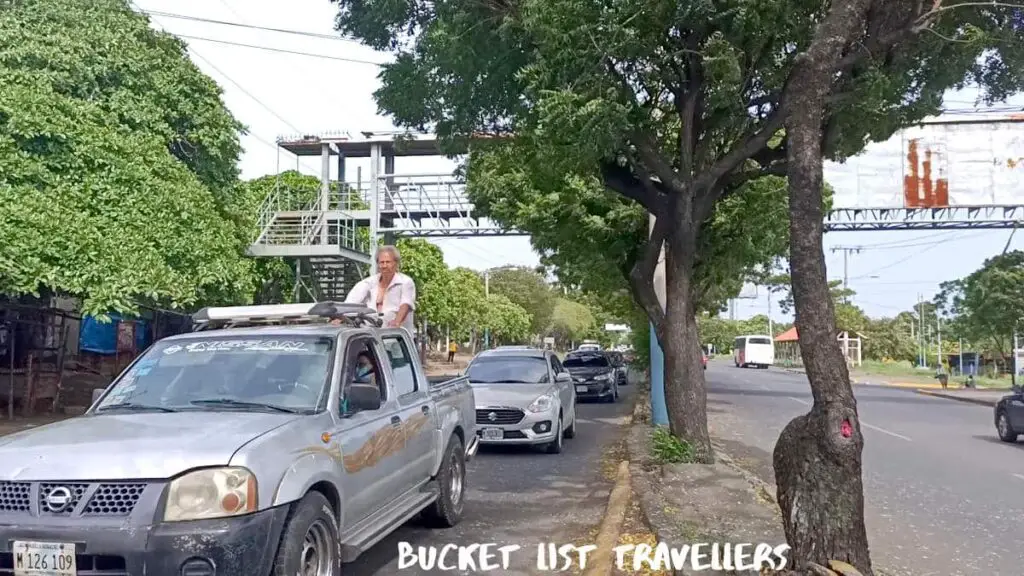
The main transport options for travelling overland to Managua Nicaragua are:
- Private vehicle
- Private transport operator
Driving to Managua Nicaragua from within Nicaragua
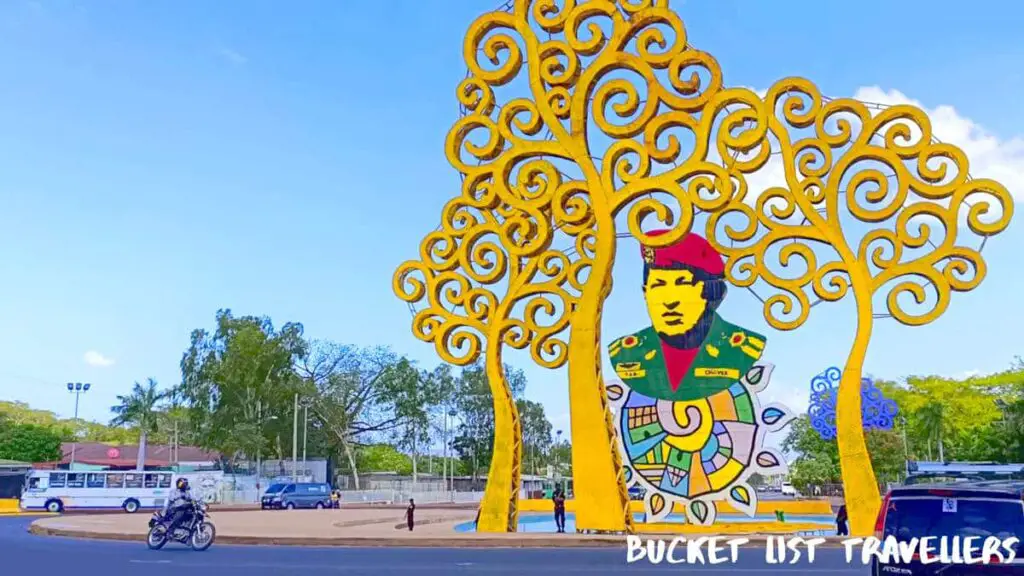
If you are driving to Managua Nicaragua from within Nicaragua , here are the travel times and distances:
- Masaya – 35 minutes (26km, 16miles) without tolls
- Granada – 48 minutes (41km, 26miles) without tolls
- Rivas – 1 hour 48 minutes (101km, 63miles) without tolls
- León – 1 hour 50 minutes (94km, 58miles) without tolls
- Estelí – 2 hours 29 minutes (150km, 93miles) without tolls
- San Juan del Sur – 2 hours 13 minutes (129km, 80miles) without tolls
- Peñas Blancas border crossing to Costa Rica – 2 hours 23 minutes (136km, 85miles) without tolls
- Las Manos border crossing to Honduras – 3 hours 55 minutes (250km, 155miles) without tolls
- Bluefields – 6 hours 37 minutes (355km, 221miles) without tolls
Intercity trains to Managua Nicaragua
There are no trains in Nicaragua .
Shuttle buses to Managua Nicaragua
Shuttle buses operate between major tourist destinations in Nicaragua . You can often book these shuttles through your accommodation or through tour operators. Expect to pay around $35 per person for a shuttle between Managua and San Juan del Sur (as at 2023). Additionally there are two shuttle bus companies that provide shuttle services to Nicaragua from other countries in Central America : Nicabus and Ticabus.
Local buses to Managua Nicaragua
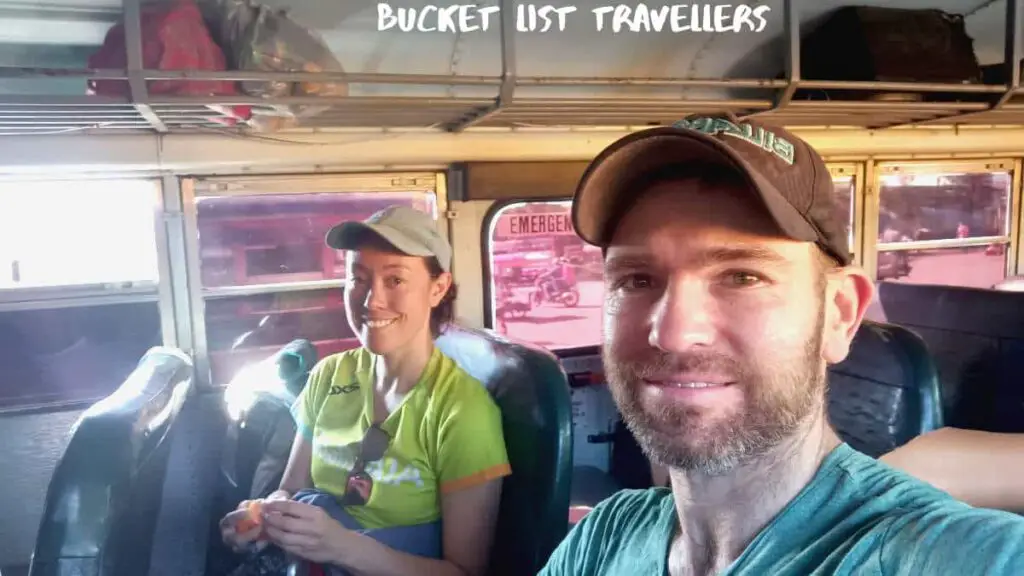
A common way to get around Nicaragua is by using local buses. Tourists often refer to these as chicken buses. Nicaragua public buses are old US yellow school buses that are often painted in bright colours. They have the destination on a sign at the front of the bus. Buses rarely leave on time, so patience is key. We also recommend that you ask about bus times at the station, particularly if you are considering a less regular route. Keep in mind that most locals, including local bus drivers, only speak Spanish.
Before the bus leaves as well as during the journey a number of vendors may get on the bus selling food and other goods. This is a great opportunity to get a snack for your trip or even do your grocery shopping.
Bus terminals in Managua Nicaragua
Managua has 4 bus terminal spread out at different ends of the city. Each of these terminals service different parts of the country. Given horrendous traffic in Managua, it is no wonder that these terminals are on the edges of the city for easy access to the part of the country they service. These bus terminals are:
- Terminal de Autobuses Mercado Roberto Huembes (located towards the southern exit point for Managua) – Buses from Managua to Peñas Blancas (Costa Rica border), Granada , Masaya , Rivas, San Jorge or San Juan del Sur (southwest Nicaragua).
- Terminal de Buses El Mayoreo (located towards the eastern exit point for Managua) – Buses from Managua to Matagalpa, Estelí , Jinotega, El Rama, San Carlos, Ocotal, Jalapa, Wasala, and Somoto (northern Nicaragua).
- Terminal Israel Lewites (located towards the western exit point for Managua) – Buses from Managua to León and Chinandega and microbuses to León (north-west Nicaragua).
- Terminal Mercado Ivan Montenegro – Buses from Managua to Bluefields and El Rama (Caribbean side of Nicaragua).
Additionally there is also a microbus terminal in Managua which has minivans that service all parts of the country.
Common bus routes for Managua Nicaragua
Details for some of the most common bus routes for Managua Nicaragua are listed below:
The above bus fares are as at 2021.
Microbuses or minivans to Managua Nicaragua
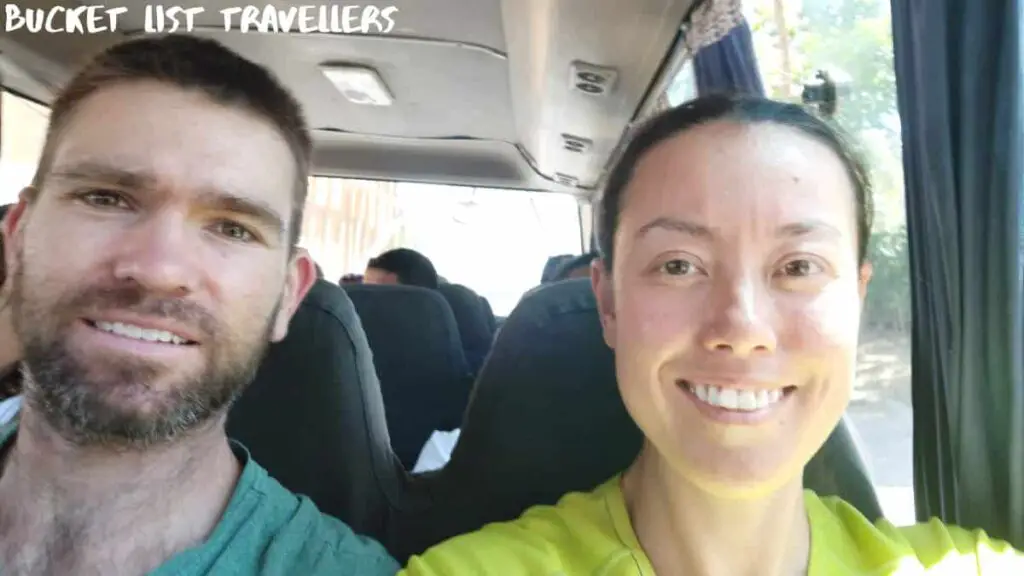
An affordable but slightly more expensive alternative to buses in Nicaragua are microbuses or minivans. These vans generally seat around 10-15 people. They are more direct and generally only a few córdobas more expensive than buses. They usually leave when they are full and are also typically more frequent than buses. We personally think that buses are more comfortable than the minivans as people do get crammed into the minivans and minivans generally don’t provide much legroom. However you do always get a seat in minivans, albeit once my seat was just an upside-down crate in between two other seats. Microbuses in Managua Nicaragua depart from the microbus terminal: Managua – UCA Microbus Terminal. This microbus terminal is about 15 minutes walk from the Metrocentro shopping centre.
Managua Nicaragua destination guide: Arriving by air
The closest airport to Managua Nicaragua is Augusto C. Sandino International Airport (Airport code MGA). This international airport is located in Managua, on the western side of the city.
Other nearby airports include:
- Costa Esmeralda Airport in Tola Nicaragua (Airport code ECI). This airport is 82km (51 miles) away.
- Daniel Oduber Quirós International Airport (Airport code LIR) in Liberia Costa Rica. This airport is 188km (117 miles) away.
- Toncontín International Airport in Tegucigalpa Honduras (Airport code TGU). This airport is 239km (148 miles) away.
There is currently no national airline of Nicaragua . However airlines that service Nicaragua include American Airlines, Aeromexico, Copa Airlines, Spirit Airlines, Avianca Airlines as well as United Airlines. The domestic carrier in Nicaragua is La Costeña.
Managua Nicaragua destination guide: Arriving by boat
The Port of Managua is a small port on Lake Managua. However the main seaport of Nicaragua is Puerto Corinto (Corinto Port). This port is around 2.5 hours drive away from the capital. Cruise ships sometime visit Corinto.
Managua Nicaragua destination guide: How to get around Managua Nicaragua
Walking in managua nicaragua.

Managua Nicaragua is not a very walkable city as it is spread out and disorganised. There are some nice areas to walk in places like Puerto Salvador Allende as well as the leafy barrio (neighbourhood) Los Robles. However if you want to get from one area of the city to the next we recommend taking a bus for just a couple of cordobas. The city also does get uncomfortably hot and very sunny, so we’d recommend wearing a hat and bringing drinking water if you plan to walk around the city.
Local buses in Managua Nicaragua
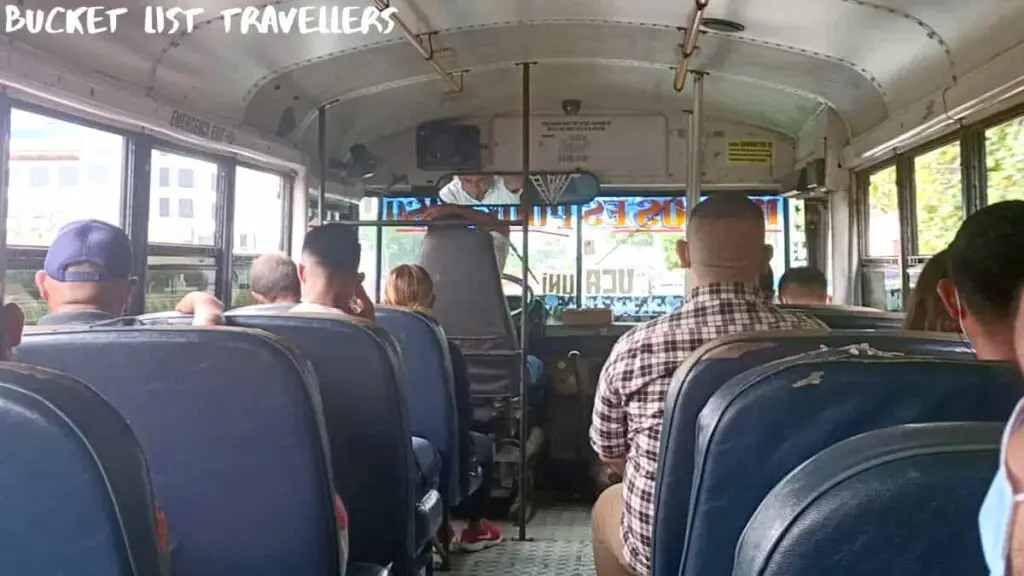
Local buses service Managua Nicaragua.
Trams in Managua Nicaragua
Managua Nicaragua does not have a tram system.
Local trains in Managua Nicaragua
Managua Nicaragua does not have a local train line.
Metro trains (subway or underground) in Managua Nicaragua
Managua Nicaragua does not have an underground train line.
Vehicle hire in Managua Nicaragua
A wide variety of vehicles can be rented in Managua Nicaragua. This includes:
- Motorcycles
In Nicaragua they drive on the right side of the road.
Tuk-Tuks in Managua Nicaragua
Auto-rickshaws or tuk-tuks are common in Nicaragua . They are a cheap and quick way to get from one place to the next. Agree on a price before you start your journey. Expect to pay around C$20-C$30 for a couple for a 10 minute trip. Tuk tuks may pick up other passengers along the way, so don’t be surprised if you have to share a ride with other passengers. We didn’t notice any tuk-tuks in Managua when we were there.
Taxis in Managua Nicaragua

One of the most convenient ways to get around Nicaragua is by taxi. Taxis in Nicaragua don’t generally have metres, so be sure to agree on a price before you begin your journey. Taxis may pick up other passengers along the way, so don’t be surprised if you have to share a ride with other passengers.
Ride-share in Nicaragua
Uber, Lyft and Grab do not operate in Nicaragua. In Managua there are some alternatives:
- Ray Nicaragua
Managua Nicaragua destination guide: Is Managua Nicaragua worth visiting?
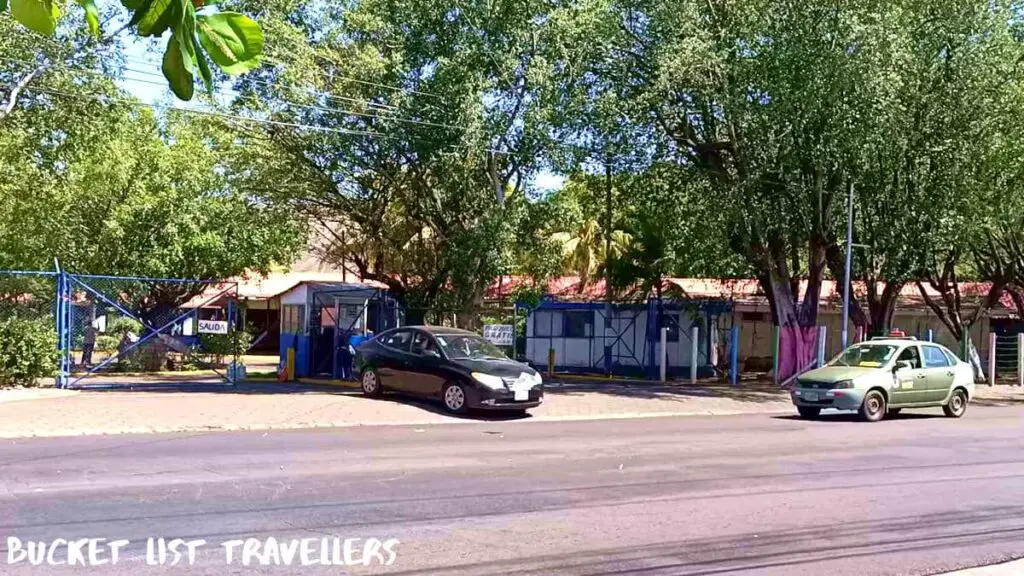
Managua is Nicaragua ’s capital city and is the location of Nicaragua international airport. As a main transport hub, you will most likely pass through the city at some point during your Nicaragua trip. Most people don’t see much more of Managua than the airport or the bus stop. However if you take the time to explore, you will find a disorganised city that nevertheless contains a lot of gems waiting to be uncovered.
Given the spectacular volcanoes, beautiful beaches and gorgeous colonial cities awaiting you outside of the capital, we don’t recommend devoting time to Managua if you are in the country for only a short amount of time. However if you plan to spend more than 3 months in the Nicaragua we’d recommend spending around one day per quarter in the capital to do some shopping, run errands and get some of the conveniences that you may not get in a smaller town or city. Additionally, if you need to renew visas, you can get same day processing at the Nicaraguan immigration head office in Managua.
Managua Nicaragua destination guide: How long to spend in Managua Nicaragua
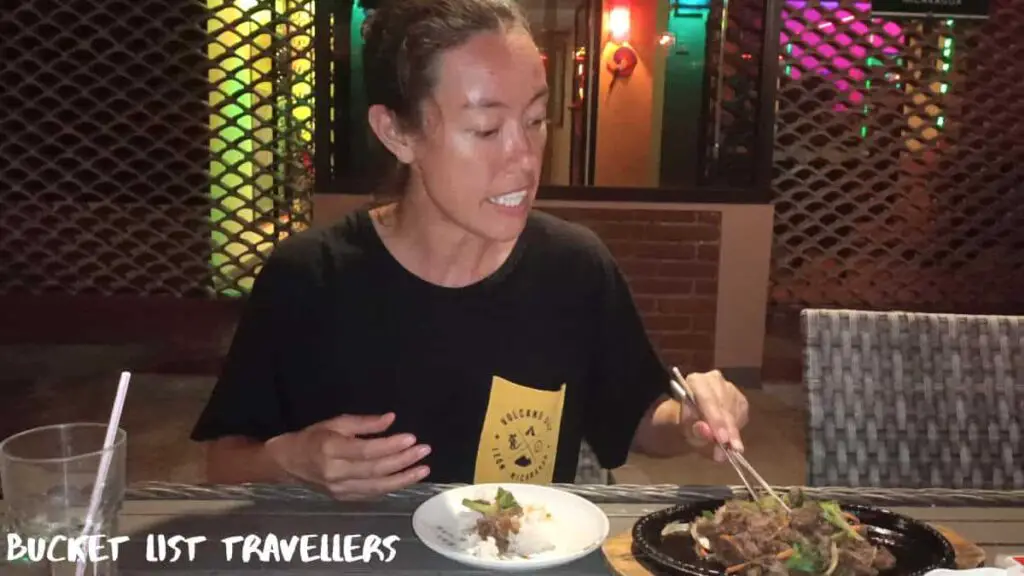
Most people that visit Nicaragua don’t see more of Managua than the airport. This is totally understandable given the attractions on offer outside of the capital. However if you do take the time to visit Managua, you will find a chaotic but interesting city with scenic spots, modern shopping centres and a great food scene. If you decide to live in Nicaragua we recommend taking a day trip to the capital at least a few times a year to shop, eat and run errands. However if you are in the country for a short amount of time we wouldn’t prioritise spending too much time in Managua. We visited Managua a number of times throughout our 18 months living in Nicaragua. We really enjoyed going to the shopping centres, sitting by the water at Puerto Salvador Allende and eating our fill of international cuisine.
Managua Nicaragua destination guide: What to do in Managua Nicaragua
Nicaragua ’s capital is a chaotic city which has a number of attractions spread throughout. It has a range of great free activities as well as paid activities. If you want to know the best things to do in Managua, see our guide on the Top 5 Things To Do in Managua .
Managua Nicaragua destination guide: Free things to do in Managua Nicaragua
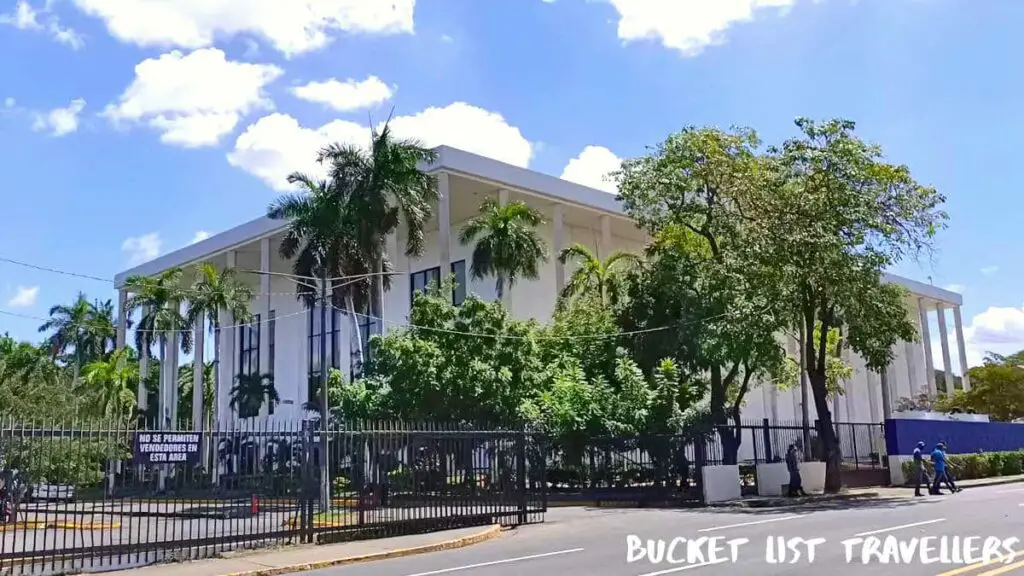
There are enough free activities in Managua Nicaragua to keep you entertained for a day or two:
- Puerto Salvador Allende
- Antigua Catedral de Managua (Catedral de Santiago Apóstol, St James’ Cathedral)
- Plaza de la Revolucion
- Catedral Metropolitana de Managua (the New Cathedral)
- Centro Comercial Galerías
- Managua Seawall (Plaza Nicaragua)
- Plaza La Fe
- Metrocentro
- Arboretum Nacional
- Parque Japón Nicaragua
- Mezquita de Managua
- Parque Central
Managua Nicaragua destination guide: Paid activities in Managua Nicaragua

A number of attractions in Managua Nicaragua charge a fee:
- Loma de Tiscapa – entry fee $1 USD (as at 2022).
- Teatro Nacional Rubén Darío – ticket price depends on the show.
- Palacio Nacional – entry fee $5 USD (as at 2023).
- Parque Acuáticox – entry fee 30 cordobas (as at 2023).
- Estadio Nacional Dennis Martínez – you can buy tickets to a baseball game here.
Events in Managua Nicaragua
Managua Nicaragua hosts a number of events throughout the year, including:
- Año Nuevo – New Year’s Day 1 January. Typically celebrated with bombas (fireworks) as well as setting alight effigies, which represents the burning of the Old Year. There may also be parades in the streets of Managua. Additionally, New Year’s Eve mass is popular.
- Semana Santa – Holy Week (Easter), typically in March or April. It’s common for families and friends to flock to the beach during Semana Santa.
- Joy for Life carnival (Alegria por la Vida) – this festival is usually celebrated between March and April. It is a celebration of Nicaraguan culture and folklore. It includes many activities as well as parades, floats, dancing, music, traditional costumes and food.
- Sandinista Revolution Anniversary – 19 July. This celebrates the 1979 Sandinista National Liberation Army defeat of the Somoza dictatorship.
- Patron Saint festivities – 1-10 August (feast day August 8). The patron saint of Managua is the Santo Domingo de Guzman. August 1: the patron saint statue is brought down the hill from the Las Sierritas Church in the Santo Domingo neighbourhood in a procession known as the “Bajada del Santo” (walk down of the saint). August 10: the statue returns to the church in the “Subida del Santo” (walking up of the saint) procession. Throughout the patron saint festival there are parades horse shows, as well as plenty of music, dancing and drinking.
- Equestrians of Managua – 1-10 August. This horse riding festival (hipica festival) includes horse parades as well as plenty of food, music and dancing.
- La Purísima – 29 November-8 December. This festival celebrating the Virgin Mary.
- La Gritería – 7 December. This is the biggest day of the La Purísima festival and includes a parade, fireworks and performances.
Weather in Managua Nicaragua
The climate for Managua is classified as tropical, with relatively uniform hot temperatures and also high humidity throughout the year. The hottest month is April with an average temperature range of 24°C to 35°C (74°F to 94°F) and coldest month January with an average temperature between 24°C to 32°C (74°F to 90°F). There are two main seasons in Nicaragua ; a wet season that typically commences in May and continues through to the end of October; and the dry season, which lasts from November through to April.
Best time to visit Managua Nicaragua
The dry season is a popular time of year to visit Nicaragua . This is from November to April. However many of the popular activities in Managua Nicaragua such as shopping and dining out are not weather dependent, so you can enjoy a trip to Managua Nicaragua at any time of year. If you want to experience a Nicaraguan festival in Managua, we recommend either the Joy for Life carnival (Alegria por la Vida) which is March and April or the Equestrians of Managua horse riding festival which is in August.
Internet and mobile phones in Nicaragua
The main internet and phone companies in Nicaragua are Tigo and Claro. Tigo has the widest coverage but is slightly more expensive. Both currently operate on 4G. Movistar is another common provider.
The phone messaging app Whatsapp is used extensively in Nicaragua, along with the other popular social media platforms.
High speed optic fibre internet is available in some areas of Nicaragua. The best speeds we’ve experienced have been around 40 Mbps download and 20 Mbps upload. More common speeds that we have found in city hotels have been 4-5 Mbps download and 1-2 Mbps upload (as at 2021). Free wifi comes standard with most accommodation and you can find free wifi in many restaurants and cafes catered to tourists.
Cell phone SIM cards can be bought in many places throughout Nicaragua, including local corner stores known as pulperias.
For more on internet in Nicaragua, see this post .
How much to budget for Managua Nicaragua?
Is managua nicaragua expensive.
We found Managua to be slightly more expensive than the nearby cities of León and Granada . In particular, Managua doesn’t have as much budget accommodation as these two other cities. Additionally, due to the sprawling and decentralised nature of the city, transport costs are also generally higher. However, compared to other capital cities, Managua is a very inexpensive place to visit.
Managua Nicaragua destination guide: Daily spend for a couple travelling in Managua Nicaragua
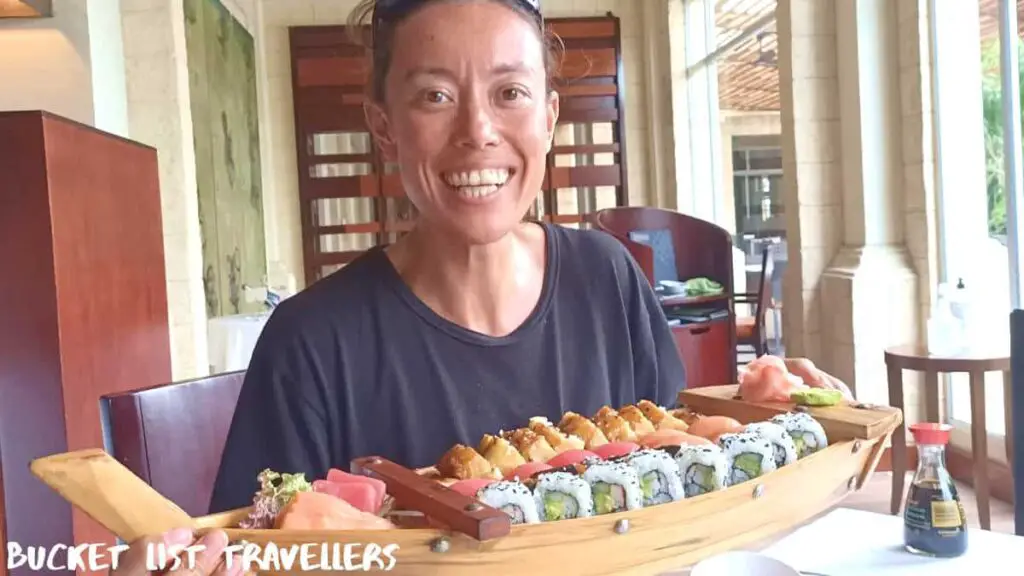
Managua Nicaragua is a great value budget destination, but it also caters to those after a more luxurious experience.
As a rough guide, we recommend the following budgets for a couple:
- Low-budget daily spend – US$60 per day for a couple will get you hostel accommodation, meals at local eateries and markets, local transport and free or cheap activities such as visiting the central park, churches and local markets.
- Mid-range daily spend – US$100 per day for a couple will get you mid-range accommodation, local transport and a few tours.
- Luxury spend – $500 per day for a couple will get you a premium experience in Nicaragua, staying in luxury accommodation, travelling by private transport, doing a range of tours and eating at high end restaurants.
Managua Nicaragua destination guide: Accommodation in Managua Nicaragua
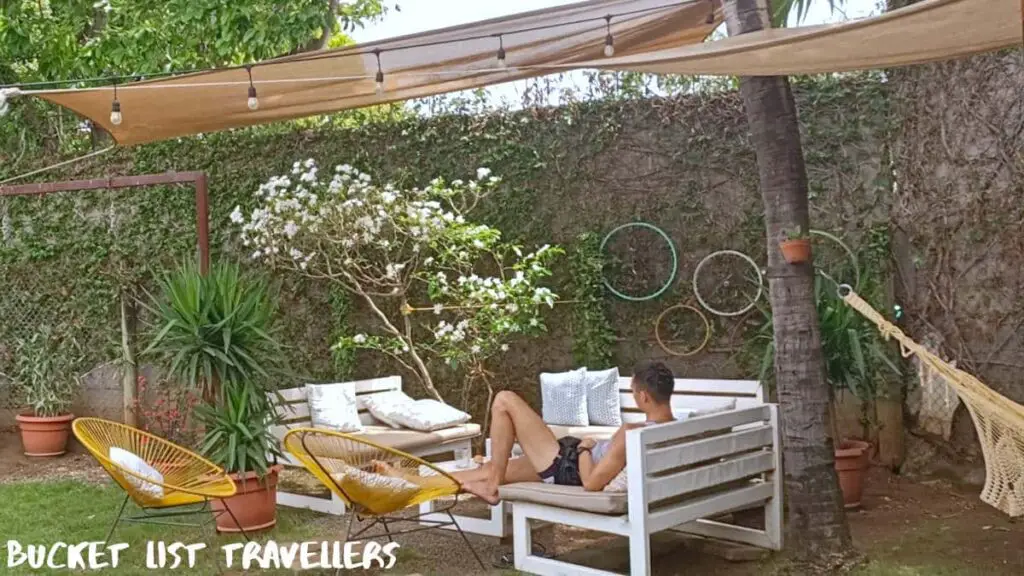
There is a good range of accommodation to suit most budgets in Managua Nicaragua. Airbnb also operates in Nicaragua , and there are a number of Airbnb properties in Managua Nicaragua.

Where to stay in Managua Nicaragua
We recommend the following accommodation in Managua Nicaragua:
- Best hostel in Managua Nicaragua – We highly recommend staying at La Bicicleta Hostal for budget friendly accommodation in Managua Nicaragua. We stayed here ourselves and we are certain that it is the best hostel in Managua. Located in a quiet leafy neighbourhood of Los Robles Managua, the hostel is clean, comfortable and secure. The staff were very friendly and we particularly enjoyed relaxing in the common areas and savouring their delicious breakfasts.
- Best bed & breakfast in Managua Nicaragua – Casa Lucía is the best B&B in Managua Nicaragua. This family run hotel is centrally located in the Los Robles neighbourhood of Managua. The hosts are friendly and make you feel at home.
- Best boutique hotel in Managua Nicaragua – La Posada del Arcangel is the best boutique hotel in Managua Nicaragua. The customer service and food are excellent. The hotel is beautifully presented and also displays artwork from local artists.
- Best hotel in Managua Nicaragua – Hotel Nicté is one of the best hotels in Managua Nicaragua. It is a beautiful modern hotel with beautiful gardens and a pool. Located in the Las Colinas neighbourhood, it is conveniently located whilst also being in an area that is peaceful and quiet.
- Best luxury accommodation in Managua Nicaragua – The hotel Real Intercontinental Metrocentro Managua is the best 5 star hotel in Managua. It is conveniently located right next to Metrocentro shopping centre. The hotel is a beautiful oasis in the middle of the bustling city. We love the pool area which is surrounded by a number of excellent restaurants. You can find the best sushi in Nicaragua at the hotel Nau Lounge restaurant. The staff also provide superb service.
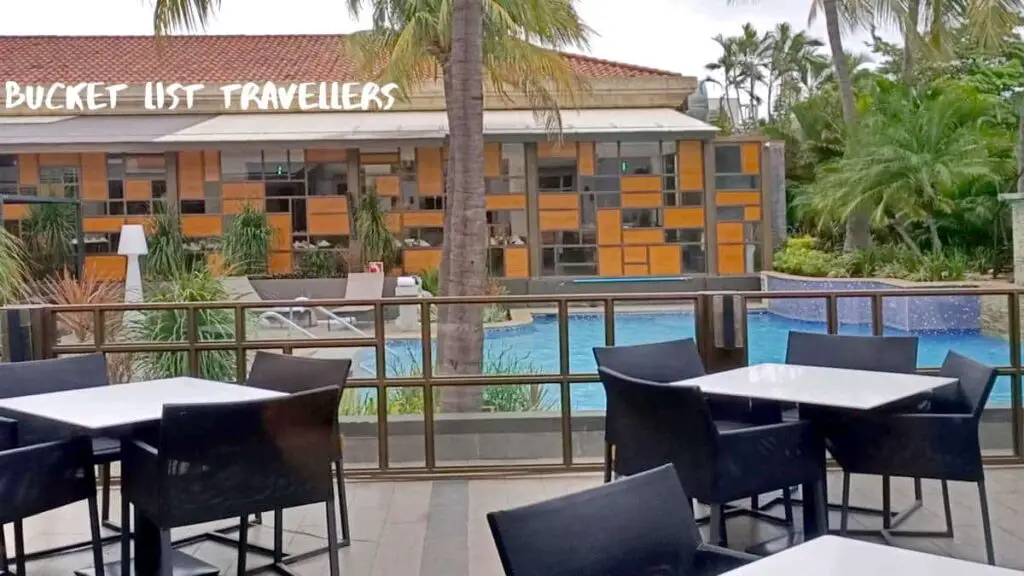
How much is accommodation in Managua Nicaragua?
For short-term accommodation, a general price per night is as follows:
- Budget accommodation – US$19-$30 for a bed in a dorm.
- Mid-range accommodation – US$35-130 for a private room.
- Luxury accommodation – US$130-230 a night for a luxury hotel.
- Rental property – US$35-275 a night for a fully furnished 3-4 bedroom home.
Managua Nicaragua destination guide: Food in Managua Nicaragua
How much does food cost in managua nicaragua.
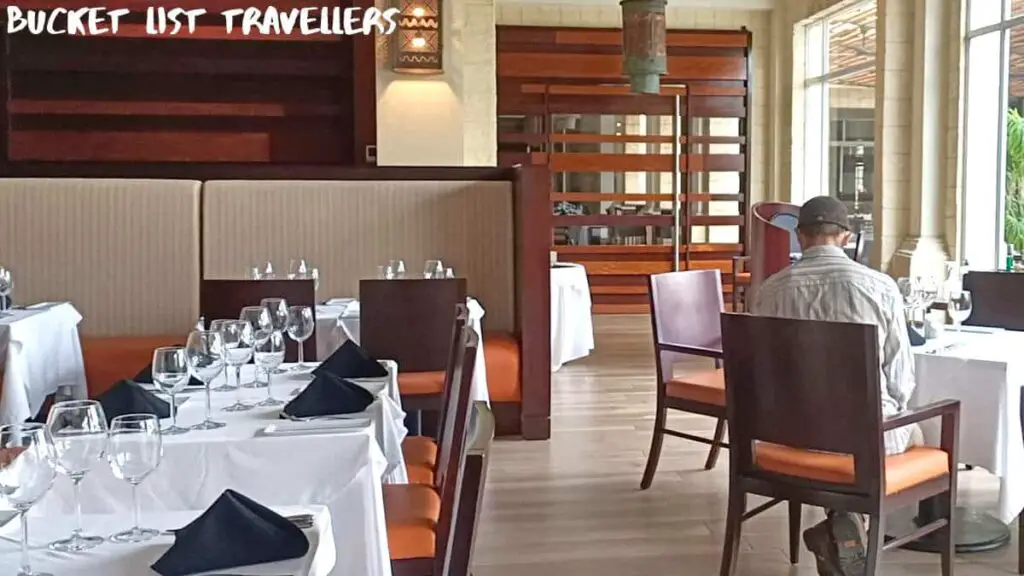
Our price guide for your food budget in Managua Nicaragua is as follows:
- Restaurant meal – US$10-15 for a main dish (350-500 cordobas)
- Local eatery – US$3-5 for a main dish (100-200 cordobas)
- Street food – US$1 (30-40 cordobas)
- Beer (try the local Nicaragua beer Toña) – US$1 (30-40 cordobas)
- Local fruit drink (refresco) – US$0.30-0.50 (10-15 cordobas)
Must eat food in Managua Nicaragua
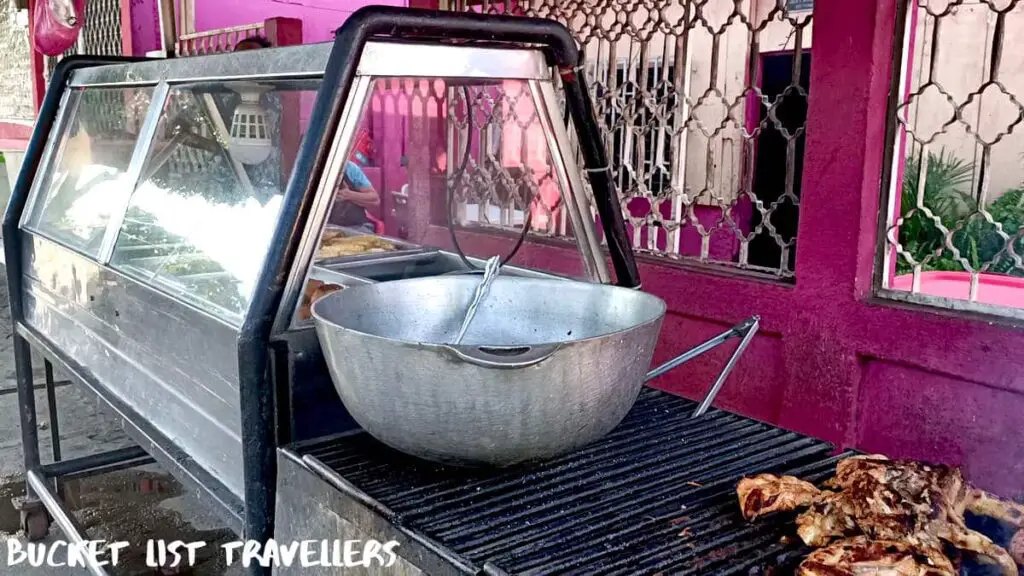
- Local street food (typical assortment) from local fritangas
- Gallo pinto
- Desayuno Nica (Nicaraguan breakfast)
- Pescado a la tipitapa
- Baho (also called vaho)
- Nacatamales
- Indio Viejo (Nicaraguan Beef Stew)
- Sopa de cola
- Tres leches cake
Cheap Eats in Managua Nicaragua
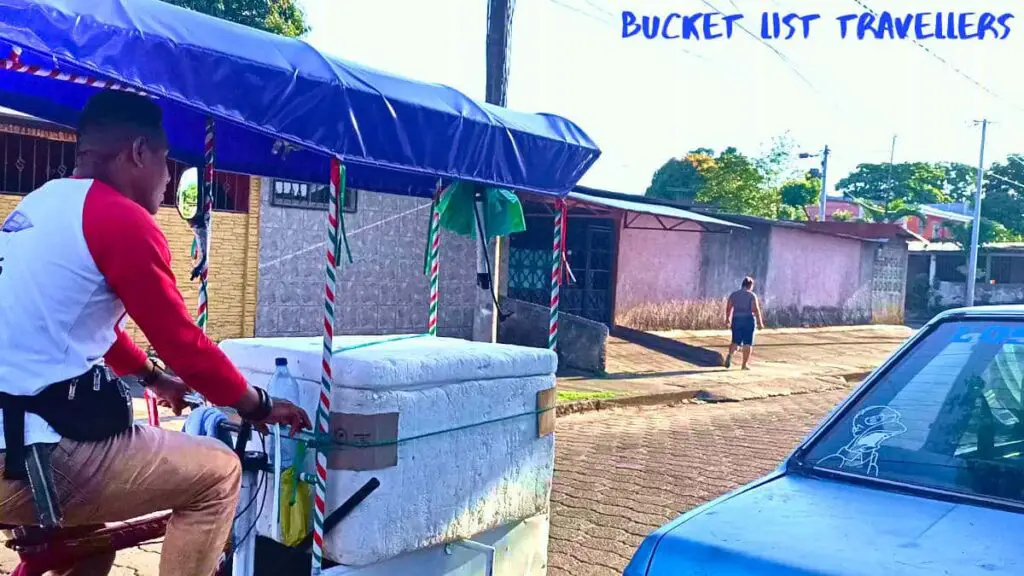
- You can’t go past street food for a cheap and delicious treat. Our favourite street food includes enchiladas, nacatamales, hamburgesas and raspados. You can find street food all around Managua, particularly around the markets as well as at transport hubs. A lot of street vendors sell food from in front of their homes or else go door to door down the street, so you’re never far from great food!
- Bakeries are a great place to get cheap and delicious food.
Managua Nicaragua culture
Weekends in managua nicaragua.

Weekends in Managua are on Saturdays and Sundays. Sundays are typically quieter in the city and public transport may be less frequent on Sundays as well.
Managua Nicaragua public holidays
Public holidays for Nicaragua are as follows:
- New Year’s Day – 1 January
- Maundy Thursday (Holy Thursday) – the Thursday before Easter Sunday, typically in March or April
- Good Friday – the Friday before Easter Sunday, typically in March or April
- Easter Sunday – typically in March or April
- Labor Day – 1 May (holiday on the Monday if it falls on a weekend)
- Mother’s Day – 30 May
- Sandinista Revolution Anniversary – 19 July
- Battle of San Jacinto – 14 September
- Independence Day of Nicaragua – 15 September
- Indigenous Resistance Day – 12 October
- All Souls Day (Day of the Dead) – 2 November
- Feast of the Immaculate Conception (Immaculate Conception Day) – 8 December
- Christmas Eve – 24 December
- Christmas Day (Navidad) – 25 December (holiday on the Monday if it falls on a weekend)
- New Year’s Eve – 31 December
National symbols of Nicaragua
- Nicaragua flag – two blue bands with a white band containing the Nicaragua coat of arms in the middle. The blue bands represent the Pacific Ocean as well as the Caribbean Sea and the white band symbolises peace.
- Nicaragua coat of arms – this consists of a triangle, the Cap of Liberty, a rainbow, the rays of sun as well as 5 volcanoes. The Cap of Liberty represents national freedom, the 5 volcanoes represent the original 5 member states of the United Provinces of Central America and the rainbow and sun represent the bright future of Nicaragua.
- National flower – sacuanjoche (the flower of the frangipani tree).
- National bird – guardabarranco.
- National heroes – poet Rubén Dario, revolutionary leader Augusto C. Sandino.
Nicaragua pastimes
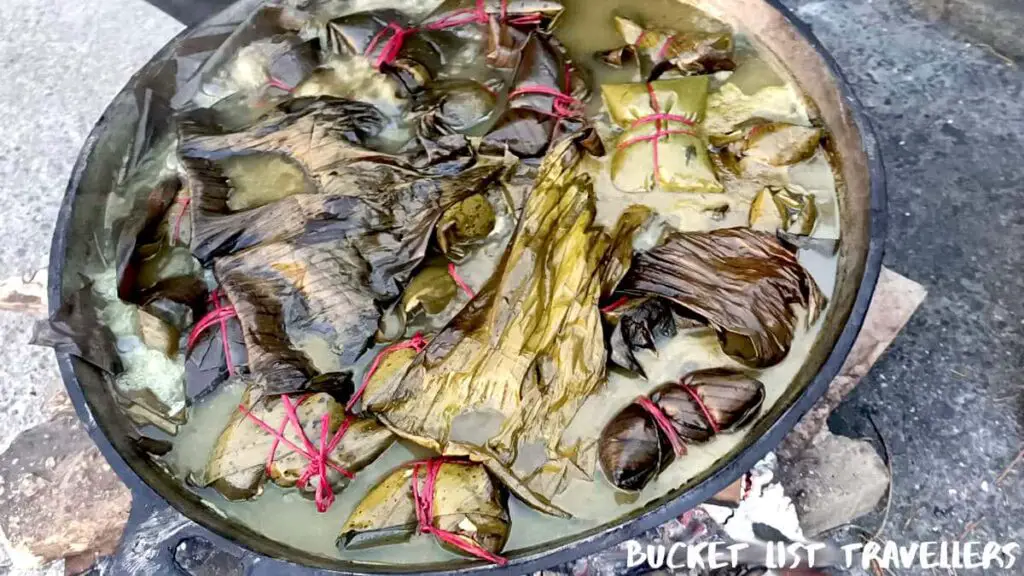
- National dish – gallo pinto. This is a dish of fried rice mixed with red beans and also spices. It can be eaten at any time of day. It is typically served at breakfast along with eggs, tortillas, fried plantains as well as a type of cheese called queso fresco.
- Popular drinks – grama, Toña beer, Flor de Caña Rum.
- National sport – baseball.
- Religion – 56% Catholic, 28% Protestant, 1% Jehovah’s Witness (as at 2010).
Famous people from Managua Nicaragua
- Famous people born in Managua Nicaragua – Human rights advocate and Mick Jagger’s former wife Bianca Jagger, Vice President of Nicaragua Rosario Murillo, actor Pedro Miguel Arce, novelist and poet Gioconda Belli, former President of Nicaragua José Santos Zelaya, former Nicaraguan President Arnoldo Alemán, model Xiomara Blandino, dancer Lillian Molieri, singer Katia Cardenal, poet María Teresa Sánchez.
- Sports stars from Managua Nicaragua – boxer Alexis Argüello, boxer Román González, baseball player Jonathan Loáisiga, boxer Felix Alvarado, boxer Rosendo Álvarez, boxer Cristofer Rosales, boxer René Alvarado.
Is Managua Nicaragua Safe?
Nicaragua travel guide: safety in managua nicaragua.
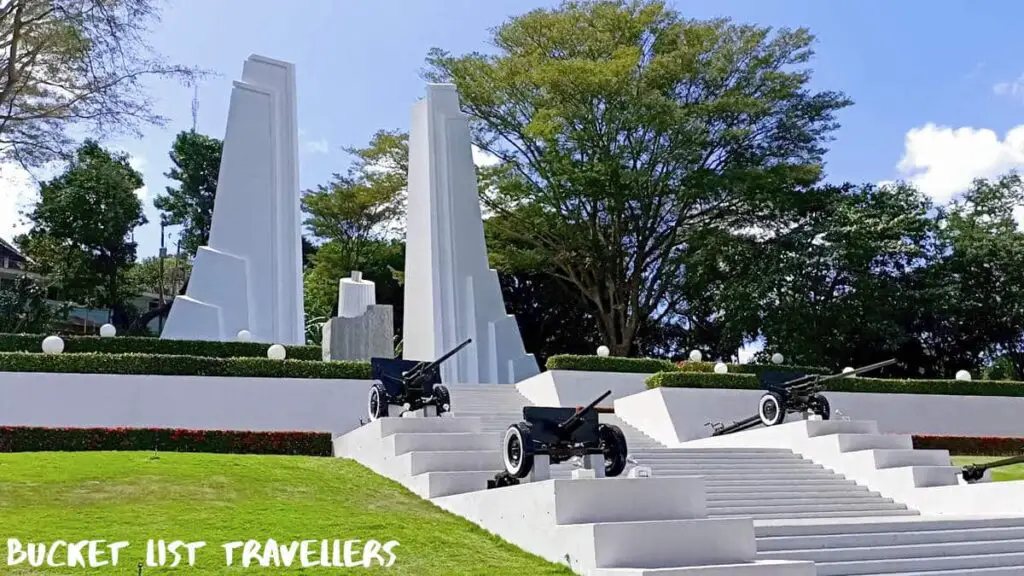
Managua has a reputation for not being a particularly safe place to visit. In particular the Mercado Oriental and surrounding area is known as a high-crime area. We personally avoided the Mercado Oriental area due to safety concerns. We have visited Managua multiple times and have found the city reasonably safe. However it is a major city, so crime tends to be higher here than other parts of the country. Notably, petty crime and crimes of opportunity can be an issue. As such, we recommend taking care to keep your valuables secure and out of sight. We also noticed that people in Managua were more wary of seeing foreigners taking photos or videos, so don’t be surprised if you get asked to put your camera away. As with any major city, there are some areas that are safer than others. For more information on safety in Nicaragua , watch this video .
Nicaragua experienced a period of civil unrest in 2018. This has now passed, and as a tourist you should not be affected. However you may still see armed police manning a pedestrian bridge across the main road Carratera a Masaya.
General safety considerations in Nicaragua
Other general safety considerations for travel in Nicaragua:
- Drinking water – Managua’s tap water is safe to drink. We drank tap water without issue. However many tourists prefer to drink bottled water. Additionally, most accommodation provides purified water for guests to use.
- Mosquitoes – The mosquitoes in Managua don’t generally carry tropical diseases. Nicaragua has mosquito control programs and many buildings are sprayed regularly for mosquito control.
- Scorpions – Nicaragua has scorpions. We recommend checking your shoes before putting them on and keeping bags zipped closed when not attended to ensure you don’t get any nasty surprises.
- Road safety – In Nicaragua we often travelled standing up in the back of vans or in vehicles without helmets or seat belts. This does come with an element of risk.
- Water safety – take care when swimming as currents and waves may be stronger than you expect. Also, the Nicaragua bull shark is in Lake Nicaragua.
- Earthquakes – Managua is located on fault lines and is predicted to experience a severe earthquake every 50 years. The 1972 earthquake decimated the city. In an earthquake, stay away from glass, windows, outside doors and walls and anything that could fall. If inside, get under a table, desk or solid furniture and hang onto it. Cover your head and torso to protect from falling objects. If outside, stay outside and go to an open area away from buildings.
- Volcanic eruptions – the closest volcano to Managua is Masaya Volcano. Located around 20km south of Managua, this is one of the most active volcanoes in the world.
- Hurricanes – Managua is not typically significantly affected by hurricanes. You may get some heavy rain during hurricane season and blackouts may occur.
- Sun safety – The UV Index is very high in Nicaragua. Therefore sun protection such as sunscreen, a hat and sunglasses is very important.
- Dogs – stray dogs are common. For more on dog safety, watch this video .
As with any destination, take all of your normal safety precautions.
Nicaragua Blogs
You can find our Nicaragua blogs below.
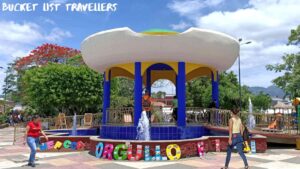
Esteli Nicaragua Destination Guide (2024): What You Need to Know
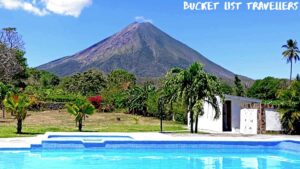
Ometepe Island Nicaragua Destination Guide (2024): What You Need to Know
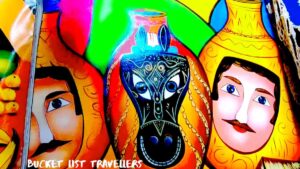
Masaya Nicaragua Destination Guide (2024): What You Need to Know
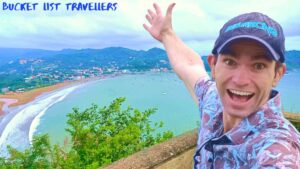
San Juan del Sur Nicaragua Destination Guide (2024): What You Need to Know
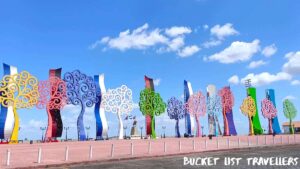
Leon Nicaragua Destination Guide (2024): What You Need to Know
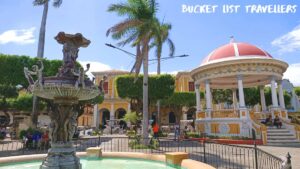
Granada Nicaragua Destination Guide (2024): What You Need to Know
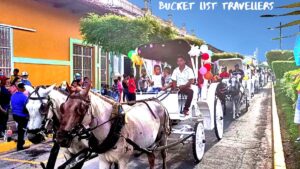
Transport in Nicaragua – Complete Guide to Nicaragua Transportation (2024)
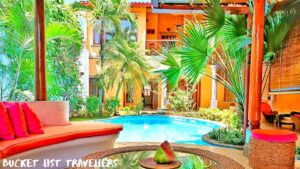
Where should I live in Nicaragua?
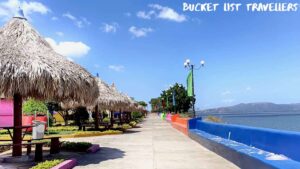
Top 5 Things to do in Managua Nicaragua (2024)
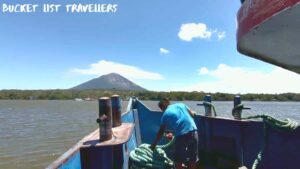
Granada Ferry: How to get to Ometepe Island

Nicaragua Costa Rica Border Crossing: Complete Travel Guide
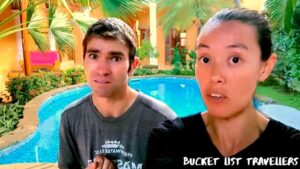
Home Invasion in Granada Nicaragua

Ojo de Agua: Paradise in Nicaragua!
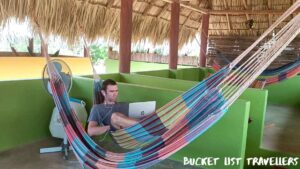
How Good is the Internet in Nicaragua?
Affiliate links.
This website contains affiliate links, which means we may earn a commission on any purchases at no additional cost to you. Your support helps us continue our travels and make more travel blogs and travel videos , thank you!
Similar Posts

Athens Destination Guide (2024): What You Need to Know

Dabong Destination Guide (2024): What You Need to Know
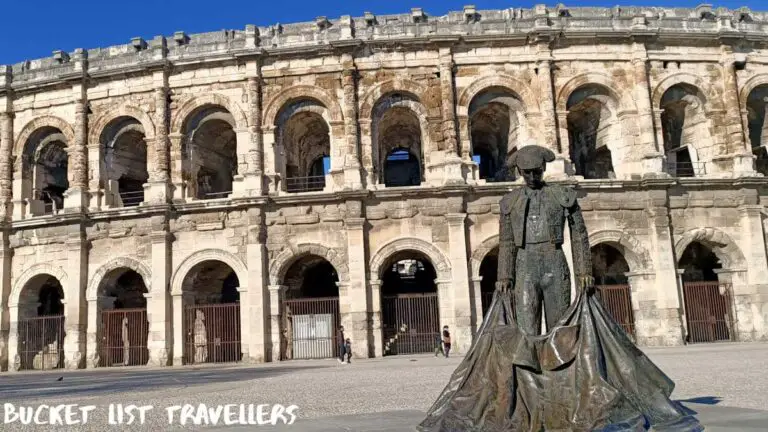
Nîmes Destination Guide (2024): What You Need to Know
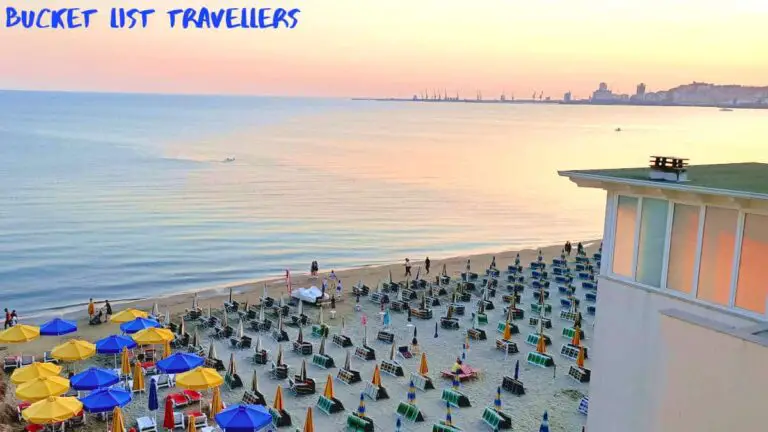
Durrës Destination Guide (2024): What You Need to Know
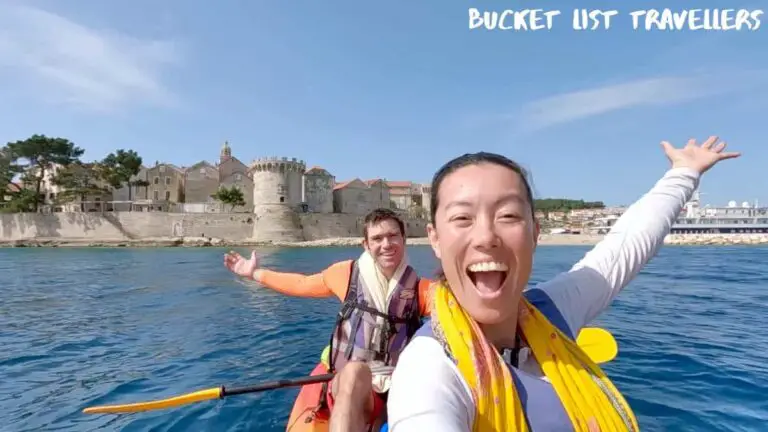
Korčula Destination Guide (2024): What You Need to Know
Leave a reply cancel reply.
Your email address will not be published. Required fields are marked *
Save my name, email, and website in this browser for the next time I comment.
Top 20 Places to See in Managua, Nicaragua
- El Malecón
- Managua Cathedral
- Masaya Volcano National Park
- Monumento a los Caídos en la Guerra de Defensa de la Revolución
- Monumento a los Héroes de la Revolución
- Monumento a los Héroes de la Revolución Nicaragüense
- Monumento a los Héroes de la Revolución Popular
- Monumento a los Héroes de la Revolución Sandinista
- Monumento a los Héroes y Mártires de la Revolución
- Monumento a los Mártires de la Libertad
- Monumento a los Niños Héroes
- Monumento a los Próceres de la Independencia
- National Library of Nicaragua
- National Museum of Nicaragua
- National Palace of Culture
- National Zoo
- Plaza Inter
- Revolution Square
- Rubén Darío National Theater
- Tiscapa Lagoon
- Cerro Musún Natural Reserve
- Cosigüina Volcano National Park
- Indio Maíz Biological Reserve
- Río Blanco-Indio Maíz National Park
- Río Blanco-Indio Maíz Natural Reserve
- Río Coco-Indio Maíz National Park
- Río Coco-Indio Maíz Natural Reserve
- Río Escalante-Chacocente National Park
- Río Escalante-Chacocente Wildlife Refuge
- Río Indio Maíz National Park
- Río Maíz National Park
- Río Maíz-Río Escalante Natural Reserve
- Río San Juan Biosphere Reserve
- Río San Juan National Park
- Río San Juan-Río Coco Natural Reserve
- Río Tuma-La Dalia National Park
- Río Tuma-La Dalia Natural Reserve
- Río Wawa-Tisey Estanzuela National Park
- Río Wawa-Tisey Estanzuela Natural Reserve
- Volcán Mombacho Natural Reserve
- Bluefields
- Boaco
- Chinandega
- Diriamba
- El Viejo
- Estelí
- Granada
- Jinotega
- Jinotepe
- Juigalpa
- Managua
- Masaya
- Matagalpa
- Nueva Guinea
- Ocotal
- Rivas
- San Carlos
- Somoto

Things to see and do on a trip to Managua, Nicaragua

Managua, besides being the capital of Nicaragua, is one of the most important and touristic cities in the country for its great historical and cultural legacy. The city has a lot to offer, and is located between lakes, volcanoes and natural parks where you can go hiking and many other activities. Managua Nicaragua is usually the starting point of a trip and many tourists only spend a few hours there, but the city has a lot to offer, as we’ll tell you below.
Although one day is enough to see the city, it’s often recommended that you spend a little more time to enjoy the surrounding area as well. That’s why we’ve prepared this post, so you can make the most of your trip and make sure you don’t miss anything. We also give you travel tips if you’ve never been to Nicaragua before and recommend some of the best places to stay and restaurants where you can try the country’s exquisite food. What are you waiting for to prepare your trip to Managua?
Post content
What are the best places to see in Managua?
1. plaza del 22 de agosto, the square of the revolution.
The Plaza del 22 de Agosto was a key historical place. Important events took place there during the revolution, such as the seizure of the National Palace. Today the square is a common meeting place for the city’s inhabitants, as the surrounding streets are lined with bars and restaurants.
All in all, it’s a lively place, with stalls and buskers creating a unique atmosphere and relaxed ambience. It’s also common to see a show or performance when the sun goes down.
2. Santiago de Managua Cathedral
The Cathedral of Santiago, situated in an exceptionally beautiful location, is one of the main symbols of the city of Managua Nicaragua. In the surrounding area there are meadows where you will see children playing and families spending the day. The building is a clear example of colonial architecture, in fact, it is an image often used in postcards because of its peculiar façade.

3. National Museum of Managua Nicaragua
Next to the Plaza de la Revolución you’ll find the National Museum of Nicaragua, where you can learn about the country’s history and culture. As well as pre-Columbian ceramics, sculptures and prehistoric utensils, the building houses a large collection of Latin American paintings.
Monday to Friday from 8:00 am to 6:00 pm and Saturday from 8:00 am to 12:00 noon, the museum is open from Monday to Friday from 8:00 am to 6:00 pm.
4. Port of Salvador Allende and the malecon
The malecon is the best place to appreciate the views of Lake Managua. The promenade runs along the entire shore and at one end is the Port of Salvador Allende, which is characterised by its atmosphere as it is full of bars and restaurants. There are also areas set up for outdoor dining, but access costs 29 córdobas. There are also boat trips on the lake from the harbour. This is a great place to get away from the city and get in touch with nature.
5. Huellas de Acahualinca Archaeological Museum
This museum collects evidence of human existence during prehistoric times in Managua Nicaragua. At the end of the 19th century some fossil footprints were found by chance, around which the museum was built. It is a very interesting visit where you will learn how humans lived thousands of years ago.
The entrance fee is 4€ and the visiting hours are from Monday to Saturday from 9:00h to 16:00h. From the Port of Salvador Allende it can be reached on foot in just 30 minutes.
Travel Tip: To organize your trip we recommend using Passporter totally free. You can be inspired by the experiences of other travelers, choose the places that interest you most, create the travel route with a geolocated map, upload all important documents such as reservations and invite your friends so that everyone can participate in the organization of the trip.

What to see around Managua
1. el chocoyero national park.
This park is named for the large number of parrots called chocoyos that inhabit it. This natural paradise is characterised by waterfalls and dense forests that cover everything. There you can go on excursions of varying degrees of difficulty and go camping. Tents can be rented on site.
From the centre of Managua Nicaragua you can go by bus for 90 córdobas. Buses leave from the Huembres Market every weekday every hour from 7:00h to 17:00h and on weekends between 7:00h and 16:00h.

2. Montibelli Private Nature Reserve
This nature reserve is famous in Managua Nicaragua for the great variety of birds that live in it. In fact, it is the perfect place for bird watching. Throughout its 162 hectares of extension you will find different hiking trails that run along the steep slopes riddled with trees.
The park reaches heights of up to 720 metres, so you’ll see different types of scenery depending on altitude. While the upper areas are covered in tropical rainforest, the lower areas still have some cultivated fields of lemons, bananas, pineapples and pitahayas.
3. Masaya, Managua’s volcano Nicaragua
A mere 22km from Managua is the Masaya volcano, one of the 7 volcanoes still active in the country. Its crater is 635 metres high and inside it there is a constant lake of lava that emits gases such as sulphur dioxide. The park where the volcano is located has an area of 54 square kilometres where you can see two volcanoes, five craters and a volcanological museum. At the foot of the Masaya volcano is a lagoon of the same name, which creates a curious contrast with the mountain.
Access by car is very easy, and there is even a road that takes you to one of the craters. It’s perfectly set up for tourists.
What to see in 1 day in Managua, Nicaragua
Managua is a city you can easily get around in one day, although if you want to see absolutely everything both inside and outside the city, then a week is recommended.
In one day you can see the main sights such as the Plaza de la Revolución, the Cathedral, the Malecón and the port, the National Museum and stroll through the streets without rushing. If you have more time, you should know that there are many other places of interest such as the archaeological museum and the city’s parks and markets.
There are also many places in the surrounding area where you can organise day trips in the countryside. For example in the Chocoyero National Park or in the different lagoons and volcanoes that are located near the city.

Where and what to eat in Managua
Nicaraguan cuisine is characteristically varied and uses maize as a base, like many other countries in South America. In Managua, it is common to go to the fritangas , places that serve traditional dishes such as tajadas con carne , papas rellenas , enchiladas , tacos or cold drinks such as barley fresco. Nicaragua is also a great place to enjoy a good cup of coffee. Here are some of the best restaurants in the city to try traditional dishes:
- Los Ranchos: is a restaurant with traditional Central American cuisine specialising in top quality meat. The price ranges between 15€ and 30€. They also offer vegan options.
- La Trenza: is a simple, inexpensive restaurant serving traditional cuisine. It’s famous for its delicious breakfasts, but also serves lunch and dinner.
- Cocina de Doña Haydée: is a traditional cuisine restaurant, ideal for tasting the most typical dishes. The dishes, as well as being delicious, are plentiful and the price is very moderate.
Where to stay in Managua
Due to the city’s tourist appeal, it’s not difficult to find accommodation. However, the problem is where to stay, as the city has tourist attractions in the centre but also in the surrounding areas. The safest and best connected areas to the centre are around the Metrocentro Mall and the Zona Rosa. Here are some recommendations for good accommodation options.
- Managua Backpackers Inn: This cosy hostel is a good option for backpackers. It has common areas such as a lounge, kitchen, garden and swimming pool, and also offers family rooms. A night in a bunk bed costs €13.
- Hotel Globales Camino Real Managua: This is a luxurious 5-star hotel with all the amenities. It has a swimming pool, gym, spa, restaurant and bar. It also offers a fabulous breakfast for €13. The price per night is around €130.
- La Bicicleta Hostal: This cosy hostel is a great place to stay with the family. It has a garden and shared kitchen, and as well as rooms from €50 a night, it also offers the option of a bunk bed for €19.
How to get to Managua
From Spain there are regular flights to Managua, but all of them with at least one stopover. The journey takes about 16 hours and tickets cost around €1300. Managua’s international airport is called Augusto C. Sandino and offers several options for getting to the centre. The bus is the cheapest, but it can be difficult to find your way around. Taxis aren’t too expensive, but you’ll need to carry cash in local currency. The most convenient and reliable option is to hire a transfer from the hotel, although it’s not the cheapest. If you’re touring the country, you might consider renting a car from the airport.

What should I consider before travelling to Managua, Nicaragua?
- No visa is required to enter Nicaragua, but a passport valid for at least 6 months is required.
- The city is safe, but you are advised to exercise caution and keep an eye on your belongings.
- No vaccinations are required to enter the country if you are travelling from Spain.
- The official language in Nicaragua is Spanish.
- The country’s currency is the córdobas.
- It is best to change money before you start your trip, as there are shops and restaurants that do not accept credit cards.
- The climate is warm all year round, but between June and December is the rainy season.
- Avoid eating at street stalls and drinking tap water.
- Be prepared for medical emergencies – travel with insurance.
How to prepare what to see on your trip to Managua, Nicaragua?
Register or download the Passporter App and discover all its possibilities.
- Get inspired by the experiences of other travellers.
- Create your own itinerary and add the app’s suggestions.
- Add the stops that interest you most, as well as the restaurants and bars where you want to eat (you can use the points of interest listed in this post as a reference).
- Organize your itinerary by route days according to their location on the map (you can get inspiration from the routes we present in the post).
- Check the travel budget that the app calculates according to your travel stops, restaurants, and leisure activities.
- Make the modifications you need, and you’ll be all set for your trip.
- Share your experience. Upload photos of the places you have visited on your trip to the app and recommend other travellers what to see in Managua, Nicaragua.
Frequently asked questions about a trip to Managua Nicaragua
The months with the best weather are December to April, as temperatures are mild and there is no rainy season.
Although the water is safe to drink in urban areas, it is best to avoid drinking water directly from the tap throughout the country as our stomach may react to a different minerality.
Managua, being the capital of the country, is characterized by the wide gastronomic offer of its restaurants. The best places to try traditional dishes, such as meat slices, are called fritangas .
Share this:
Further reading....

Things to see and do in Corn Island, Nicaragua

Best beaches in Nicaragua

The best hotels and lodging in Nicaragua
No comments, leave a reply cancel reply, things to see and do on a trip to nicaragua, things to see and do on a trip to san juan del sur.

15 Places to visit in Managua for the Travelling Architect

Managua, which is esteemed for its history, is the second biggest metro area in Central America and by far the biggest city and urban centre in Nicaragua. The city is Nicaragua’s chief trading centre for coffee, cotton, and other crops and also a prime industrial centre. Parks and public plazas bring people together and strengthen the connection with nature. The architecture of Monuments, churches, and plazas in Managua has a significant role in reflecting the culture and history of the place.
Here are 15 incredible places you must visit in Managua:
1. Revolution Square
The Revolution Square, formerly known as the Plaza de Armas, is located in the historic centre of Managua. This is the setting where the revolutionary fighters took up arms to establish democracy.
This square comprises the National Palace of Culture and the Old Cathedral buildings, representing political and religious power. The Palace Of Culture, which was constructed in 1940, is a significant example demonstrating the Neo-classical Architecture style contrary to the Old Cathedral, designed by Pablo Dambach and finished in 1938.
The Revolution Square

The Old Cathedral

The National Palace of Culture

2. National Palace of Culture
The National Palace of Culture is one of the largest and major artistic and cultural centres created in Nicaragua’s capital by the end of the 19th century. The Old Cathedral and the Presidential Palace are in proximity to the National Palace. The National Museum, also known as Palacio National de la Cultura, provides nine permanent and temporal exposition rooms.
It was designed by architect Pablo Dambach which encompasses the National Library, the National Archives, and the National Museum of Managua, all under one impressive Neo-classical roof. The murals and statues used in the building accentuate the mere function of the palace.

View of The National Palace of Culture

The National Museum entrance

3. The Old Cathedral Of Managua
The Old Cathedral of Managua, known as the Catedral de Santiago, is a part of The Revolution Square. It was designed by Belgian Architects whose construction was overseen by Belgian engineer Pablo Dambach.
The Neo-classical architectural style of the cathedral was said to have been inspired by the look of the church of Saint-Sulpice in Paris, France. The Cathedral survived many earthquakes except for the disastrous 1972 Nicaragua earthquake that led to the building’s closure.

Interiors of The Cathedral

4. Immaculate Conception Cathedral
The Metropolitan Cathedral of the Immaculate Conception of Mary, which is known as the New Cathedral, was dedicated to the Immaculate Conception of the Virgin Mary. This cathedral, as a substitute, did the duty of the Old Cathedral, which was thought to be unrestorable after a 1972 earthquake that destroyed 90% of the city.
The cathedral’s design is earthquake-resistant and is indicative of human and spiritual values, and offers the Nicaraguan people a place of hope, love, and prayer.

5. Sandino Monument
Sandino Monument, also known as Monumento a Sandino, sits on one of the highest points of Managua, a volcanic hill above Tiscapa Lagoon. It consists of a 59-feet high steel statue that can be seen from many parts of Managua and is dedicated to Augusto Cesar Sandino, one of Nicaragua’s most famous revolutionaries.
The little detail beyond the hatted silhouetted figure of the freedom fighter is a noticeable feature.

6. Mezquita de Managua
Mezquita de Managua is a beautiful mosque located south of the historical district of Managua for its Muslim population. This mosque is equipped with a playground and a parking lot. It also houses a library above the praying area. The interiors of the mosque are lit by numerous windows imitating Islamic architecture.

Interiors of the mosque

Minar Of the mosque

7. Puerto salvador allende
Puerto Salvador Allende is a lakeside promenade that is occupied with restaurants, parks, and children’s playgrounds. It is on the southern coast of Xolotlán Lake in the northern part of Managua. Beautiful vistas with engaging activities make the lakefront lively and establish a connection with nature. The play of colours is evident throughout the promenade highlighting certain areas.

Lakefront Harbour

8. Seawall, Managua
Seawall Managua is a paved lakeside plaza that offers amazing vistas for the public. The plaza is more engaging with the appropriate use of colours and certain elements such as the “Trees of Life,” which are also seen in the Sandino Monument and virtually everywhere in the capital city.
Trees of Life

9. Parque Japón Nicaragua
Parque Japon Nicaragua is a Japanese urban park situated in the Residencial Los Robles, in Managua, Nicaragua. It is regarded as one of the best parks in central America in the light of design, style and safety. It is an amalgamation of two very distant cultures that is a Japanese-style park and a Nicaraguan-style park. This park houses a building with traditional Japanese Architecture mainly intended for organising educational, cultural activities.
Japanese landscaping is evident through its dry garden or, as the Japanese call it, a Karesansui, typical in Zen temples and appropriate for meditation, and the wooden bridges that connect the islands.

Torii – Entrance to the park

10. PAC Cultural Centre – Pablo Antonio Cuadra Cultural Centre
PAC cultural centre is a major cultural meeting place in Managua, houses PAC Museum, PAC Auditorium, bookstore, gallery of musical instruments handicrafts and cafeteria.
PAC has two main sections: one is the modern auditorium with a capacity of around 250 people, which has high-quality audiovisual equipment and high-technology acoustic design, and a museum where photographic, paintings, and handicrafts works are exhibited, depending on the time.

11. Ruben Dario National Theatre
Ruben Dario National Theatre is a spectacle of modern architecture in Central America and became an exemplar for future architects. It was designed by José Francisco Terán Callejas in 1963.
This project re-energised the centre of Managua, which has impressive views of Managua’s lake and is located in a natural setting of volcanoes and mountains. It mainly houses three main spaces: the Crystal Room, the Main Hall, and an Experimental Theater.
The Main Hall consists of precisely 1,200 seats distributed between 3 balconies, and the main floor is designed in continental style. The Experimental Theater, a space dedicated for local artists to develop their skills, is planned beneath the main hall and can accommodate 230 people.

12. Metrocentro
Metrocentro is a shopping centre in the capital city which houses about 120 stores, a food court, a supermarket, and a movie theatre. It is developed and operated by Salvadorean Grupo Roble. White colour is dominantly used on the exteriors of the building, accentuating it from the surroundings. All the blocks of the building are spread across the site rather than the vertical development.
Further, in the years, a new storage space, building of the four-star Hotel Real InterContinental Metrocentro Managua, more than 25,000 m2 of new commercial space, and two-level parking spaces were added.

13. Plaza de La Fe
Plaza de La Fe, known as The Place of Faith, is the locus of celebrations in Nicaragua. The acoustic shell, which is the focus of the plaza, is located at the rear end.
The shell is designed to support the directional sound reflections both to the plaza and the performers. The concavity of the shell and its elements pitch in achieving acoustic requirements. This shell has an enormous capacity for full orchestra and choir and supports all types of performances and presentations, be they multi-band, dance, classical music, or speech.

Elements of Acoustic shell

14. Augusto C. Sandino International Airport
Sandino International Airport is the principal joint civil-military public international airport in Managua. It is named after Nicaraguan revolutionary Augusto Nicolás Sandino, and many sculptures of Sandino are noticeable in the airport lobby spaces.
According to EAAI, ACS is the most modern airport in Central America and the 4th safest in the world. Structural materiality is very evident throughout the structure.

15. Ruben Dario Monument
Ruben Dario Monument in Managua is situated in the park near the Plaza de le Revolución. This monument is built to memorialise a famous poet, a leader of the modernist movement that characterises Latin American literature.
This monument depicts modern style. It houses a white structure, emphasised with a water feature, depicting national poet Rubén Darío amid a heavenly scene of angelic figures on a boat.

References :
- Managua | History, Landmarks, Economy, & Facts | Britannica. (2020). In: Encyclopædia Britannica . [online] Available at: https://www.britannica.com/place/Managua .
- Expedia.com. (2021). Visit Monumento a Rubén Darío in Managua | Expedia . [online] Available at: https://www.expedia.com/Monumento-A-Ruben-Dario-Managua.d553248621532965048.Vacation-Attraction?gallery=open&pwaLob=wizard-package-pwa
[Accessed 4 Oct. 2021].
- ArchDaily. (2020). AD Classics: Rubén Darío National Theatre / José Francisco Terán . [online] Available at: https://www.archdaily.com/932148/ad-classics-ruben-dario-national-theatre-jose-francisco-teran
[Accessed 4 Oct. 2021].
- vianica.com. (n.d.). The National Museum. [online] Available at: https://vianica.com/go/specials/17-national-museum-nicaragua.html
- vianica.com. (n.d.). Managua, Nicaragua – ViaNica.com . [online] Available at: https://vianica.com/nicaragua/managua
[Accessed 4 Oct. 2021].
- Trip101. (2019). Top 29 Things To Do In Managua, Nicaragua – Updated 2021 . [online] Available at: https://trip101.com/article/things-to-do-in-managua-nicaragua [Accessed 4 Oct. 2021].

Manya is an architecture student pursuing her Bachelors and loves to explore, learn and grow.She believes in divergent thinking which made her passionate about Research and writing Architecture. Graphic designing and creating pieces of Art interests her and helps her escape reality.

Grupo Editorial Record by STUDIO DLUX

15 Castles around the World that are considered Haunted
Related posts.

United Kingdom: Noteworthy Vernacular Buildings

Street Art and Graffiti in Kolkata

Vadnagar – A multi-layered Historic town, Gujarat

Museums of the World: Virasat-E-Khalsa

Architectural Spirituality in Bhutan: A Deep Dive into Monastic Structures

Museums of the World: Smritivan Earthquake Memorial and Museum
- Architectural Community
- Architectural Facts
- RTF Architectural Reviews
- Architectural styles
- City and Architecture
- Fun & Architecture
- History of Architecture
- Design Studio Portfolios
- Designing for typologies
- RTF Design Inspiration
- Architecture News
- Career Advice
- Case Studies
- Construction & Materials
- Covid and Architecture
- Interior Design
- Know Your Architects
- Landscape Architecture
- Materials & Construction
- Product Design
- RTF Fresh Perspectives
- Sustainable Architecture
- Top Architects
- Travel and Architecture
- Rethinking The Future Awards 2022
- RTF Awards 2021 | Results
- GADA 2021 | Results
- RTF Awards 2020 | Results
- ACD Awards 2020 | Results
- GADA 2019 | Results
- ACD Awards 2018 | Results
- GADA 2018 | Results
- RTF Awards 2017 | Results
- RTF Sustainability Awards 2017 | Results
- RTF Sustainability Awards 2016 | Results
- RTF Sustainability Awards 2015 | Results
- RTF Awards 2014 | Results
- RTF Architectural Visualization Competition 2020 – Results
- Architectural Photography Competition 2020 – Results
- Designer’s Days of Quarantine Contest – Results
- Urban Sketching Competition May 2020 – Results
- RTF Essay Writing Competition April 2020 – Results
- Architectural Photography Competition 2019 – Finalists
- The Ultimate Thesis Guide
- Introduction to Landscape Architecture
- Perfect Guide to Architecting Your Career
- How to Design Architecture Portfolio
- How to Design Streets
- Introduction to Urban Design
- Introduction to Product Design
- Complete Guide to Dissertation Writing
- Introduction to Skyscraper Design
- Educational
- Hospitality
- Institutional
- Office Buildings
- Public Building
- Residential
- Sports & Recreation
- Temporary Structure
- Commercial Interior Design
- Corporate Interior Design
- Healthcare Interior Design
- Hospitality Interior Design
- Residential Interior Design
- Sustainability
- Transportation
- Urban Design
- Host your Course with RTF
- Architectural Writing Training Programme | WFH
- Editorial Internship | In-office
- Graphic Design Internship
- Research Internship | WFH
- Research Internship | New Delhi
- RTF | About RTF
- Submit Your Story
Looking for Job/ Internship?
Rtf will connect you with right design studios.


15 Top-Rated Attractions & Things to Do in Nicaragua
Written by Carri Wilbanks Updated Jul 13, 2022 We may earn a commission from affiliate links ( )
Biodiverse and naturally beautiful, Nicaragua is a still off-the-grid destination, filled with active volcanoes, cloud forests, jungles, lakes, and two coastlines, all boasting plenty of attractions and things to do.
Outdoor adventure enthusiasts can hike to natural attractions like crater lakes in dormant volcanos or sled down mountains of ash on wooden boards. While those in search of wildlife experiences can explore one of the many protected reserves around Nicaragua that are home to everything from jaguars to howler and white-faced monkeys and hundreds of species of birds.
With beaches on both its Caribbean and Pacific Ocean coastlines, there are plenty of options for getting wet as well. Towns like San Juan del Sur on the Pacific Ocean's Emerald Coast near Costa Rica are top places to visit, famous for their colorful architecture and surf scene. While the Corn Islands in the Caribbean Sea are known for their laid-back beach vibe.
Managua is Nicaragua's capital city, but people tend not to linger here unless visiting for business. Many things to do really lie in the smaller cities, like Leon and Granada , which are known for their colorful architecture and churches, and natural attractions such as Lake Nicaragua. It is the largest freshwater lake in Central America and home to hundreds upon hundreds of islands, including some with amazing ecolodges.
And then there are the multitude of volcanoes, some dormant; others, like the Masaya Volcano , still very much active. Here are our picks for the top things to see and do around Nicaragua.
1. Islets of Granada
2. corn islands, 3. masaya volcano, 4. cerro negro, 5. mombacho volcano nature preserve, 6. lake nicaragua, 7. san juan del sur, 8. somoto canyon national monument, 9. isla ometepe, 10. bosawas biosphere reserve, 11. granada, 12. reserva natural miraflor, 14. apoyo lagoon natural reserve, 15. san juan de oriente, map of attractions & things to do in nicaragua.
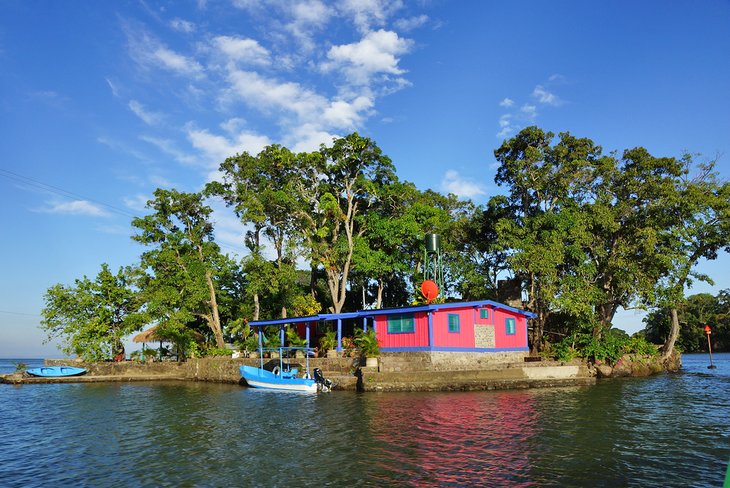
Lake Nicaragua is home to 365 small islands that form an archipelago known as Las Isletas or Islets of Granada, due to their location southeast of the colonial city of Granada. The islets are more than 25,000 years old, initially formed from the ash and stones of the Mombacho volcano .
While some islets are deserted, others have limited development, mostly in the form of ecolodges. Jicaro Island Lodge is one such place. The boutique property is truly special, a place where you can disconnect to reconnect with nature. And you can explore the other islets by SUP board or kayak from the dock at Jicaro if you're staying here.
The accommodation at Jicaro Island Lodge is in two-story wooden treehouses that have an indoor/outdoor vibe and truly feel like sleeping in the midst of the jungle (but are protected from mosquitoes and other biting bugs).
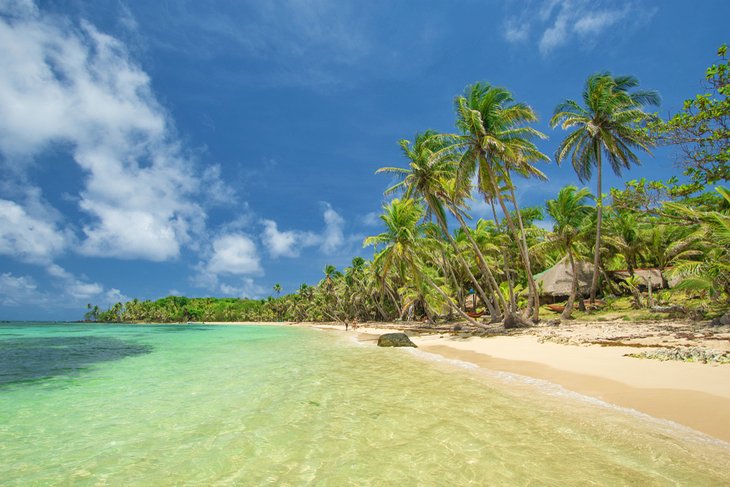
In the Caribbean Sea, about 70 kilometers off Nicaragua's east coast, the Corn Islands are where to go for a laid-back holiday. Big Corn is where you will usually arrive (there are flights from Managua), but you can sleep on either isle.
Despite its name, the Big Corn is actually quite small, and you can bike around it in about an hour. The beaches here are beautiful, light-gold-sand affairs fronted by crystal-clear, turquoise water that stays warm year-round.
From Big Corn, it is a 40-minute boat ride to Little Corn . The tiny island has some accommodation and eating options but no banks or vehicles. You can walk around Little Corn in less than an hour.
There is excellent diving in the reefs off both the Corn Islands, which is why many people visit.
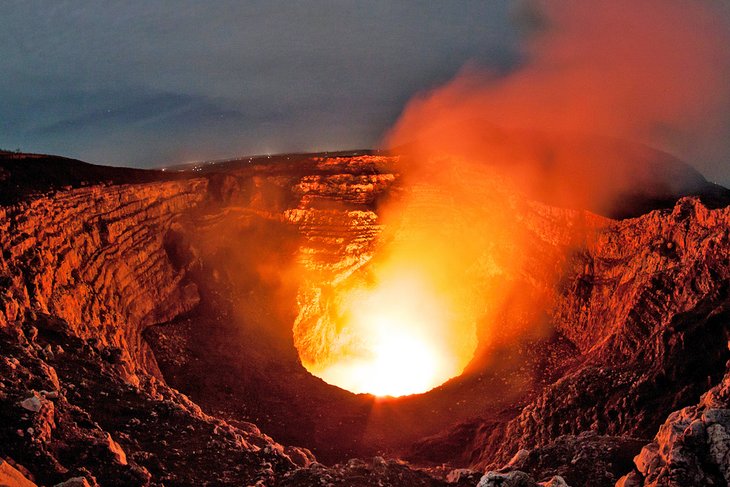
Protected in the country's largest national park, the Masaya Volcano is also one of Nicaragua's top places to visit, just 20 kilometers south of Nicaragua's capital city of Managua.
The most amazing part about visiting this active volcano is how close you can get to the lip of the crater in a private vehicle - you simply drive right up to the edge and park, although you have to park facing downhill in case an emergency evacuation is necessary.
Looking down into the crater, you can see a lake of molten lava. Visit after dark to see the glow the bubbling lava creates inside the pit. If you visit during the day, there is a museum on-site, as well as picnic facilities.
The volcano can be visited on a day trip from Managua or Granada .
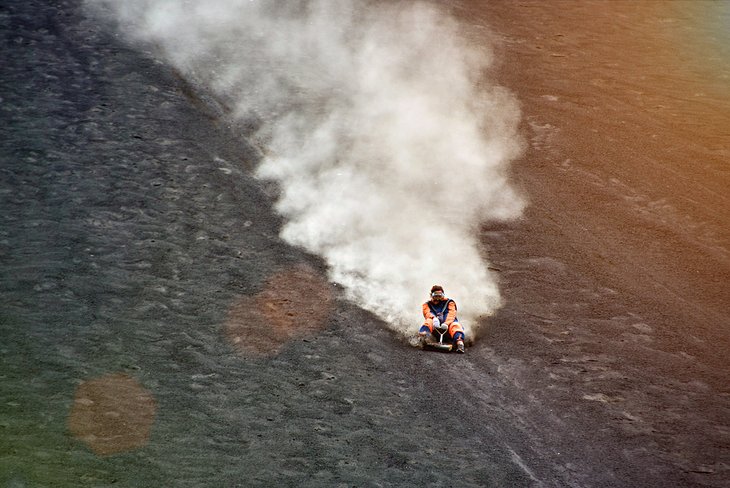
If you want to get your adrenaline pumping a bit then head to Cerro Negro. One of the youngest volcanoes in the world, it last erupted in 1999 and features a dramatic black cone.
While it's still considered active, today most people head to Cerro Negro to try their skills at volcano surfing. The sport involves riding down the side of the volcano's black ash on a wooden surfboard. You'll be wearing a boiler suit and goggles for protection, and you can reach speeds of upwards of 60 miles per hour. The boards can either be ridden sled style (sitting down) or standing up like a surf or snowboard.
Note that to ride down the volcano, you have to hike up. The trek takes about 40 minutes. Most people try this on an organized adventure tour.
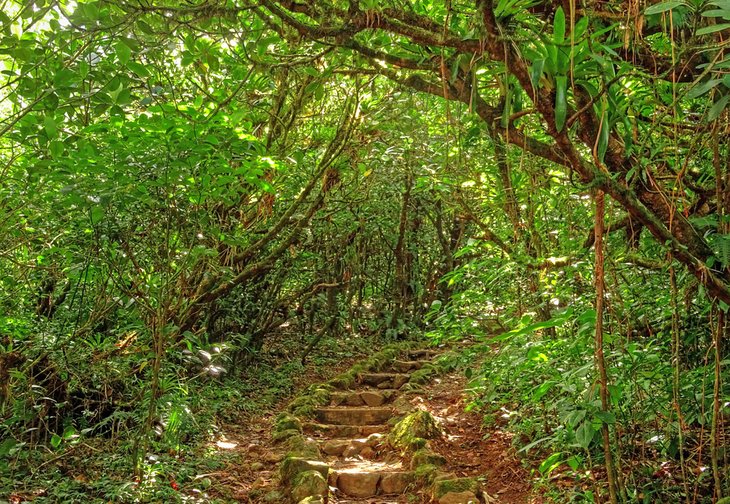
Located atop the dormant Mombacho Volcano, this nature preserve includes a unique cloud forest landscape and covers 2,500 acres. It sits to the southwest of Managua , just 10 kilometers from the colonial town of Granada and magnificent Lake Nicaragua .
Surrounded by rural farms and coffee plantations, the landscape is beautiful. The reserve is known for its prolific, colorful and fragrant flora, with more than 800 species of plants growing here.
There are also hundreds of animal species making their home on Mombacho, including the bright red and green quetzal bird and a number of monkey species such as white-faced monkeys and howler monkeys. The best way to experience the preserve is on one of the many hiking trails running through it.
The reserve is also home to a tourist center, where you can pick up a guide to hike around one of the four volcanic craters, all covered with a rare type of cloud forest that is only found in one other spot in Nicaragua: the Maderas volcano on Ometepe Island .
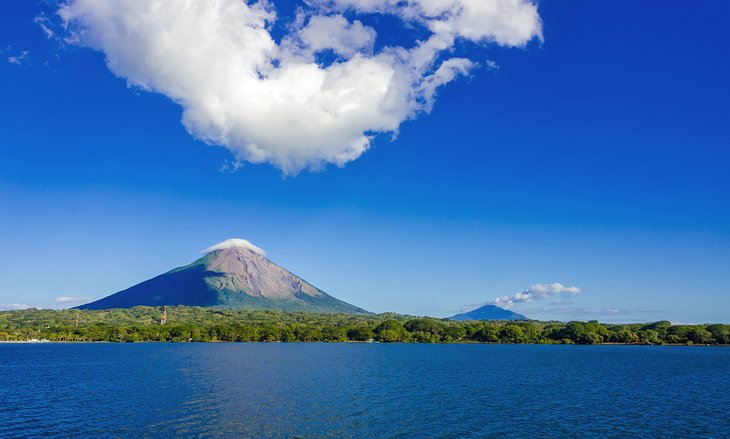
When Spanish colonists first saw Lake Nicaragua, it was so vast, they thought it was a sea. In reality, it is Central America's largest lake at 177 kilometers long with an average width of 57 kilometers. It is home to more than 365 small islets and larger islands, like Ometepe, with two volcanos, in the lake's center.
Another interesting fact about Lake Nicaragua is that it is the only freshwater lake to have ocean animals, including sharks. It is believed the lake was once a sea bay, but then a volcano erupted, trapping marine life and turning it into an inland lake. Over the millennia, the marine life has adapted to living in freshwater.
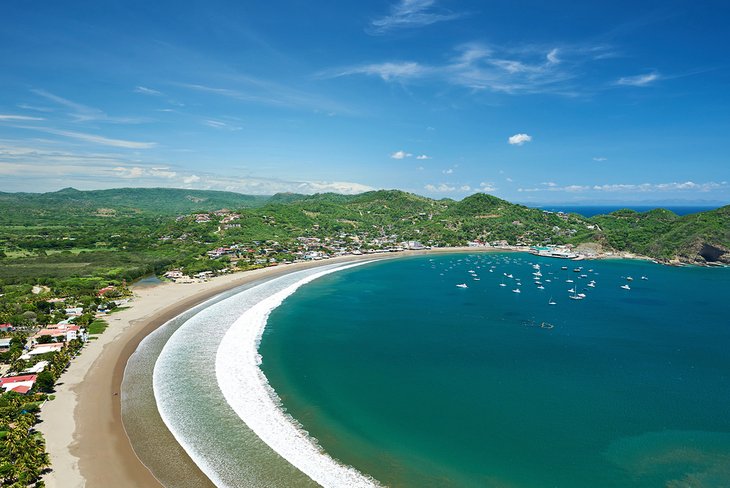
In southwest Nicaragua, on the Emerald Coast, near the border with Costa Rica , San Juan del Sur is a vibrant town with a large expat community and an excellent surf beach just 20 miles to the north. The town itself is filled with colorful buildings and murals. There is also a large Christ of the Mercy statue perched on a hill overlooking the city below that is worth a hike up for sunset, especially to experience the views.
And then there is the long gold-sand meets Pacific Ocean Playa Maderas beach, which is also lined with small hotels and eco-resorts. It picks up most of the swells that hit Nicaragua and is best approached at medium to high tide.
The beach is also known for its long, drawn-out sunsets with an amazing display of bright, shifting colors.
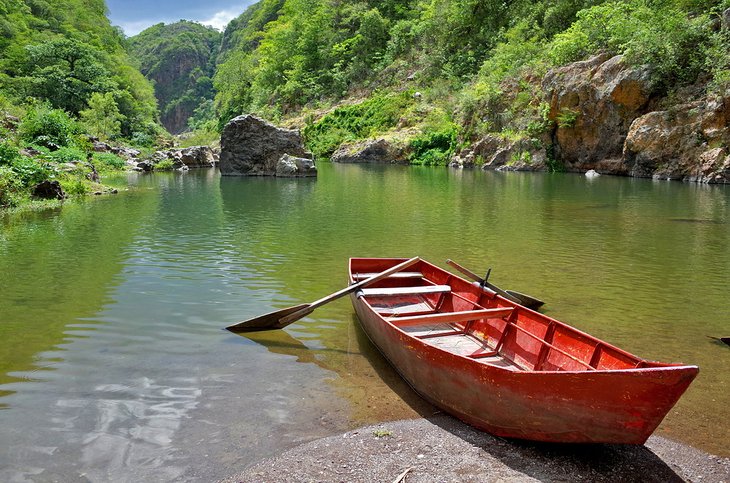
Discovered accidentally in 2004 by two Czech geologists, Somoto Canyon National Monument is now a protected gorge in northern Nicaragua about 2.5 hours from Leon .
The scenery here is stunningly beautiful, and this is also another perfect destination for adrenaline addicts. You can book four- or six-hour descents of the narrowest section of the gorge. Both trips require rock scrambles, floating down rapids in inner tubes, and jumping from high cliffs into deep pools. The six-hour trip also includes rappelling down cliffs into bat-filled caves. Either way this is an adventurous day trip.
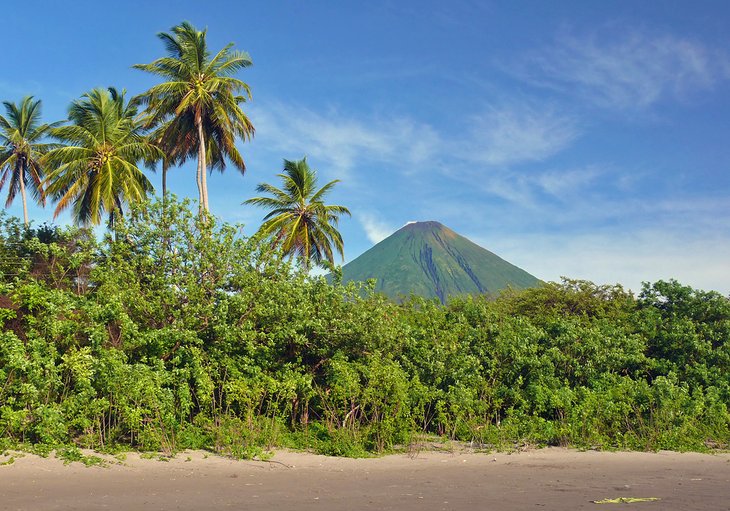
Isla Ometepe is in Lake Nicaragua, the largest freshwater lake in Central America and also home to the Islets of Granada. The island has not one but two volcanos, both of which can be climbed.
Maderas is the volcano in the south of Ometepe, and it is less active than the Concepcion volcano in the north. The hike to the summit of Maderas takes you to a beautiful crater lake. There is also an impressive waterfall at the base that cascades for almost 50 meters down a sheer rock wall.
The island is also popular for horseback riding, mountain biking, or kayaking the Istian River that runs through it. You can also just laze on the white sands of Santo Domingo beach.
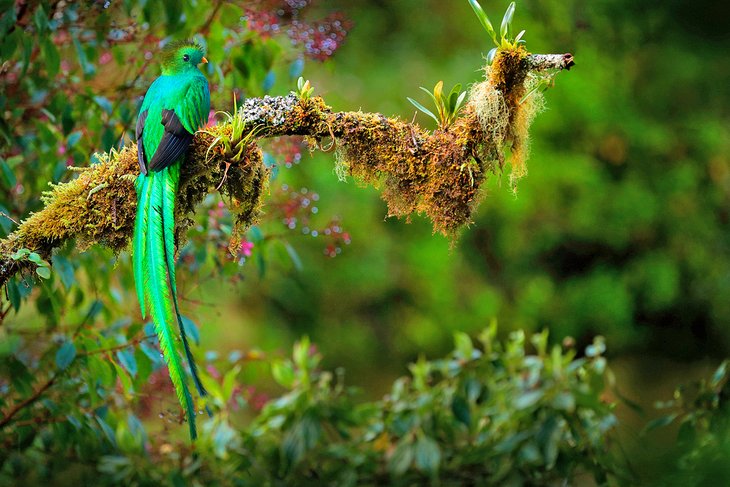
Second only in size to the Amazon rainforest in Brazil, Nicaragua's Bosawas Biosphere Reserve was established in 1997 to protect the biodiversity found in this northern corner of the country. The reserve also protects the free flow of species between Mexico and Central America.
A birder's paradise, you'll find that 600 of the 790 bird species that call Nicaragua home live in this reserve. You'll also find plenty of mammals, including jaguars, Baird's tapir, and spider monkeys in the trees and on the forest floor.
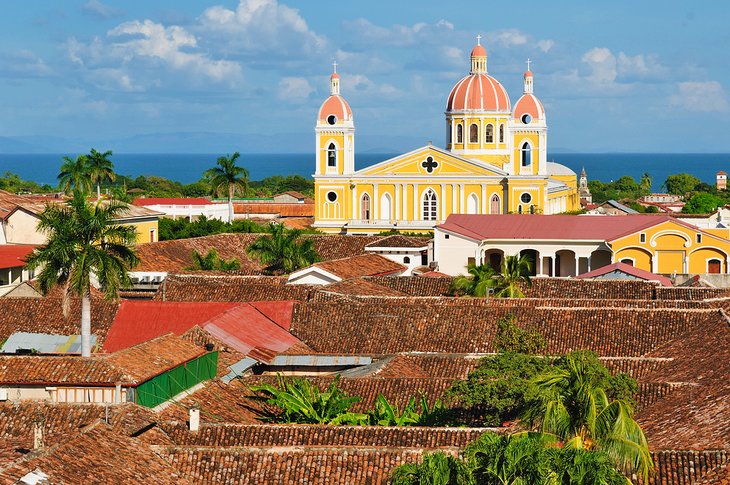
Colorful Granada is a wonderful old city to wander for an afternoon. It is home to some of the best-preserved architecture in Nicaragua, including a number of buildings and churches constructed in Spanish colonial style.
Here, you'll find Convento San Francisco , which is one of the oldest churches in Central America. It has an unmissable Tiffany blue facade, and inside, you'll find one of Nicaragua's top museums, dedicated to the country's pre-Columbian people. There are also restaurants, shops, and coffee houses with sidewalk seating around its main square.
Granada is a popular base for exploring the islands in Lake Nicaragua on whose shore it sits.
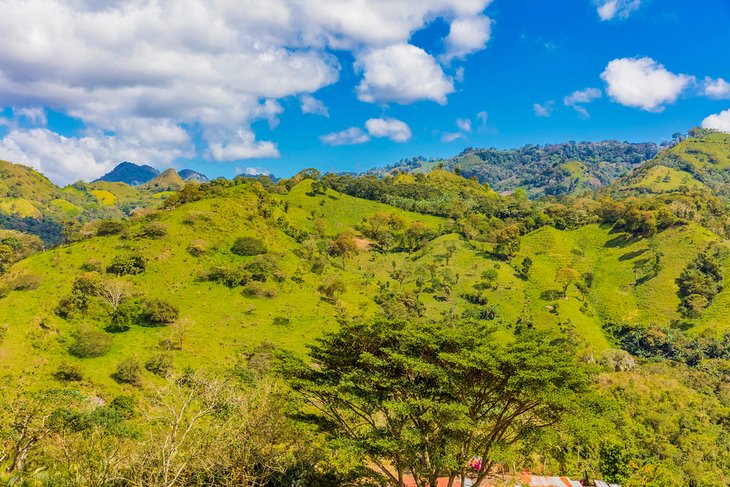
From cooling off under icy waterfalls to horseback riding or trekking in search of some 300 species of birds that live here, including the bright queen quetzal, there is plenty to keep you naturally entertained at Reserva Natural Miraflor.
This reserve in Nicaragua's north covers three climate zones, including dry forest and cloud forest. Visitors can also participate in community tourism projects here at coffee cooperatives. These give you a chance to spend a night with a local family and get a glimpse into their culture and way of life.
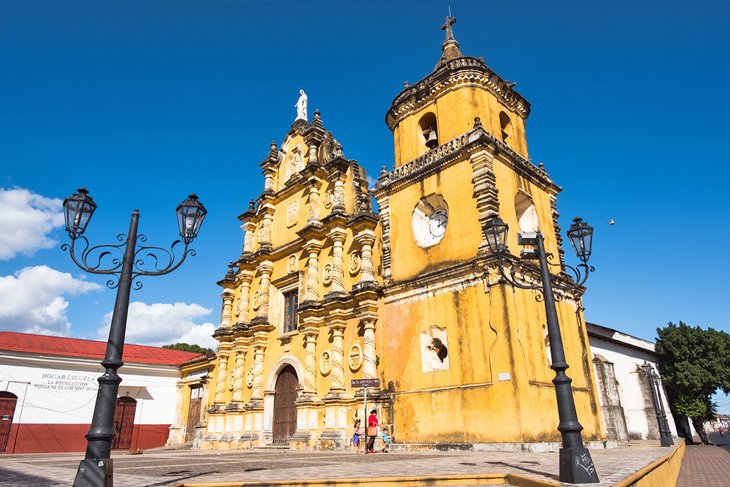
Home to Nicaragua's National University , Leon is considered the country's intellectual capital. The city is also known for its cathedral, art museums, and growing food scene. Leon's cathedral is Central America's biggest, and merges Baroque and Neoclassical styles.
Just a few blocks north of the cathedral is Iglesia de la Recoleccion , which is a beautiful church dating back to 1786. It is built in Mexican-style Baroque design and features a distinct, deep-yellow facade with cream trim. While strolling the walkable downtown, also keep an eye out for murals and graffiti dating back to the political war of the 1980s.
You can also visit the 16th-century ruins of Leon Viejo (old Leon), a UNESCO World Heritage site, and one of the first Spanish colonial settlements in the Americas. These ruins are just a short drive from Leon.
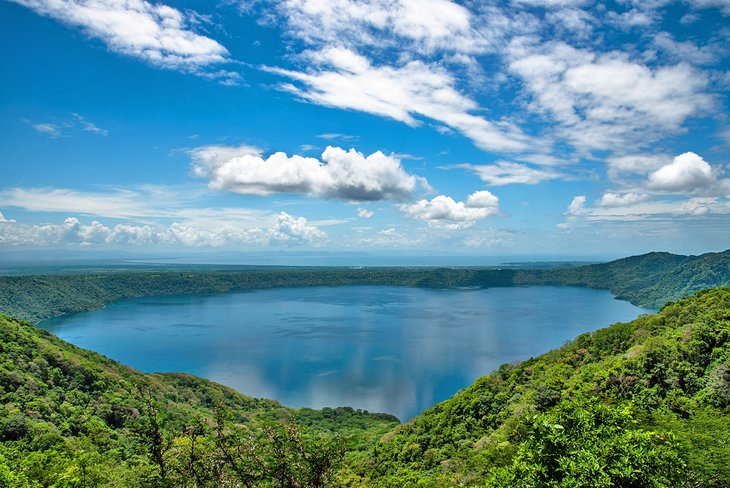
Less than a 30-minute drive from Granada , Apoyo Lagoon Natural Reserve is a giant volcanic crater lake that was created more than 20,000 years ago when the original volcano's cone imploded.
The lake is about 198 meters deep and is so big that when the wind blows hard enough, there are waves big enough to windsurf. The lake is also fed by volcanic fumaroles that keep the water warm and slightly salty.
Activities include kayaking, swimming, scuba diving to explore thermal vents, or just chilling at one of the restaurants on the beachfront.
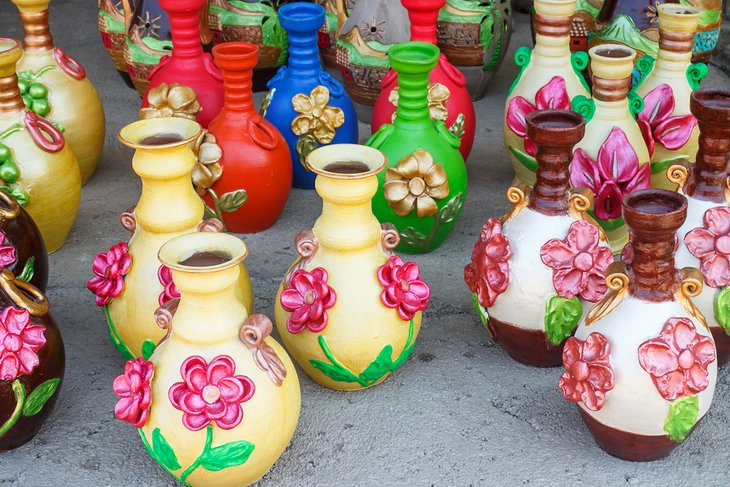
If you are in the market for ceramic handicrafts , whether in the form of ornately decorated vases or functional cookware, pay a visit to the village of San Juan de Oriente. Located about 45 kilometers from Managua, it is known as the "town of potters," and the artisans here have been creating beautiful pieces out of clay since before the Spanish conquistadors invaded the region.
Upon entering the small town, which has a beautiful setting overlooking the Masaya lagoon, you'll see dozens of pottery shops . The majority of people here earn their living creating colorful works of art and are very friendly and happy to share their work and the stories behind it with travelers. Most of the shops are family-run affairs, with one member in charge of the carving and design, another overseeing the kiln, and a third polishing the finished product.
Some names to look for while shopping include Gregorio Bracamonte's recreations of pre-Columbian jaguar vases (the artist passed away in 2019, making his work even more valuable today); and Helio Guitérrez, who is known for his bold geometric designs.
For working kitchenware that includes intricate designs, visit Miguel Angel Calero's shop. His pieces are also known for their highly polished, glass-like shine, and he has been called a local Michelangelo.
More Related Articles on PlanetWare.com
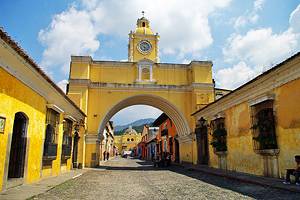
Central America: This part of the world offers many great adventures and intriguing destinations. To the south of Nicaragua, Cost Rica is fill with natural attractions, beaches, and incredible opportunities to see wildlife. Also worth checking out in Central America are the sights of Guatemala . Lakes, volcanoes, culture, and history make this a country worth working into your itinerary.

Nomadic Matt's Travel Site
Travel Better, Cheaper, Longer
Nicaragua Travel Guide
Last Updated: September 1, 2023
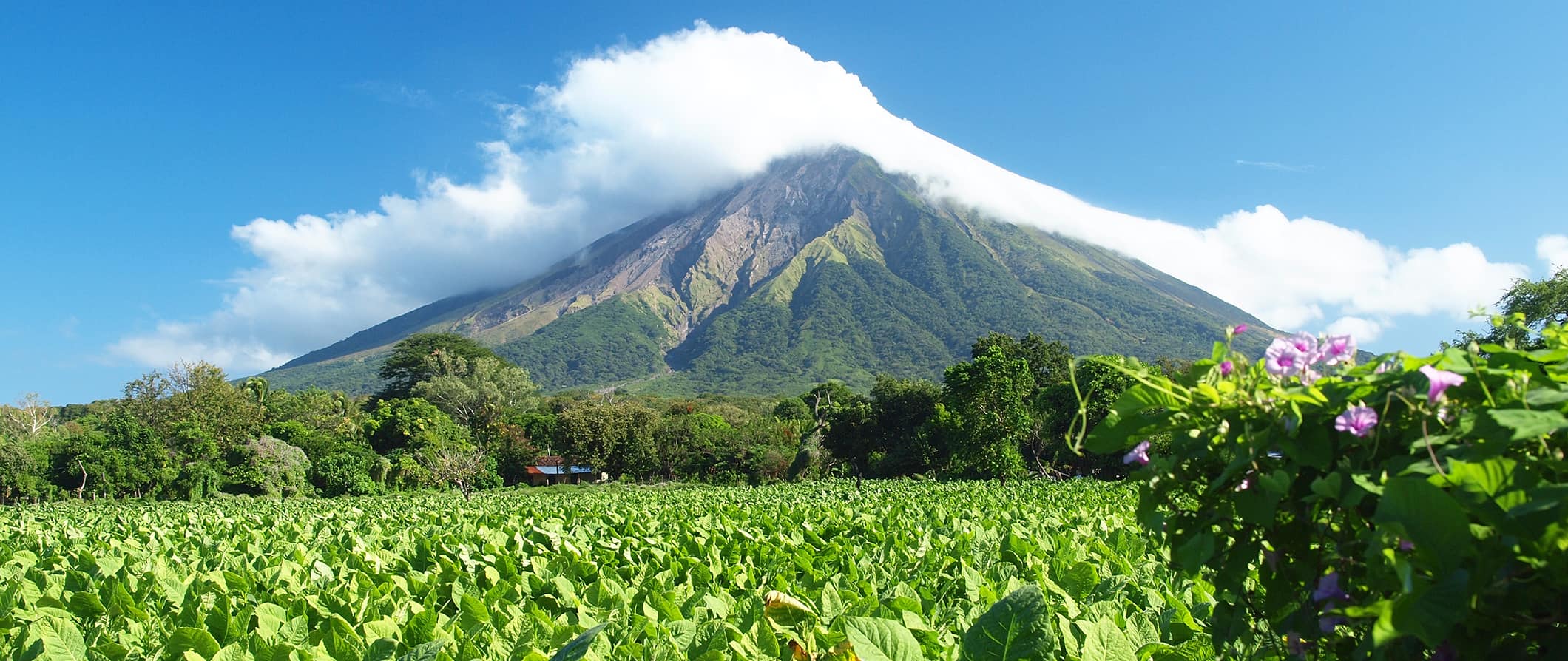
Known as the “Land of Lakes and Volcanoes,” Nicaragua is the largest country in Central America. Home to Lake Nicaragua (Central America’s largest lake), beautiful islands, expansive volcanic terrain, mangrove swamps, ethereal cloud forests, and tropical rainforests, Nicaragua is a stunning destination with tons of things to see and do — no matter your interests.
In fact, I loved my visit to Nicaragua so much I ended up extending my visit!
While Granada, León, and San Juan del Sur tend to pull in the crowds, if you leave the main southern cities and get a little off the tourist trail, you can discover even more varied landscapes, friendly locals, and little explored towns and national parks.
This travel guide to Nicaragua shows you how to visit on a budget, save money, and make the most of your trip.
Table of Contents
- Things to See and Do
- Typical Costs
- Suggested Budget
- Money-Saving Tips
- Where to Stay
- How to Get Around
- How to Stay Safe
- Best Places to Book Your Trip
- Related Blogs on Nicaragua
Top 5 Things to See and Do in Nicaragua
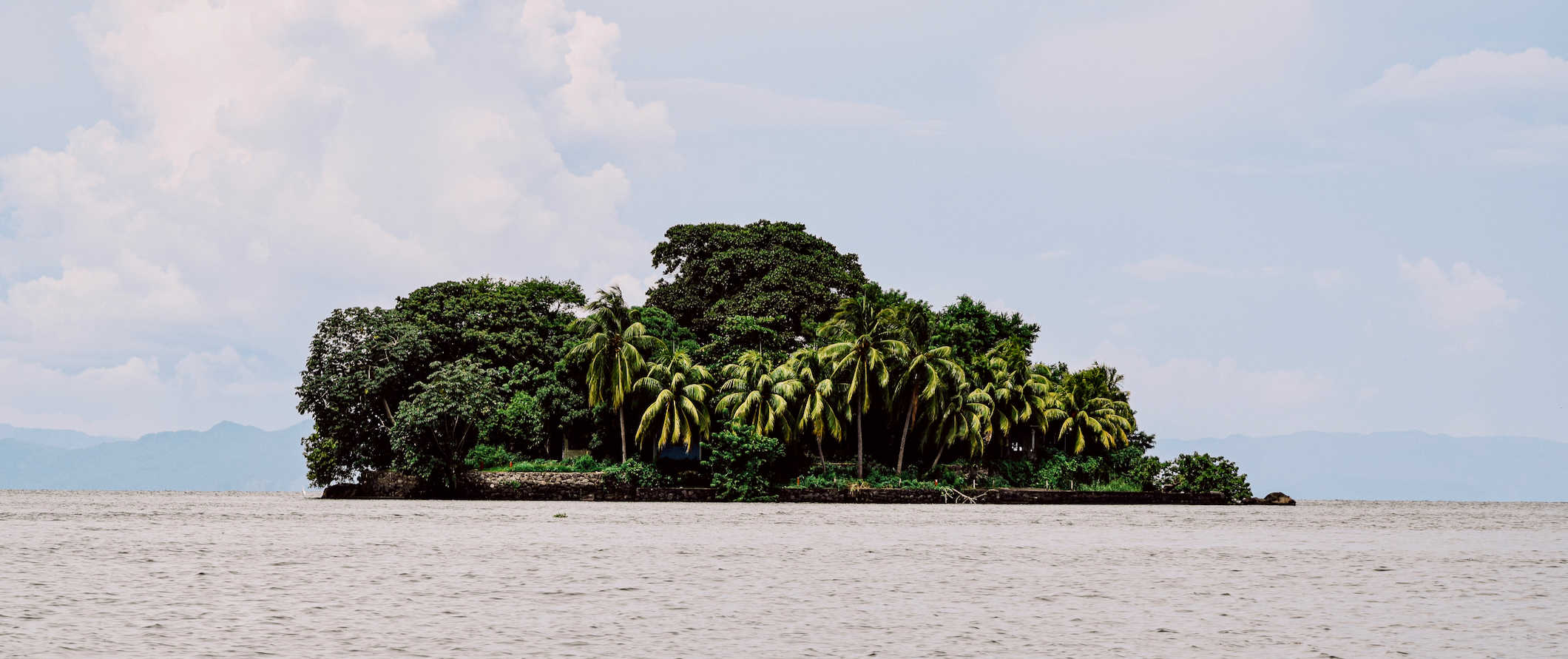
1. Visit Little Corn Island
This archipelago off the Caribbean coast is one of the best places to relax in the country. It boasts diving with hammerhead sharks and underwater caves, fresh seafood, and plenty of hammock downtime on deserted beaches (invest in a good hammock if you’re serious about your R&R). Don’t miss Otto’s Beach.
2. Relax in San Juan del Sur
This picturesque surfer paradise is fringed with prehistoric volcanic hills and was the first destination to put Nicaragua on the map. Backpackers flock here in droves to surf and party under the stars. It’s a must-visit destination in the country!
3. Admire colonial Granada
Nicaragua’s oldest city is revered as the colonial jewel of Central America. Many of the pastel-painted buildings have been meticulously restored. Bask in Granada’s historic grandeur as you weave through the cobblestone streets, visit local art galleries, and sip on a coffee in a plaza.
4. Tour León
From world-class museums, Central America’s largest cathedral, and other beautiful monuments to a lively party scene fueled by the ample student population, León is one of my favorite places in the country. Sample the best roadside quesillo and see the local artists who give the city its eccentric flavor.
5. Explore Ometepe Island
Spend your days hiking, kayaking, or cycling around the island, spotting howler monkeys and archeological ruins in the process. Two of the two volcanoes here (Concepción and Maderas) offer strenuous 8-10-hour hikes. Guides are mandatory and cost 530 NIO.
Other Things to See and Do in Nicaragua
1. hike miraflores.
Miraflores national park was the highlight of my entire trip. Located in Estelí in northern Nicaragua, this is a stunning cloud forest with rivers and waterfalls. You can take day-hikes or multiday treks to the park (the multiday trips enable you to stay with local host families in small communities) and there are also programs to help you learn to farm. The one-day trek that I did ran from 7am-4pm and cost 550 NIO which included two meals and a mandatory guide. An extra bonus that I loved is that all the money goes back into supporting the community and farmers.
2. Explore Rio San Juan
This river is a wonderful stopover for nature enthusiasts looking to go kayaking, fishing, and wildlife watching. Despite the surge in eco-tourism in the region, accommodation options are still no-frills and very low-key, with Wi-Fi and phone coverage being scarce. Most tours leave from San Carlos, which is located at the mouth of the river on Lake Nicaragua.
3. Hike a volcano
Nicaragua has 19 volcanos (9 of which are active). The two peaks on Ometepe –– Concepcion and Maderas –– are the two most popular day hikes in the country. Concepción, towering at 1,600 meters (5,249 feet) is a baking hot hike, so bring lots of sunblock and water. Maderas is easier but muddier, with a lake at the summit. Cerro Negro (near León) offers a comfortable sandy route from top to bottom and is also well-known for “volcano surfing.” Masaya Volcano is the most active volcano in Nicaragua and you can actually see the lava bubbling there (visits are limited to 10 minutes due to the fumes). For people wanting a challenge, try San Cristobal, Nicaragua’s highest volcano. If you’re hunting for scenic Insta-worthy views, hike to Telica (also within easy reach from León) for a spectacular sunset (you can actually camp at the top).
4. Relax at Lake Apoyo
Laguna de Apoyo is a breathtaking body of water that sits upon the Apoyo volcano crater near Granada. This 200-meter-deep lake is the perfect spot for swimming, kayaking, fishing, and sailing. Hostels offer day trips from Granada for around 300 NIO, which include a return shuttle and include use of another hostel’s facilities, kayaks, and tubes on the lagoon. You can also visit independently and stay overnight if you want a longer visit.
5. Tour a coffee plantation
Coffee is Nicaragua’s primary export and Jinotega, the misty and mountainous northern region, produces over 80% of the country’s output. You can organize a coffee tour in any of the eco-lodges/hostels dotted around the region. I particularly liked Eco Albergue La Fundadora. Even though I don’t drink coffee, it’s a fascinating and important industry in the country (and region) and worth learning about.
6. Relax at the Pearl Cays
The remote string of crescent-shaped playas that make up the Pearl Cays (pronounced “Pearl Keys”) offer some of the best Caribbean beaches in Nicaragua. Unfortunately, due to climate change, this stunning collection of white islands is steadily shrinking. Located near the Corn Islands, there are currently only 10 left from the original 18. Accommodation on the island is super exclusive and very pricey. However, day trips by shared speedboat can be easily arranged to make visits affordable. Private boats start from around 8,800 NIO and fit up to 10 people. Come here to snorkel, swim, and lounge away the day.
7. Visit the Bosawas Biosphere Reserve
Bosawas is the second-largest rainforest in the Western Hemisphere and is home to jaguars, tapirs, spider monkeys, harpy eagles, and more. A huge chunk of the country’s bird population — 600 out of 790 species — are located here, making it the prime spot for wildlife and bird watching. Multi-day trips, where you can truly immerse yourself in the wilderness, hike cloud forests, swim in waterfalls, and meet Mayangna and Miskito indigenous communities start at around 12,000 NIO per person.
8. Explore the Solentiname Archipelago
Isolated on the southwest tip of Lago de Nicaragua, the Solentiname Archipelago is a cluster of 36 islands revered for their pristine collections of primitive art, birdlife, and laid-back lifestyle. It’s best to base yourself in Mancarrón and organize day trips to other neighboring islands throughout your stay. It’s roughly a four-hour drive from Managua to San Carlos and then and then a two-hour boat ride to the dock in Mancarrón. There are no ATMs to be found on the islands so bring plenty of cash.
9. Shop at the Masaya Markets
Stock up on rum, coffee, hammocks, and ceramics at the Masaya Markets in Masaya National Park near Managua. Barter your way through the markets and soak up the colorful atmosphere. While there is a lot of tourist junk here, there are still plenty of artisanal handmade crafts as well. On Thursdays, a weekly ‘Night of Revelry’ features traditional dancing, local food, and music. The market is just thirty minutes from Managua.
10. Visit the stone carving hermit
Near Estelí in the north you can find Alberto the hermit. He’s been living here for almost 40 years, carving stone figures and sculptures in the jungle. He’s eccentric, kind, and incredibly knowledgeable about the flora and fauna in the region. Stop by to see his carvings and learn about his life in the jungle. Here’s a video of my visit .
11. Check out the Isletas de Granada
Southeast of the city of Granada in Lake Nicaragua, you can find the Isletas de Granada (Grenada Islets). There are around 365 of these volcanic islands, some of which are inhabited. A few have hotels on them or you can take a one-hour boat ride around them to admire their pristine beauty (it costs around 1,400 NIO for a boat that can take 8 people).
12. See Somoto Canyon
Dating back to the Miocene epoch (23-25 million years ago), Somoto Canyon is a relatively unexplored part of Nicaragua. Located near the border with Honduras, it was discovered by Czech and Nicaraguan scientists in 2004 and, since then, its spectacular walls and clear water have become a popular tourist destination. Activities here include hiking, boating, and scaling the canyon walls. The narrowest part of the canyon can only be reached by swimming or by tubing. Somoto Canyon Tours offers a variety of tours lasting from 3-6 hours with prices starting at 880 NIO.
13. Do a homestay/Learn Spanish
If you have a bit more time to spend in Nicaragua, there are lots of opportunities to volunteer, learn Spanish, and farm by taking part in a homestay (Estelí, Ometepe, and León are popular destinations for this). Hostels and tourist offices in any of the big cities can help you arrange it.
Nicaragua Travel Costs
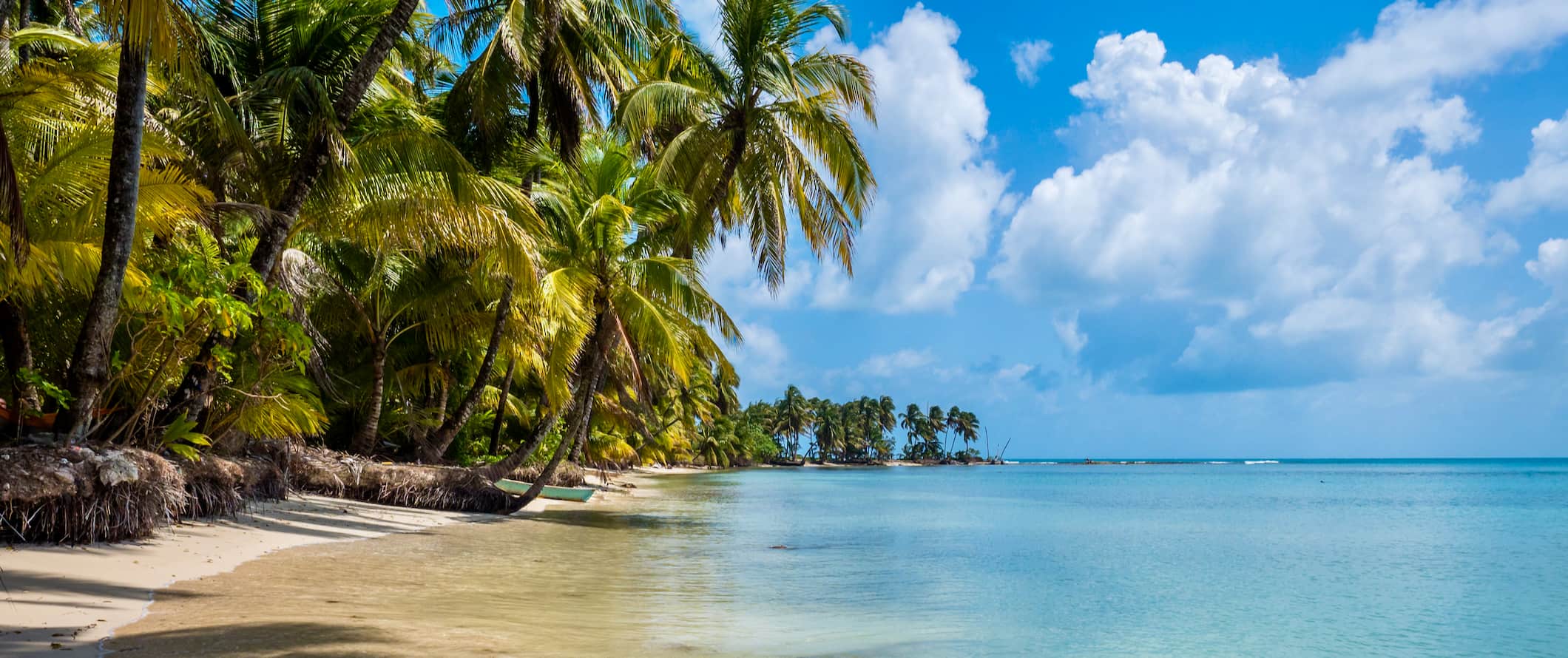
Accommodation – Small 6-8-bed dorms generally cost around 250-350 NIO per night, with private rooms costing between 700-1,700 NIO. Free Wi-Fi and free breakfast are common and many hostels also have a swimming pool.
For a budget two-star hotel, expect to pay between 1,000-2,600 NIO for a double room including breakfast. Expect basic amenities such as Wi-Fi, A/C, a TV, and sometimes a swimming pool.
Airbnb is available on Nicaragua’s Pacific coast as well as in Grenada and Managua (there are no rentals on the Atlantic side). You can score a great beachfront property from 2,800-4,200 NIO depending on group size and house style. For a private room, expect to pay at least 880 NIO per night.
Food – Beans, rice, and meat are the backbone of most meals in Nicaragua. Grilled chicken, pork, and beef are common options (especially for street food). Gallo pinto (fried rice and beans) is the go-to breakfast and dinner meal, with an egg often being added for the breakfast option. Be sure to try the popular quesillo , a tortilla wrapped around white cheese smothered cream, and nacatamales , a tamale made from maize dough stuffed with pork and potato.
A typical lunch, eaten in a comedor (local eatery serving tradition cuisine), or street stall costs between 100-175 NIO. Nicaraguans are more accustomed to dining out for lunch so travelers can expect to see fewer evening options available in non-touristy spots.
On the coast, seafood is the main staple so expect a lot of grilled fish. On the Caribbean side, the cuisine is heavily influenced by Caribbean culture as well.
A meal at a restaurant serving local cuisine costs around 345-520 NIO for a three-course meal with a drink.
The touristy towns and on the coast have more international cuisine options. Expect to pay 800-1,200 NIO for a three-course meal in a mid-range restaurant. A large pizza costs around 270-350 NIO. For fast food (think McDonald’s), expect to pay around 210 NIO for a meal.
A domestic beer or latte/cappuccino costs around 30-90 NIO.
If you’re buying a week’s worth of groceries, expect to pay between 1,100-1,300 NIO for basic staples like rice, beans, seasonal produce, and some meat or fish.
Backpacking Nicaragua Suggested Budgets
On a backpacking budget of 1,100 NIO per day, you can stay in a hostel dorm, use public transportation and chicken buses to get around, limit your drinking, cook all of your meals, and enjoy free and cheap activities like free walking tours and lounging on the beach.
On a mid-range budget of 2,800 NIO per day, you can stay in a private Airbnb or hostel room, eat out for most meals, enjoy a few drinks, take the occasional taxi or coach between cities, and do more paid activities like diving or guided day hikes.
On a “luxury” budget of 8,200 NIO per day or more, you can stay in a hotel, eat out anywhere you want, drink as much as you’d like take domestic flights to get around, and do whatever tours and activities you want. This is just the ground floor for luxury though. The sky is the limit!
You can use the chart below to get some idea of how much you need to budget daily, depending on your travel style. Keep in mind these are daily averages — some days you’ll spend more, some days you’ll spend less (you might spend less every day). We just want to give you a general idea of how to make your budget. Prices are in NIO.
Nicaragua Travel Guide: Money-Saving Tips
Nicaragua is one of the cheaper countries in the region but prices are rising quickly as it becomes more of the “it spot” to retire and work remotely from. Here are some of the best ways to save money during your trip:
- Take the chicken bus – Chicken buses (crowded local buses that make multiple stops) are the cheapest way to travel. You can save big time if you’re willing to trade A/C and cushioned seating to travel on a decommissioned school bus for a few hours. For example, the 3.5-hour trip from Granada to Rivas costs just 70 NIO!
- Refill your water bottle – The tap water here is not safe to drink so make sure you have a reusable bottle with you. To stay safe, bring a water filter like LifeStraw to ensure your water is clean and safe!
- Use the right currency – Pay with US dollars in bigger cities and save your córdobas for purchases at small businesses in rural areas and villages since they won’t have change for larger USD bills.
- Bring cash – Cards are accepted in major establishments and big cities. However, electricity can be fickle on the coast so it’s best to carry plenty of cash in case you’re caught out in a blackout.
- Learn some Spanish – Inflated tourist prices are common here. To avoid getting overcharged, learn some Spanish. Even just a few words and phrases can help you avoid being overcharged.
- Travel during the shoulder season – Prices are highest during the dry months (December-April). To avoid the crowds and save money, travel during the rainy season or shoulder season. You might get rained on, however, accommodation and activities are cheaper.
- Choose less-traveled routes – Prices for activities and accommodation plummet when you leave the tourist triangle (Granada, León, and San Juan del Sur). Nicaragua is the largest country in Central America so don’t be afraid to think outside the box and venture off the beaten path.
- Share private taxis – If you’re traveling in a small group, a taxi can often work out cheaper and more time-efficient than a bus or shuttle. Negotiate the price beforehand and ask your hostel for the normal rates so you have a reference.
Where to Stay in Nicaragua
If you’re looking for places to stay during your visit, here are some of my favorites:
- Hola Ola Hostel (San Juan del Sur)
- Viavia Leon (León)
- De Boca en Boca (Granada)
- Managua Backpackers Inn (Managua)
How to Get Around Nicaragua
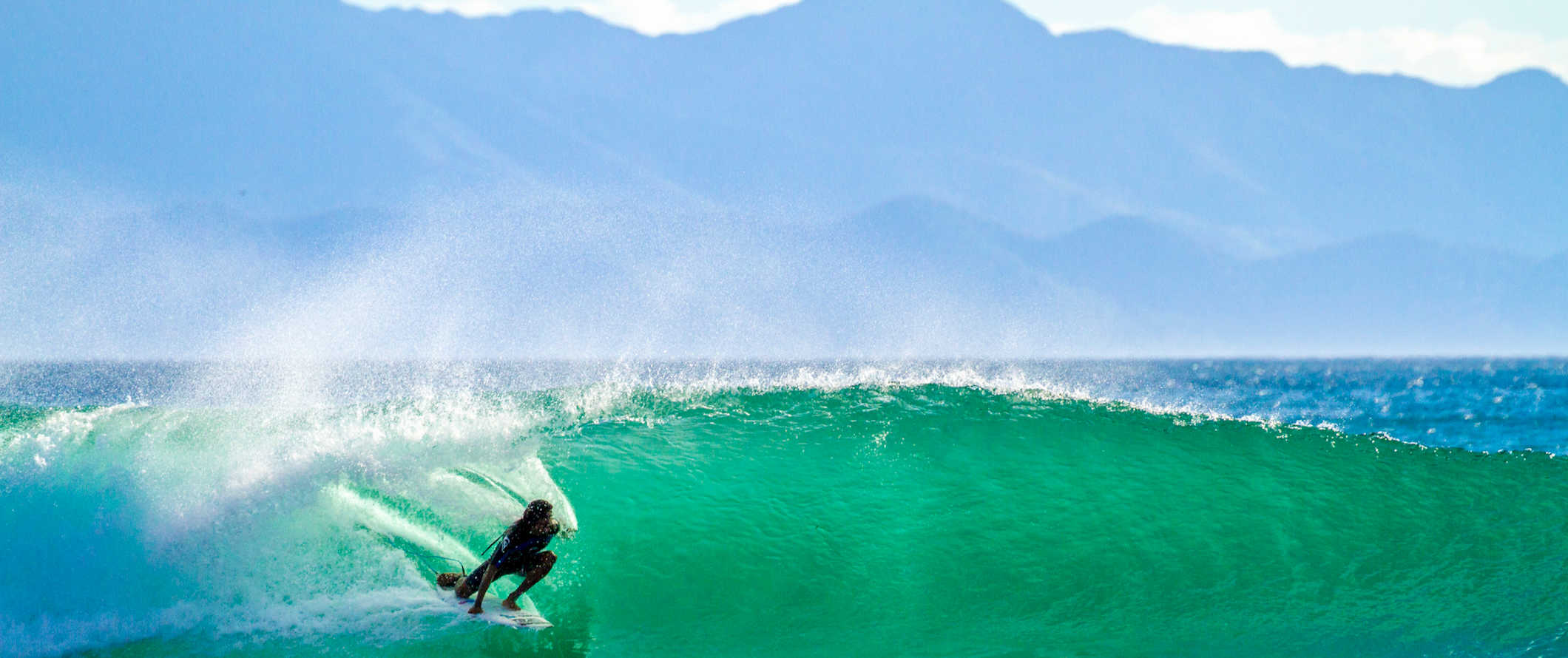
Bus – Chicken buses (i.e. converted school buses) are the cheapest way to get around. They are slow and stop often but have dirt cheap prices (around 35 NIO per hour of travel).
If you’re looking for a more comfortable journey, book with a coach company or private mini-shuttle, the latter of which are air-conditioned with cushioned seating and have storage room for your luggage.
For private mini-shuttles, expect to pay between 880-1,750 NIO per trip, however, you can try and buddy up with other hostel guests to drive down the price since it’s a private booking.
Most of the large cities have public transportation with local bus tickets costing under 6 NIO.
Air – La Costeña, Nicaragua’s domestic carrier, is based out of Managua and serves most of the country. Even if you’re keeping spending to a minimum, you have to take a flight if you want to visit the Corn Islands. Return tickets from Managua to the Corn Islands cost 5,700 NIO. For the 2.5-hour flight from Managua to Bluefields, expect to pay at least 4,500 NIO.
Train – There are no trains in Nicaragua.
Car Rental – A 4WD is recommended if you’re planning to visit rural areas as the roads here can be rough. Prices start from around 1,400 NIO per day for a multi-day rental. You’ll need an International Driving Permit (IDP) and you’ll definitely want to have extra insurance too.
When to Go to Nicaragua
There are two distinct seasons in Nicaragua: the dry season, which falls between November-April, and the green (rainy) season which is from May-October.
To avoid the crowds and peak prices, visit during the rainy season. The rainier months also offer ideal surfing conditions and deserted beaches to enjoy the waves. Just keep in mind the Caribbean coast sees more rain than the Pacific. Expect daily highs around 30°C (86°F).
The San Sebastian festival in Diriamba runs between January 17th-27th and is an amazing way to celebrate a local fiesta, with colorful parades, traditional music, and street-side buffets filling up every corner.
Easter (Semana Santa) is when you can find most locals hitting the mountains or beaches with family and friends. Buses and hotels, particularly on the coast, fill up fast so be sure to book in advance if you’re visiting during this time. Note that cities are much quieter during this period and many local businesses adapt their opening times/hours and events to celebrate the religious holiday.
How to Stay Safe in Nicaragua
Nicaragua is one of the safest countries in Central America, though petty theft and robberies are still relatively common. For that reason, keep your belongings secure and out of sight at all times — especially on crowded public transportation.
Solo female travelers should feel safe here when out during the day, however, they will want to avoid traveling alone after dark. Additionally, the usually standard precautions apply here as well (always keeping an eye on your drink at the bar, never walking home alone intoxicated, etc.).
If you rent a car, don’t leave any valuables in it overnight, and make sure to have suitable insurance just in case as break-ins can occur.
Scams are rare here, but they do happen. Be wary of random strangers asking for medicine or other financial assistance. Just politely decline and be on your way. You can read about common scams to avoid here .
Inflated tourist prices are common in Nicaragua. To avoid getting overcharged, learn some Spanish. Even just a few words and phrases can help you avoid being overcharged
Many people come to Nicaragua to party as drugs and alcohol are both cheap and abundant. However, the fines and penalties for drug use are steep. Police often expect bribes that can cost of hundreds — if not thousands — of dollars. Police won’t hesitate to strip search you if they suspect narcotics so avoid using drugs here to stay safe.
Moreover, the drug trade contributes to deaths, instability, and unrest in the region. Don’t contribute to that.
Protests and clashes in the major cities aren’t uncommon. Should a protest occur during your visit, avoid the area and return to your accommodation. While you’re unlikely to be hurt, it’s better to be safe than sorry.
As always, keep your wits about you at night time, particularly in the capital. Ask your hotel to call you a taxi in Managua (always negotiate the price before getting in the car), which can be an intimidating spot for travelers due to the lack of road names, tourists, and landmarks.
If you experience an emergency, dial 118 for assistance.
Always trust your gut instinct. Avoid isolated areas at night, and be aware of your surroundings at all times. Make copies of your personal documents, including your passport and ID, before you leave on your trip.
If you wouldn’t do it at home, don’t do it in Nicaragua!
The most important piece of advice I can offer is to purchase good travel insurance. Travel insurance protects you against illness, injury, theft, and cancellations. It’s comprehensive protection in case anything goes wrong. I never go on a trip without it as I’ve had to use it many times in the past.
Nicaragua Travel Guide: The Best Booking Resources
These are my favorite companies to use when I travel. They consistently have the best deals, offer world-class customer service and great value, and overall, are better than their competitors. They are the companies I use the most and are always the starting point in my search for travel deals.
- Skyscanner – Skyscanner is my favorite flight search engine. They search small websites and budget airlines that larger search sites tend to miss. They are hands down the number one place to start.
- Hostelworld – This is the best hostel accommodation site out there with the largest inventory, best search interface, and widest availability.
- Booking.com – The best all around booking site that constantly provides the cheapest and lowest rates. They have the widest selection of budget accommodation. In all my tests, they’ve always had the cheapest rates out of all the booking websites.
- Get Your Guide – Get Your Guide is a huge online marketplace for tours and excursions. They have tons of tour options available in cities all around the world, including everything from cooking classes, walking tours, street art lessons, and more!
- SafetyWing – Safety Wing offers convenient and affordable plans tailored to digital nomads and long-term travelers. They have cheap monthly plans, great customer service, and an easy-to-use claims process that makes it perfect for those on the road.
- LifeStraw – My go-to company for reusable water bottles with built-in filters so you can ensure your drinking water is always clean and safe.
- Unbound Merino – They make lightweight, durable, easy-to-clean travel clothing.
- Top Travel Credit Cards – Points are the best way to cut down travel expenses. Here’s my favorite point earning credit cards so you can get free travel!
Nicaragua Travel Guide: Related Articles
Want more info? Check out all the articles I’ve written on backpacking/traveling Central America and continue planning your trip:

Do You Need Travel Insurance for Costa Rica?

The Best Tour Companies in Costa Rica
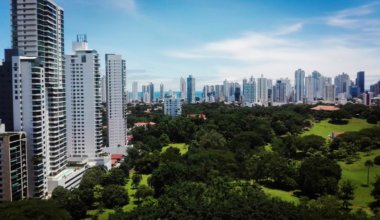
The 6 Best Hostels in Panama City, Panama
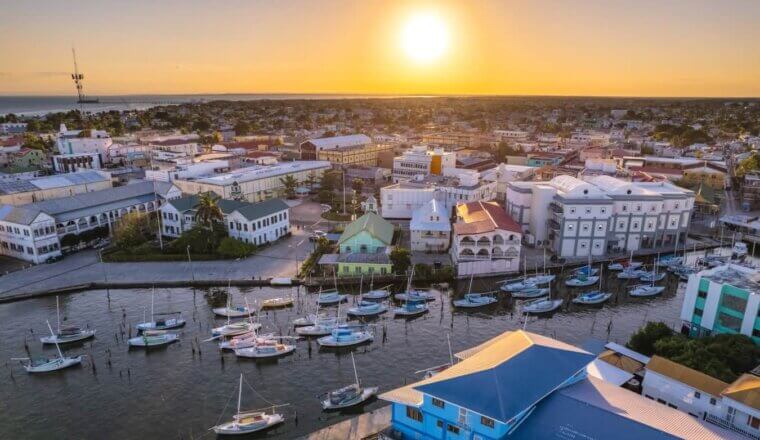
Is Belize Safe to Visit?

Is Central America Safe to Visit?
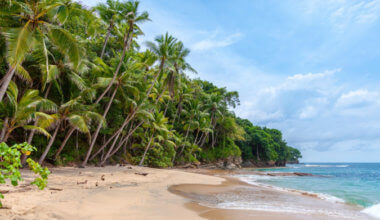
How to Get Around Central America on a Budget
Get my best stuff sent straight to you, pin it on pinterest.
- Where To Stay
- Transportation
- Booking Resources
- Related Blogs
First-timer’s guide to Nicaragua

Oct 10, 2023 • 6 min read

Nicaragua has retained its off-the-beaten-path feel ©adamdodd/Getty Images
Supported by
The largest country in Central America - dubbed the land of lakes and volcanoes - Nicaragua has retained its off-the-beaten-path feel, and much of it has been preserved rather than developed.
Whether you want to feast on gourmet local produce, taste top-notch rum, wake up and smell the organic coffee surrounded by Spanish-colonial architecture, lounge on idyllic white-sand beaches beneath swaying palms, clamber over – and surf down – active volcanoes, ride some big waves or go monkey-spotting in lush forests, Nicaragua has something for you.
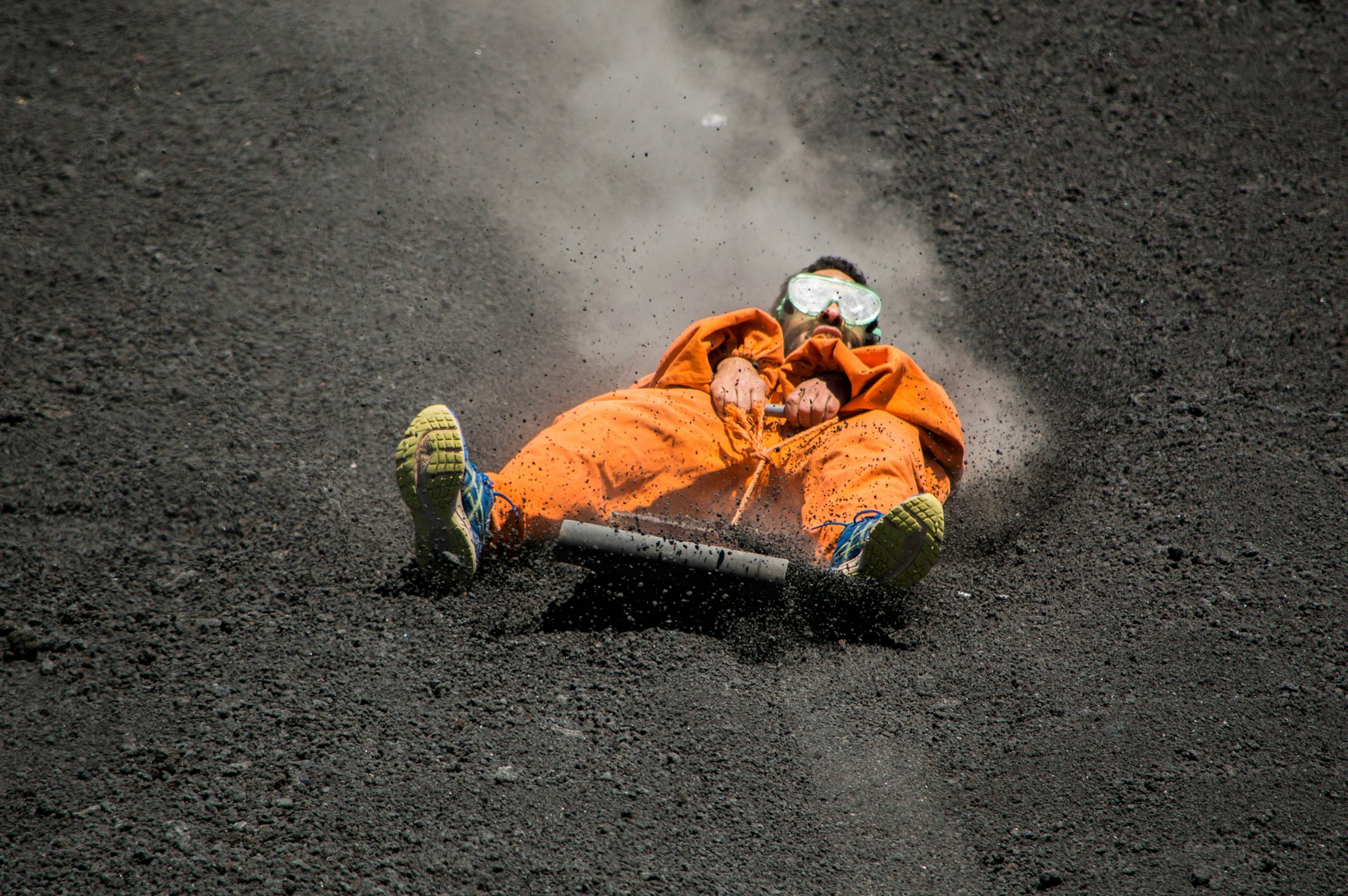
When should I go to Nicaragua?
Subtropical Nicaragua is a year-round destination with two distinct seasons: hot and dry from November to May and hot and wet from June to October, aka the "green season". The rains usually come in short, sharp bursts in the late afternoon, with plenty of sunshine the rest of the time; September and October are the wettest months.
Nicaragua is at its most popular (and most expensive) over Christmas, New Year and Easter, when towns and cities hold colorful religious festivals and Nicaraguans flock to the beaches.
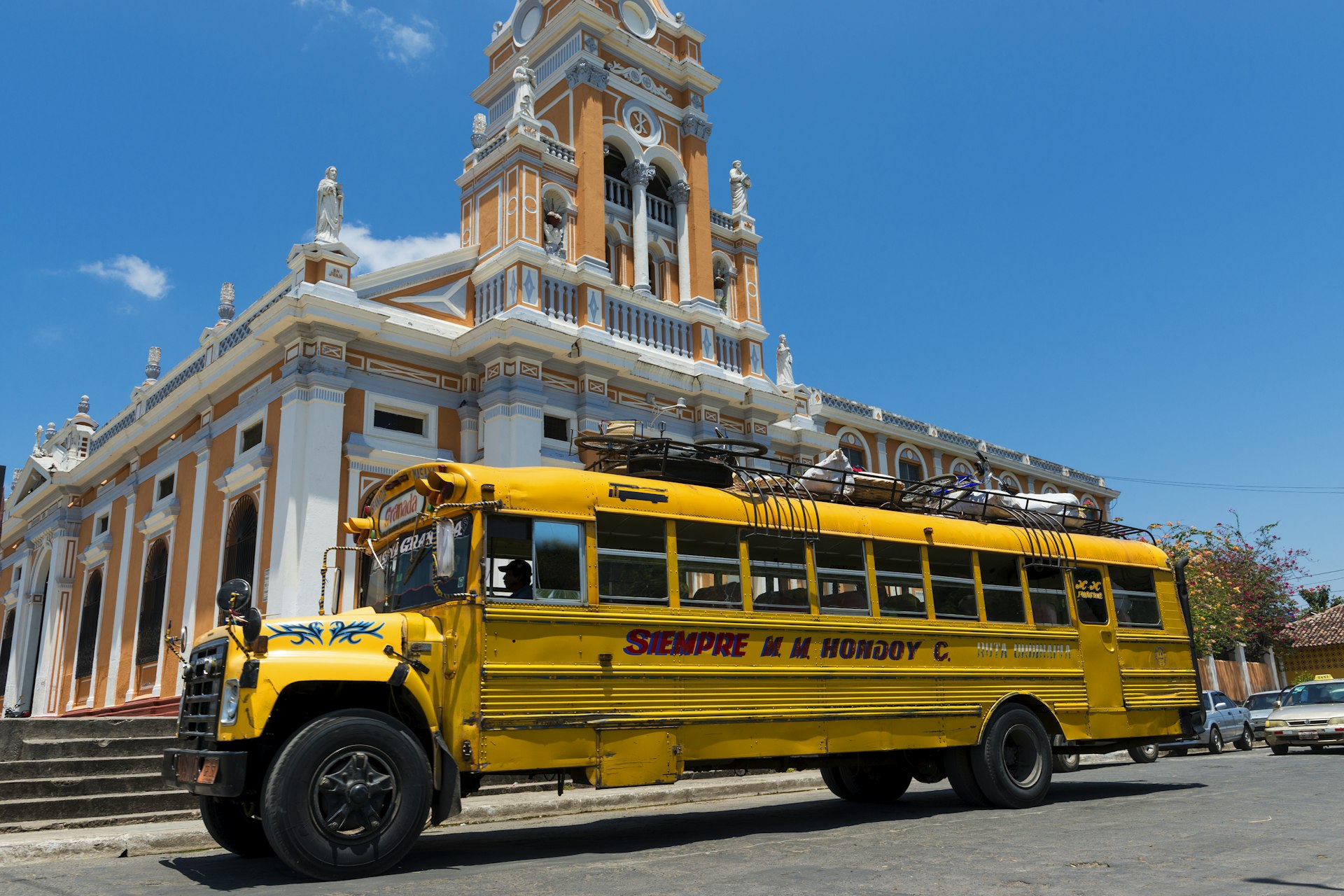
Is it easy to get to and around Nicaragua?
Nicaragua’s international airport is Augusto C. Sandino in Managua , and there are direct flights from Miami and Fort Lauderdale in the US , Mexico City and Panama City , and plenty of connecting flights.
If you’re traveling around Central America by bus, Transnica covers Costa Rica, Honduras, and Nicaragua, while Transporte del Sol operates in Guatemala, El Salvador, Costa Rica and Nicaragua.
You can also get around the country on local buses, whether "chicken buses" – reinvented North American school buses that rattle along at breakneck speed – or good-value long-distance coaches that are reasonably comfortable.
La Costeña offers daily flights from Managua to Great Corn Island and ferries cross Lake Nicaragua to Isla de Ometepe and the Solentiname archipelago. Explore the historic centers of Granada and León on foot, but taxis are cheap and plentiful if you want to go further afield.
How long do I need in Nicaragua?
In a week, most visitors skip Managua and head straight to colonial-era Granada , on the shores of Lake Nicaragua. After you’ve explored the city, its lakes and volcanoes, take a puddle jumper to the Corn Islands, bus it to the beaches of San Juan del Sur, chill on the volcanic isle of Ometepe, or surf down an active volcano in Léon.
In two or three weeks, you could cover all the above and add on a visit to the lush Solentiname islands and their primitivist artists, or take a jungle journey along the Río San Juan , the watery frontier with Costa Rica. And with more time, you could brush up your Spanish at one of the many wallet-friendly schools.

Top things to do in Nicaragua
1. peer into a volcanic crater in granada.
Granada is one of Central America’s oldest and loveliest cities, all postcard-pretty plazas, ornate churches and cobbled streets lined with rainbow-coloured houses, where locals drag their rocking chairs onto the streets to catch up with their neighbors.
But you’re never far from nature. Spend an evening peering into Masaya Volcano’s crater as luminous orange molten lava bubbles away below you, discover its string of volcanic isletas (islets) by kayak, hike through – or zipline above – Mombacho Volcano’s cloud forest, cool off in the crater lake of Laguna de Apoyo, and visit the skilled artisans of Masaya and the Pueblos Blancos .
2. Ride the Pacific rollers
Stellar waves and wild beaches line Nicaragua’s Pacific coast, and it’s long been a haunt of surfers in the know . To the south, laid-back San Juan del Sur is surf-and-party central – the Sunday Funday Pool Crawl is a backpacker legend. But the surfing is better out of town – Playa Maderas , 20 minutes north, has the best beach break, while mellow Playa Remanso, 15 minutes south, is perfect for novices.
In Popoyo, around 75km (47 miles) to the north, the surf breaks have the most consistent swells for wave riders of all levels, with rentals and surf schools aplenty.
3. Surf down an active volcano
Adrenaline junkies can climb up and whizz back down the black ash slopes of still-rumbling Cerro Negro volcano on a specially designed board, hitting speeds of up to 100kph (60mph).
Nicaragua’s youngest volcano is a short hop from Léon , the northern colonial-era capital that’s home to the largest cathedral in Central America.
Léon has the buzzy feel of a university city, with eclectic museums including the Museo Histórico de la Revolución , and art, from the contemporary Museo de Arte Fundación Ortiz-Gurdián to street murals.
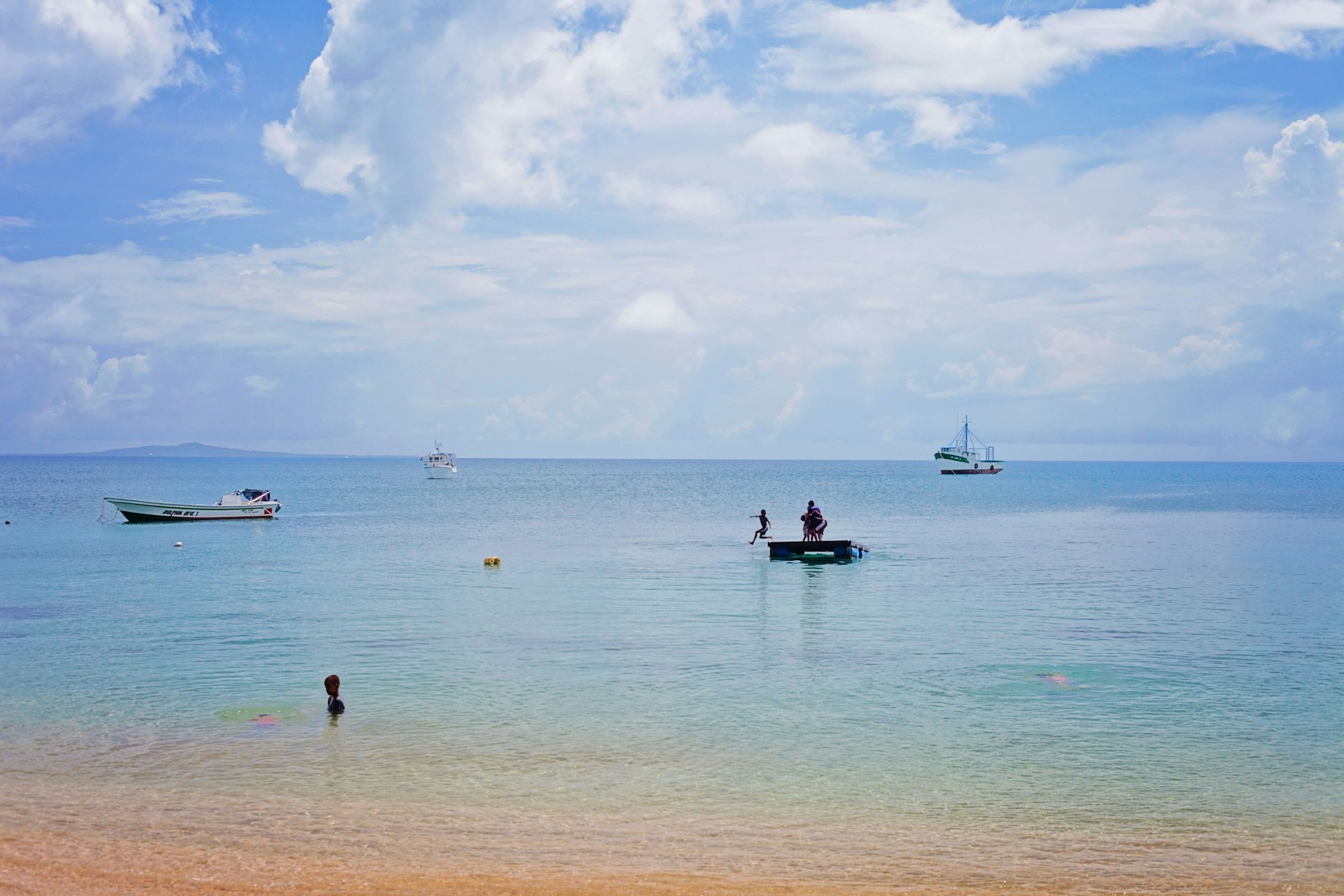
4. Kick back in the Caribbean
Around 70km (43 miles) off Nicaragua’s east coast, the pocket-sized Corn Islands tick all the Caribbean boxes – palm-fringed, icing-sugar sand beaches, gin-clear water and a chilled-out vibe – without the hefty price tag.
Car-free Little Corn is a short flight from Managua followed by a bouncy 40-minute boat ride from Great Corn. Snorkel and scuba the pristine reefs, flop into a hammock for a front-row view of the sunset, then dine feet-in-the-sand on just-caught fish to a reggae soundtrack.
5. Enjoy volcanic island life
The twin-coned volcanic Isla de Ometepe rises out of the silver-flat surface of Lake Nicaragua, and both fertile, dormant Volcán Maderas and rocky, fiery Volcán Concepción make challenging climbs.
Less strenuous is the beautiful cloud forest hike to the San Ramón waterfall , wildlife-watching from a kayak along the green-fringed Istián River, howler-monkey spotting at Reserva Charco Verde and hikes to ancient petroglyphs. Or tour a community-owned coffee finca or a tree-to-bar chocolate farm before a feast of organic farm-to-fork fare at Café Campestre .
My favorite thing to do in Nicaragua
I love tucking into Nicaragua’s one-of-a-kind dishes. Nacatamales are flavorsome parcels of corn dough stuffed with marinated spicy pork or chicken, rice, chilies, olives and more, all wrapped in a banana leaf and steamed.
Granada’s favorite street food is vigorón , an energy-boosting combination of boiled cassava and crispy chicharrones (fried pork rinds), topped with a tangy cabbage salad.
The country’s bountiful tropical fruits, such as mangos, guanábana (soursop) and calala (passion fruit), appear in batidas (shakes), top-notch coffee is grown on fertile volcanic slopes, while Flor de Caña’s 12-year-old naturally aged rum is rated one of the world’s finest. And now artisan chocolate makers, such as Argencove in Granada, are turning the country’s cacao into award-winning chocolate bars.

How much money do I need for Nicaragua?
Nicaragua is one of the cheapest countries in Central America. There’s accommodation to suit all budgets, from hostels and family-run guesthouses to eco-friendly boutique hotels and luxe resorts. Buses are a bargain, and you can fill up on street food, eat in a comedor (local restaurant) or splurge on fine dining.
- Hostel bed: from US$8
- Budget hotel room for two: from US$27
- Bus ticket: from US$1
- Dinner for two in a mid-range restaurant: from US$25
- Nicaraguan coffee: from US$2
- Local beer: from US$1.30
Is Nicaragua safe to visit?
Statistically, Nicaragua is the safest country in Central America after Costa Rica. Just take the same precautions you would at home. Don’t flash your cash or valuables in public places, and avoid isolated and dimly lit areas at night, especially if you’re alone – ask a local for advice on unsafe neighborhoods.
Order a radio taxi where possible, and if you rent a car don’t leave any valuables in it overnight. If you come across a demonstration, leave the area.
Editor's note: This article was sponsored by Nicaragua Tourism after the city was selected for Lonely Planet's Best in Travel 2024. Sponsors do not influence a destination's inclusion in Best In Travel, which is determined solely by Lonely Planet's editorial team.
Supported by Nicaragua Tourism
As a travel entertainment and inspirational media outlet, we sometimes incorporate brand sponsors into our efforts. This activity is clearly labeled across our platforms.
Funding for this story is provided by Nicaragua Tourism. All editorial views are those of Lonely Planet alone and reflect our policy of editorial independence and impartiality.
With sponsored content, both Lonely Planet and our brand partners have specific responsibilities:
Brand partner
Only provides financial support and their logo. Doesn't make revisions or approve the story.
Lonely Planet
We fully control the creative and editorial approach, just like any other featured story.
Explore related stories
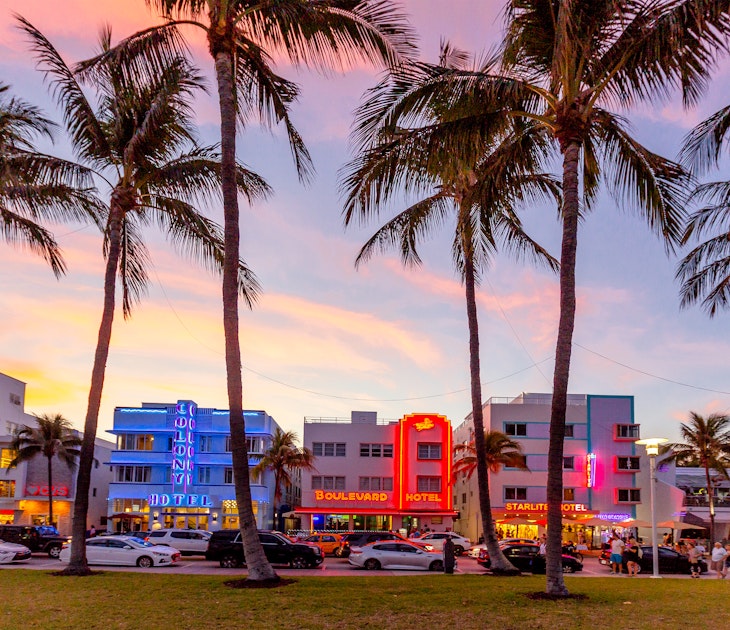
Festivals & Events
Apr 12, 2024 • 5 min read
Whether you’re into the beach life, sports, festivals or the arts, there's always something to do in the Magic City. Find out the best time to go to Miami.
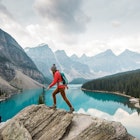
Apr 11, 2024 • 6 min read
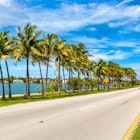
Apr 10, 2024 • 6 min read
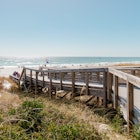
Apr 8, 2024 • 7 min read

Apr 8, 2024 • 6 min read
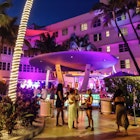
Apr 6, 2024 • 7 min read
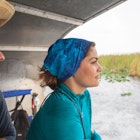
Apr 6, 2024 • 6 min read
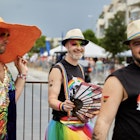
Apr 4, 2024 • 6 min read

Mar 30, 2024 • 4 min read
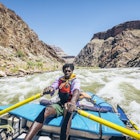
Mar 30, 2024 • 5 min read

IMAGES
VIDEO
COMMENTS
In addition, there are the Nicaraguan National flag and the FSLN flag proudly swaying next to the Sandino black statue. 7. Catedral Metropolitana Inmaculada Concepcion de Maria. Make sure to tell your taxi to go to the church in Plaza de la Revolucion if you want to visit the Antigua Cathedral de...
This is Managua's moment and here are the best things to see and do in the city. Chosen as the capital of Nicaragua in 1852 as a compromise to end the squabbling between the rival cities of Granada and Leon, Managua is a late bloomer that was tragically stopped in its tracks by a devastating earthquake in 1972, effectively leaving a hole ...
36. Speciality Museums. By Byronortega. AS well as the ruins of Leon viejo this is one of those sites if you can find a local english speaking guide to take... 12. Plaza La Fe. 4. Shopping Malls. Plaza La Fe is an upscale outdoor shopping plaza with exclusive restaurants, shops and bars in Managua, Nicaragua.
Tiscapa Lagoon Natural Reserve (Reserva Natural Laguna de Tiscapa) 10. Combine a bit of nature, a sprinkle of history, and the best view of Managua on a trip to the Tiscapa Lagoon—a crater lake, park, and nature reserve right in Nicaragua's capital. The area is perhaps best known for its massive Augusto Sandino statue, an iconic symbol of ...
Discover the best attractions in Managua including Museo Arqueológico Huellas de Acahualinca, Antigua Catedral, and Parque Histórico Nacional Loma de Tiscapa. ... Managua. The Managua branch of Nicaragua's oldest university (the original is in León, the former capital) was founded in 1958 and has more than 24,000 students.
Working hours: Typically open during daylight hours, from around 8:00 AM to 6:00 PM. Need time: Allocate at least 1-2 hours to leisurely explore the park and enjoy its serene ambiance. Cost to visit: Free entry for visitors to Parque Las Piedrecitas. Address: Parque Las Piedrecitas, Managua, Nicaragua.
2. The Cathedral of Santiago de Managua. The Cathedral of Santiago is one of the main symbols of the city of Managua Nicaragua. It is a building of colonial architecture and neoclassical style. It was built between 1928 and 1938, and without a doubt, it is one of the essential places to visit in Managua. 3.
Managua. Nicaragua, Central America. Stay a day or two and you will see that Managua truly is the heartstring that holds the nation's culture and commerce together. Skip it altogether, and you miss out on the revolutionary landmarks, vibrant dining and nightlife scenes and a slice of down-to-earth urban life that you're unlikely to see anywhere ...
Plan to visit pleasant Japon Nicaragua Park when holidaying with your family in Managua. This sprawling 8,000-square-meter (86,111.28-square-feet) park features a fascinating blend of Nicaraguan and Japanese cultures.
If you are driving to Managua Nicaragua from within Nicaragua, here are the travel times and distances: Masaya - 35 minutes (26km, 16miles) without tolls. Granada - 48 minutes (41km, 26miles) without tolls. Rivas - 1 hour 48 minutes (101km, 63miles) without tolls. León - 1 hour 50 minutes (94km, 58miles) without tolls.
Whether you are looking for a place to relax, explore, or take in the sights, Managua has something for everyone. From ancient ruins to modern attractions, here are the top 20 places to see in Managua, Nicaragua. 1. National Palace of Culture: Located in the heart of Managua, the National Palace of Culture is a must-see. This grand palace was ...
Loma de Tiscapa. In addition, there are the Nicaraguan National flag and the FSLN flag proudly swaying next to the Sandino black statue. 7. Catedral Metropolitana Inmaculada Concepcion de Maria. Make sure to tell your taxi to go to the church in Plaza de la Revolucion if you want to visit the Antigua Cathedral de...
Things To Do In Managua. There are several things to do in Managua that cater to different interests and preferences.. 1. Explore the Historic Center: Start your visit by exploring the historic center of Managua, which is home to several important landmarks and buildings. Visit the Plaza de la Revolucion to see the National Palace and the Ruben Dario National Theater.
Buses leave from the Huembres Market every weekday every hour from 7:00h to 17:00h and on weekends between 7:00h and 16:00h. Volcano in Managua, Nicaragua @pixabay. 2. Montibelli Private Nature Reserve. This nature reserve is famous in Managua Nicaragua for the great variety of birds that live in it.
Here are 15 incredible places you must visit in Managua: 1. Revolution Square. The Revolution Square, formerly known as the Plaza de Armas, is located in the historic centre of Managua. This is the setting where the revolutionary fighters took up arms to establish democracy.
3. Masaya Volcano Masaya Volcano. Protected in the country's largest national park, the Masaya Volcano is also one of Nicaragua's top places to visit, just 20 kilometers south of Nicaragua's capital city of Managua.. The most amazing part about visiting this active volcano is how close you can get to the lip of the crater in a private vehicle - you simply drive right up to the edge and park ...
14. Visit Apoyo Lagoon. Though lots of people visit Lake Nicaragua (the biggest and where Ometepe is), this lagoon near Managua is a nice spot to spend a day relaxing. This 200-meter-deep lake is the perfect spot for swimming, kayaking, fishing, and sailing.
3. Admire colonial Granada. Nicaragua's oldest city is revered as the colonial jewel of Central America. Many of the pastel-painted buildings have been meticulously restored. Bask in Granada's historic grandeur as you weave through the cobblestone streets, visit local art galleries, and sip on a coffee in a plaza. 4.
2. Ride the Pacific rollers. Stellar waves and wild beaches line Nicaragua's Pacific coast, and it's long been a haunt of surfers in the know. To the south, laid-back San Juan del Sur is surf-and-party central - the Sunday Funday Pool Crawl is a backpacker legend. But the surfing is better out of town - Playa Maderas, 20 minutes north ...
Things to Do in Managua, Nicaragua: See Tripadvisor's 25,126 reviews & photos of 118 Managua attractions.
1. Isla de Ometepe. A sunset from our hotel, Totoco Lodge on Ometepe. Isla de Ometepe is easily one of the most unique places to visit in Nicaragua. This small island is made up of not one, but two volcanos, and sits within Lake Nicaragua (Nicaragua's largest lake.)